#that's the kind of payoff the majority of this game is missing
Explore tagged Tumblr posts
Text
holy shit! iron bull betrayed me! see now this is the type of shit the game should have been full of. instead of acting like there was literally no effect on him from the biggest choice in his quest for ages. (though i do wish there was a cut scene where he's dying... maybe saying something in his last moments about how he has no regrets and he hopes he'll get to see his crew again...)
#dai#dragon age#the iron bull#better than average for this game for sure#yes i am trying to get through trespasser dlc so i can finally be done with this game#relief is not what you should feel when you finish a game... but alas#that part was cool though#he really did warn us he was a spy and then he was a spy and it was still surprising#he did tell us he can lie#he really can lie huh?#damn#i did not even remotely care about his character until that moment... but that was good...#that's the kind of payoff the majority of this game is missing
7 notes
·
View notes
Text
Hundred Line Last Defense Academy Ending 001: Minor SPOILERS

LONGPOST BELOW:
So on day 25 of this route, more than half of your team falls prey to a bad cold as an actual plot point of the story. This moment naturally got me super giddy x3


After one of the various blackouts the heaters shut off in everyone’s rooms. Causing a cold chill in everyone’s rooms for the night.
Takumi was awake to hear the warning and was able to warm up. I was thinking “wait are people gonna get sick over this? Hmm there’s no way right? Just wishful thinking on my part.”
But then Takumi wakes up the next morning and only 2 other people (Gaku and Takemaru) are in the cafeteria. When Nozomi shows up a bit later she asks:


Yeah everyone else forgot to bundle up at night. I was like LETS GOOOO!!! Everyone else is sick!!! It’s an actual canon moment!!


I like how Sirei says it's "probably" not serious, but it probably is serious... xD All anime colds are DEADLY after all :3c (they’re sick for 3 whole days if you don’t finish the medicine)
The next exploration mission involves getting the ingredients to make medicine for everyone. Which yeah I love that, its a good way to have a fixed team set off to gather materials.
Sadly to my disappointment, after making the medicine, that was it. No caretaking moments, they just distributed the medicine offscreen


I was so mad. This game has a majority of the team fall sick as a plot point. AND WITH NO PAYOFF.
Huge missed opportunity to not allow the player choose one specific person that they heal first, have a bonding scene, have their affinity raise by one full diamond, and THEN heal everyone else offscreen.
Like come ON at least give me something!! Everyone laid out with a deathly bad cold and having getting medicine be a mission. I love that. BUT WHERE’S MY CARETAKING SCENE?? I’m so greedy as an illness whump enthusiast, but with a scenario like this can you BLAME me??
So in my salt and need for closure I decided “FINE I’LL JUST DO IT MYSELF!!” So I got sprites of all of the people that were sick and made sick edits of them. Thought it would be fun to edit sprites again. (keep in mind, these are not only full body, but also more limited in expressions than the Raincode sprites so they were a BIT trickier to mess with.) I think I did decently tho.
Hope you enjoy some more sick edits from me :3
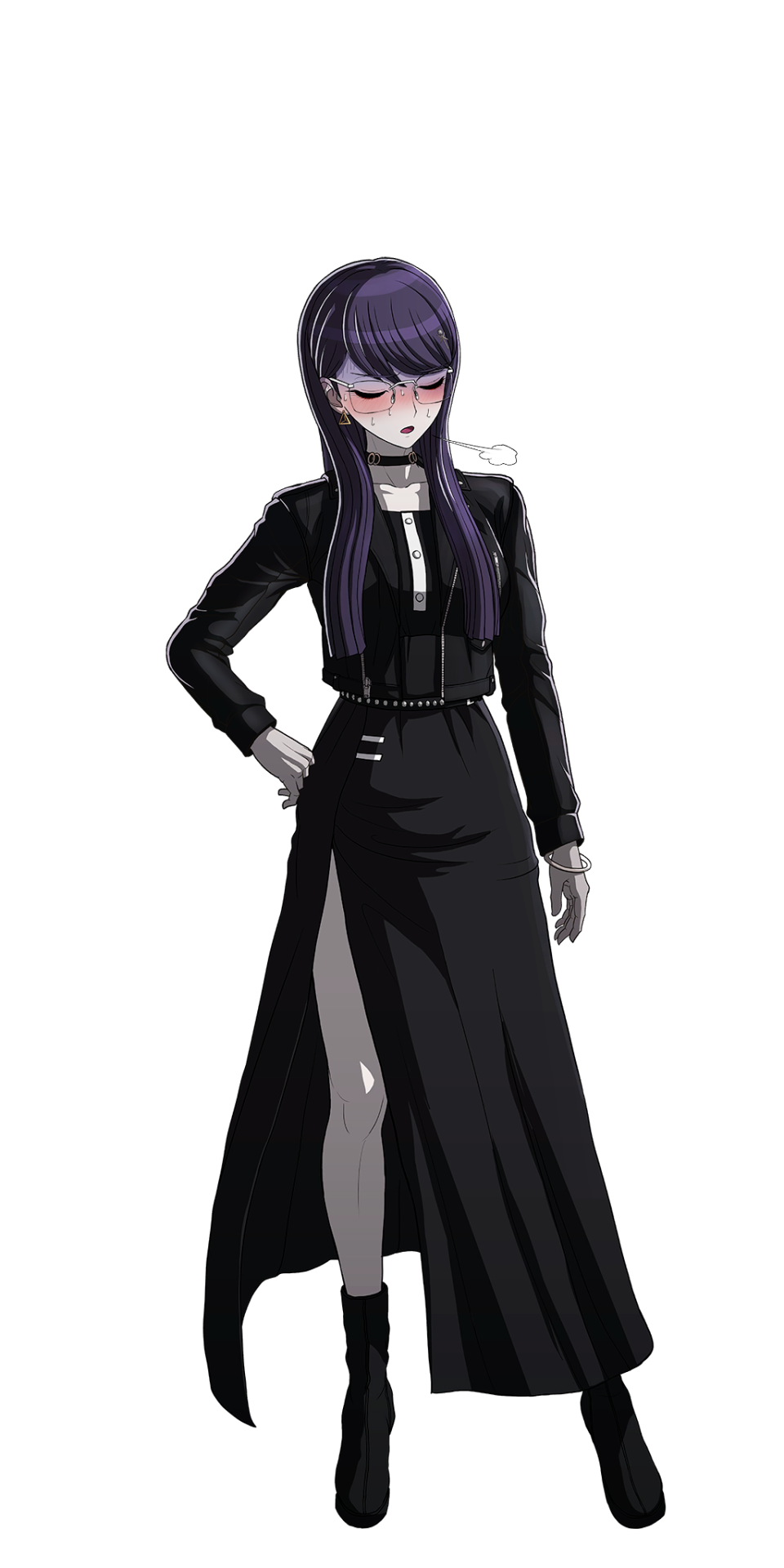
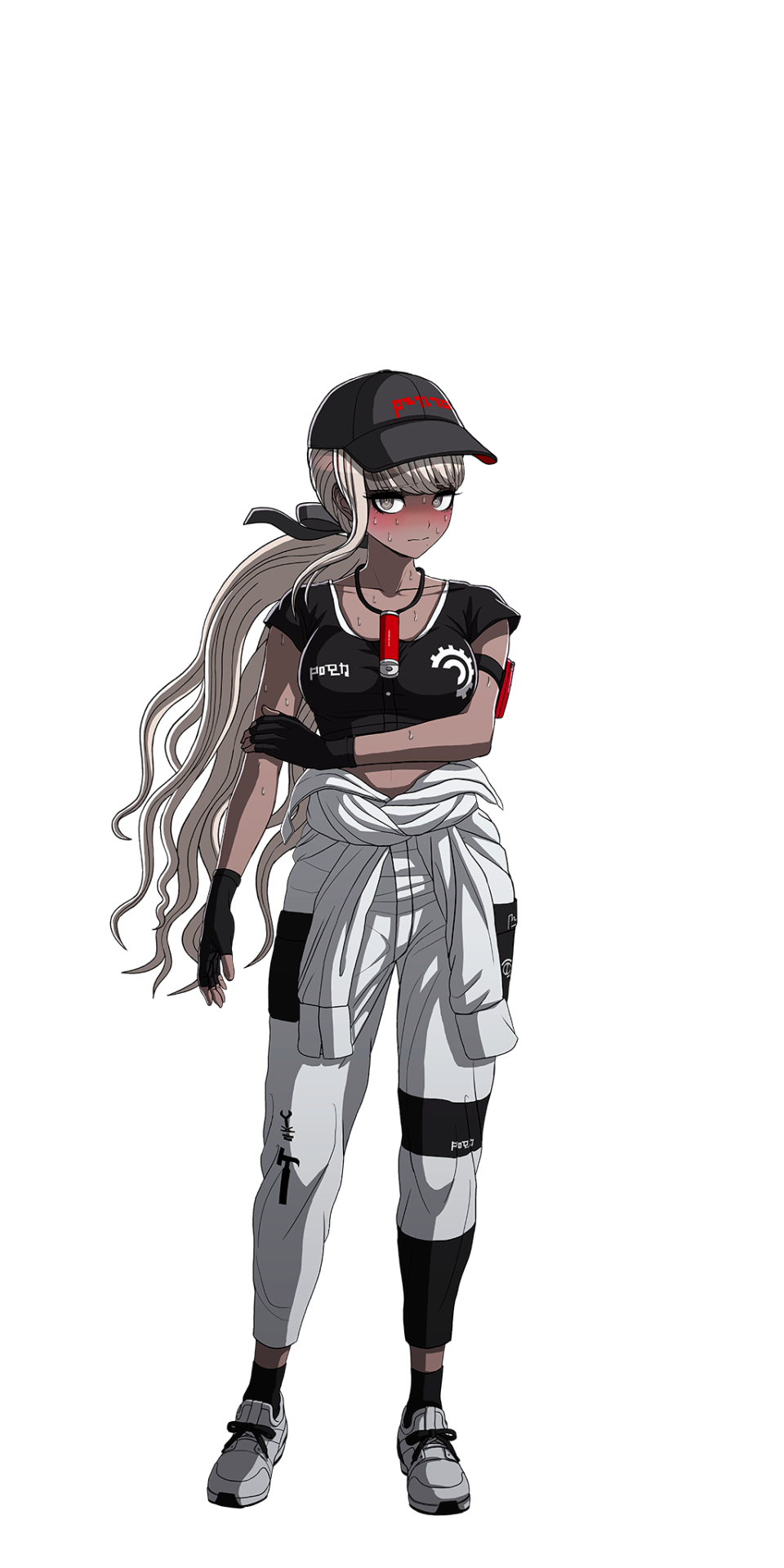

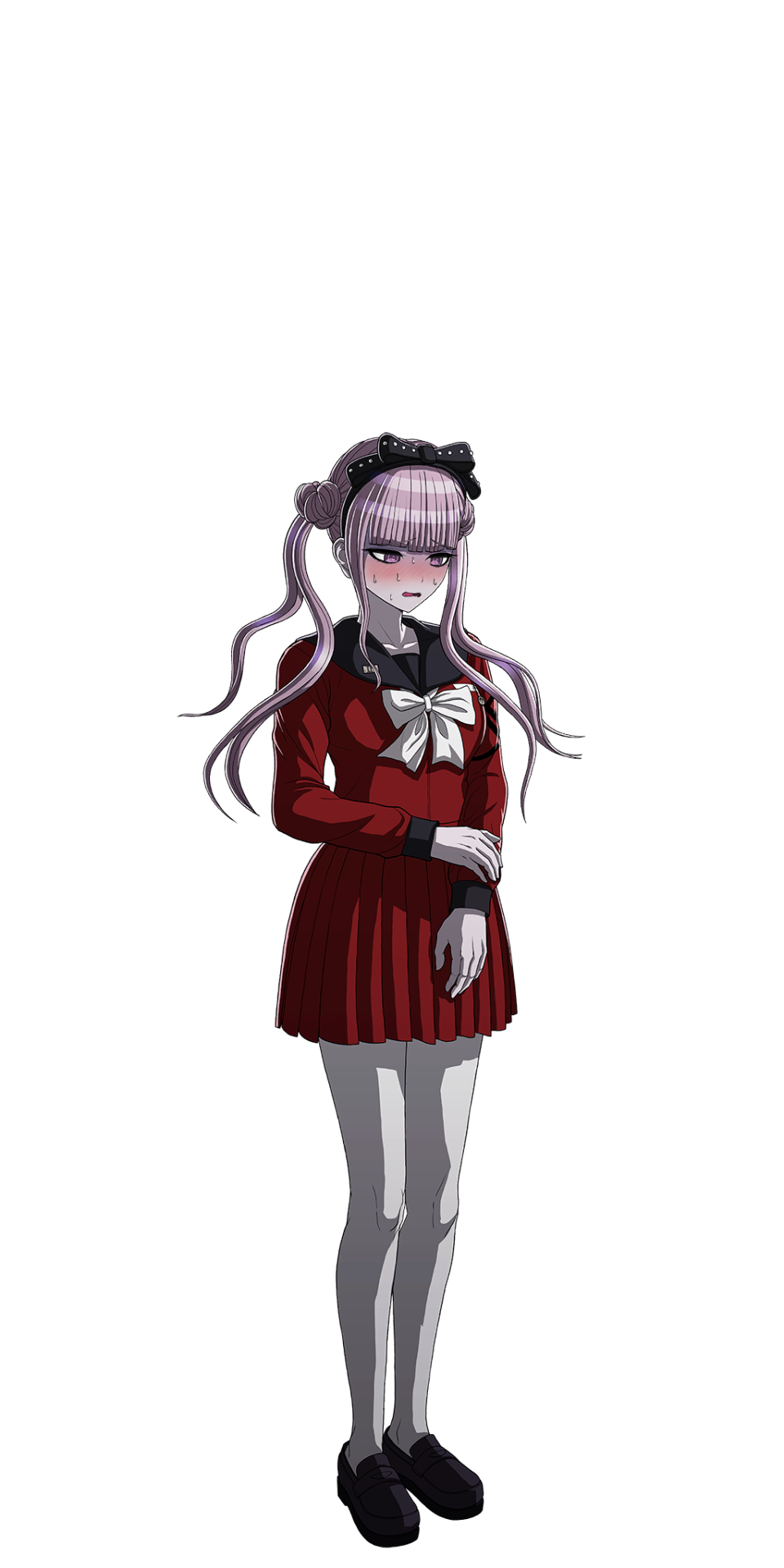
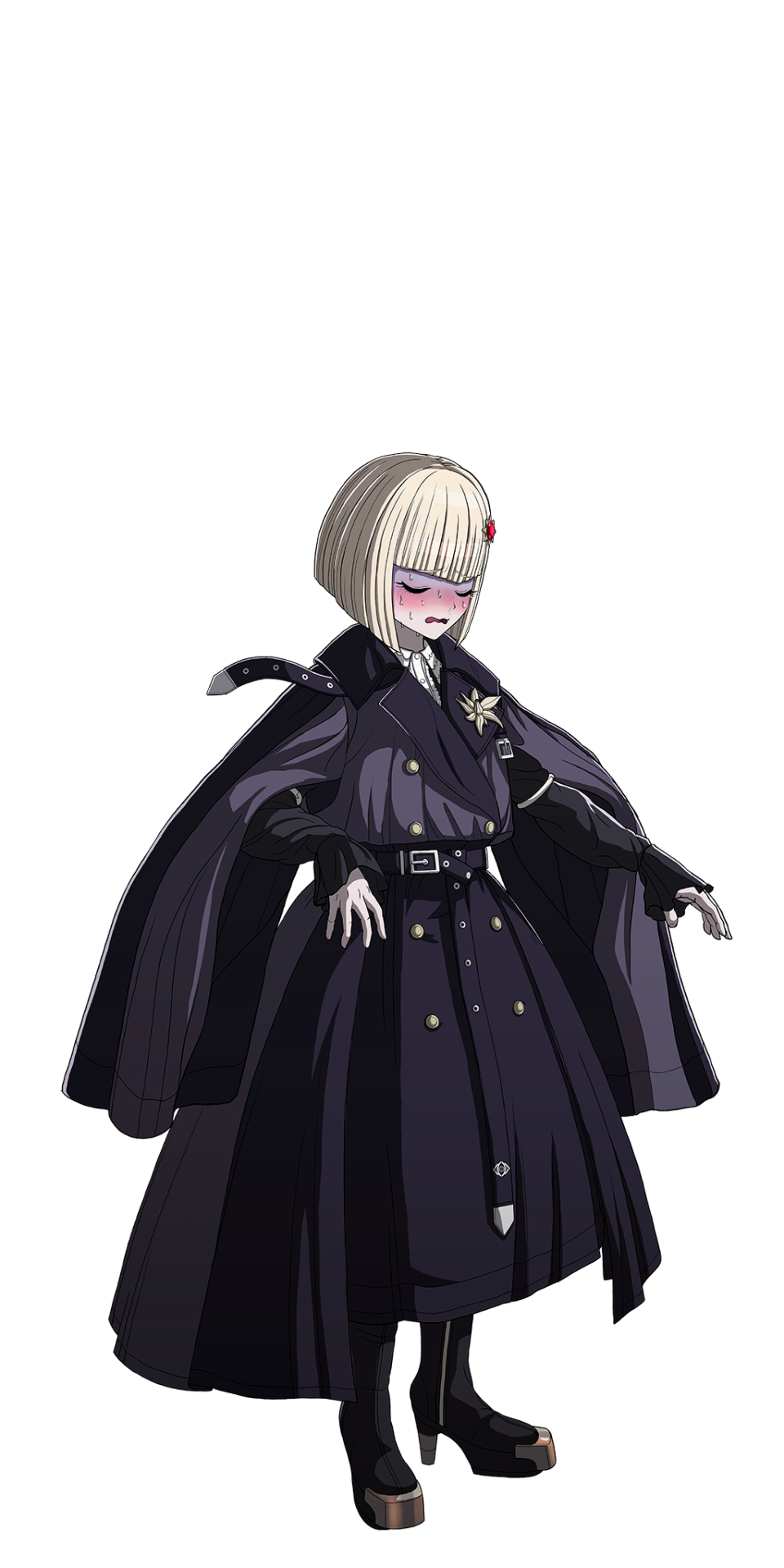
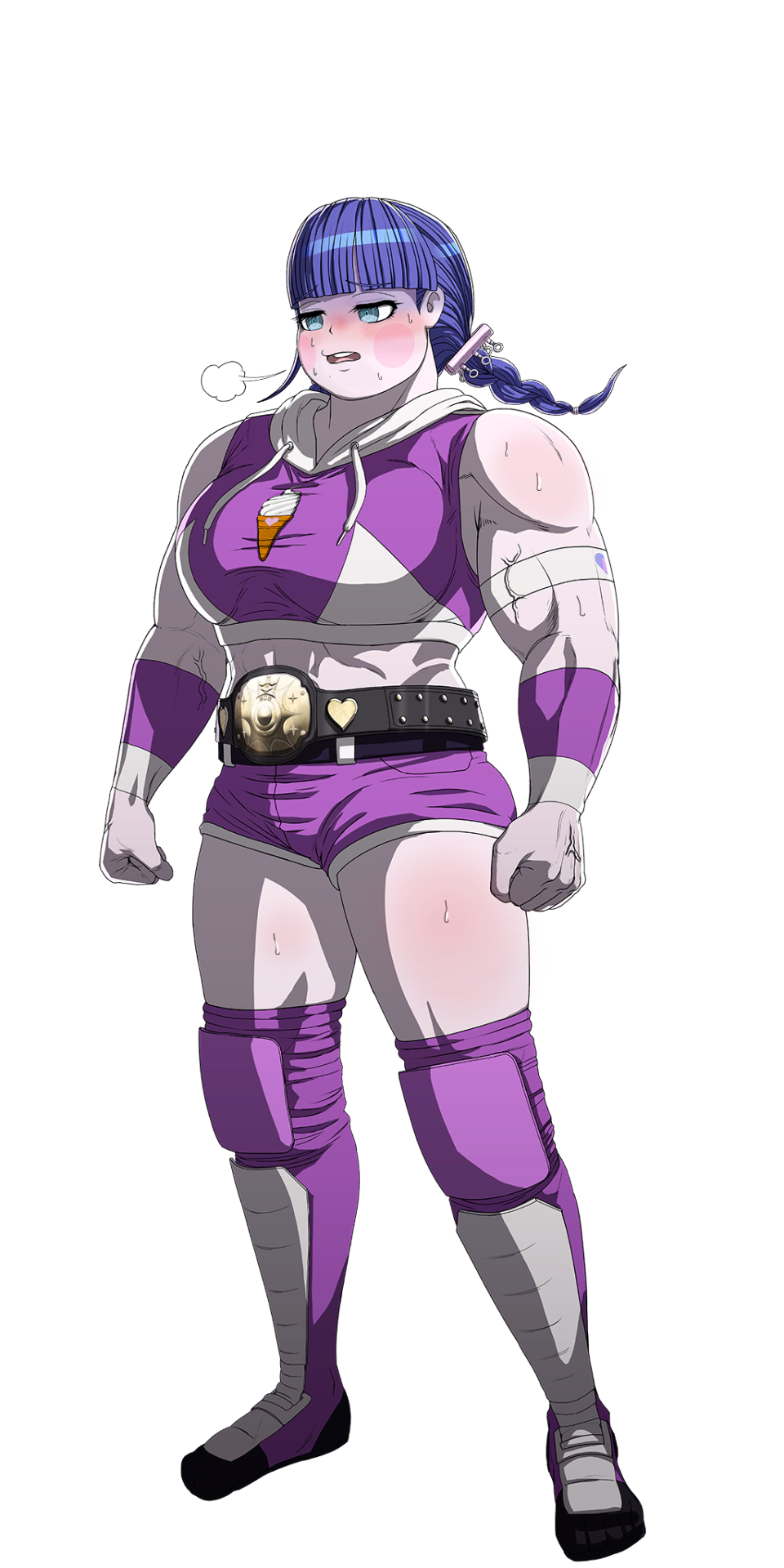
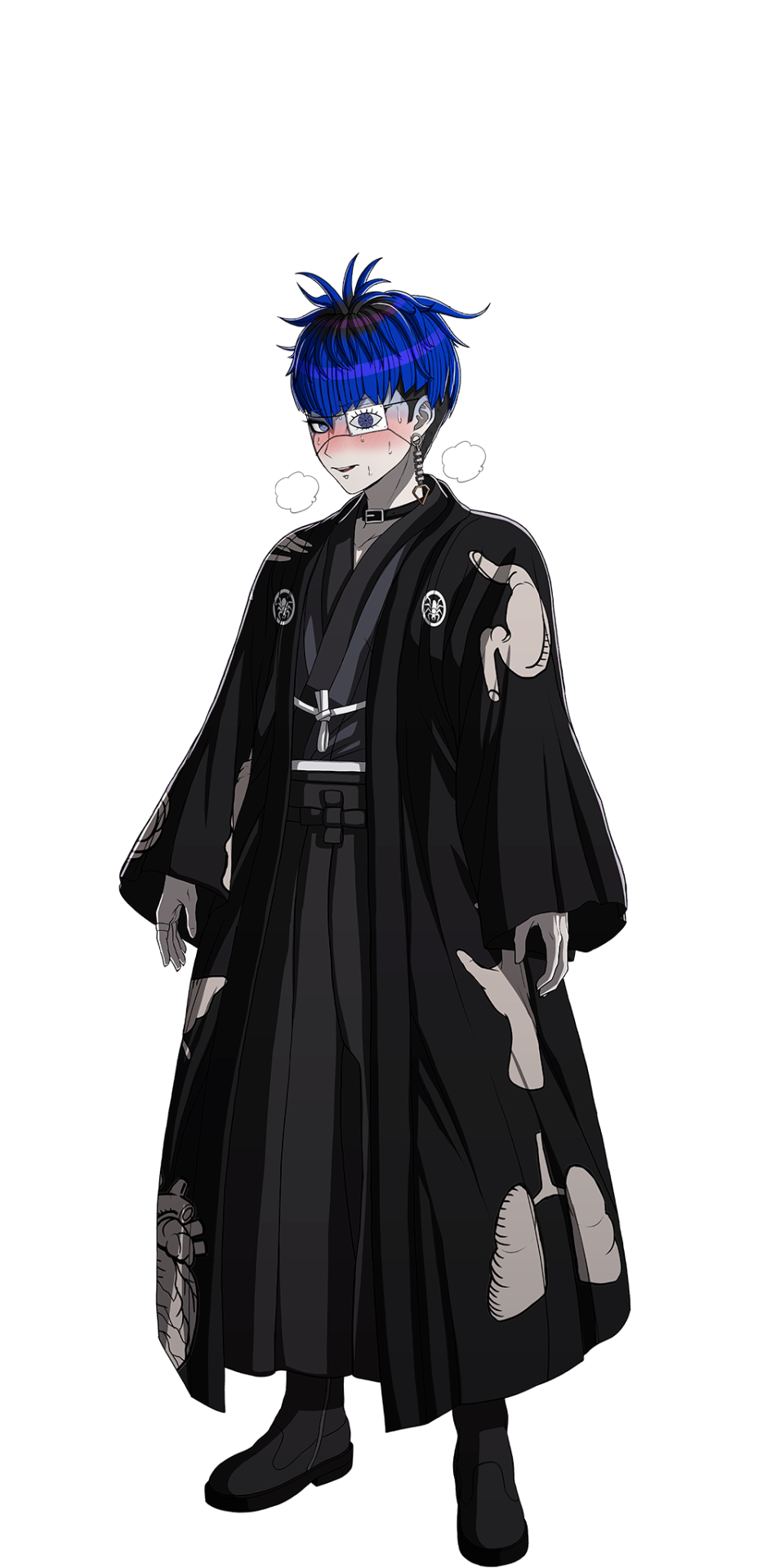
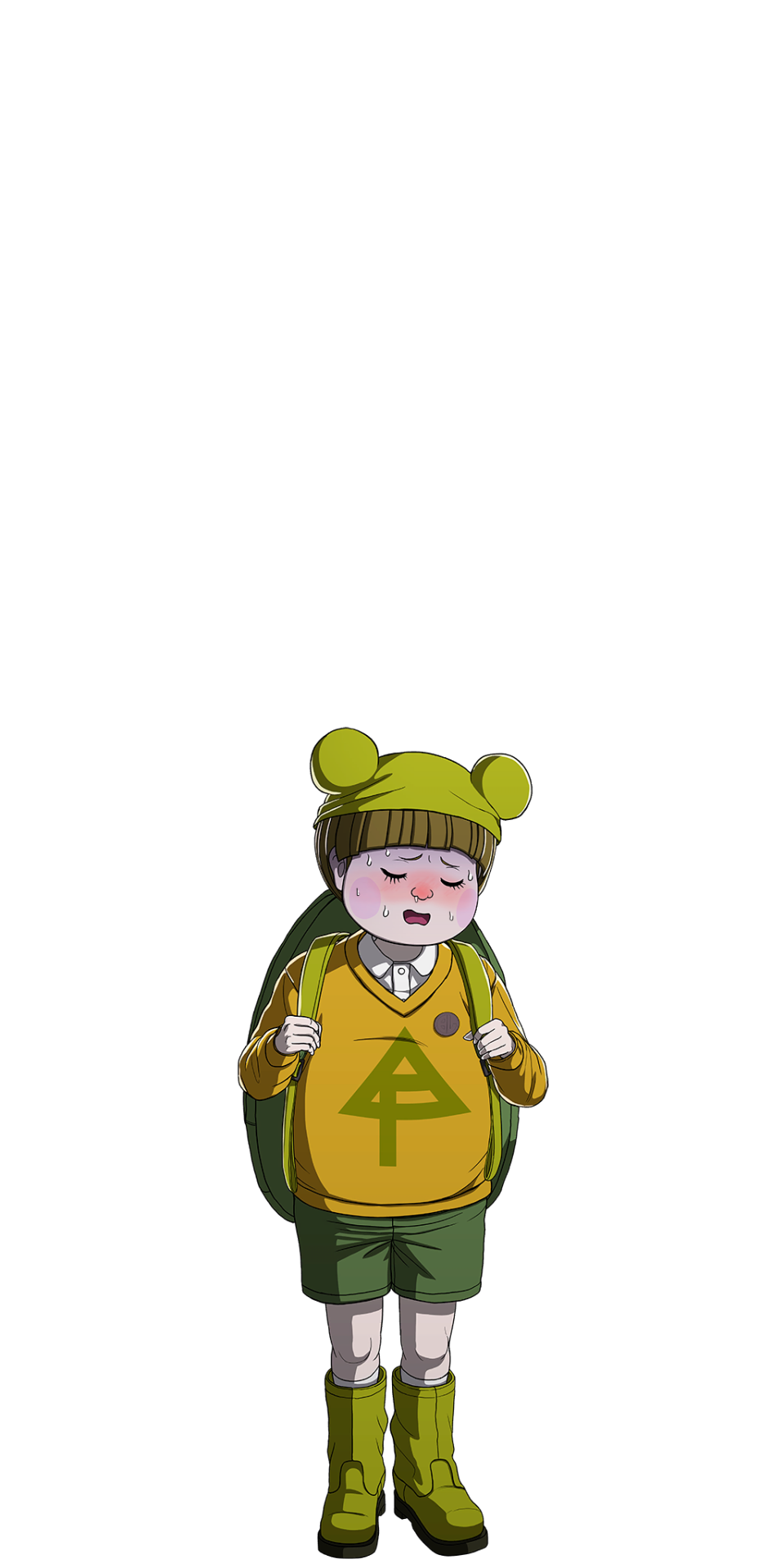
Time to imagine my own caretaking scenes: I like to imagine each person gave 2 people the medicine and took care of them.
Takumi tends to Tsubasa and Yugamu
Takemaru tends to Hiruko and Shouma
Nozomi tends to Kurara and Moko
and Gaku tends to the twins.
Takumi would tend to Yugamu, because lets be real, he's another fan favorite Takumi ship of the community as I've seen, and I bet he would LOVE to be cared for by Takumi only for Takumi to likely run away... XD (such a gay freaky little man) And as for Tsubasa, idk I feel like if I had the option to choose who I wanted to tend to, it'd be Tsubasa, she's one of my favorites so I'll be biased here. I think she'd be such a cute and cooperative little patient >w< Super easygoing for Takumi.
Takemaru would naturally tend to Shouma, of course he's his little buddy! I can just imagine him feeding him some protein filled stew to give him energy and Shouma is in tears, snuggling the shiba plushie in bed as Takemaru tends to him because he thinks he doesn't deserve the kindness ;w; As for Hiruko, Takemaru likes her, but I think he'd drop the medicine off and leave wishing her well. He knows Hiruko can take care of herself and won't sully her reputation.
Of course Nozomi would want to be tending to her 2 gal pals. Specifically Kurara given the two recently just made up after their little drama. And despite having a cold, Moko would probably still want to help Nozomi tend to Kurara but Nozomi just ushers her to bed because she's still not well herself x3 I think Kurara would be the more fragile of the 2 (especially without her mask, but she can't wear it while she's running a fever lol)
and that leaves Gaku to deal with the twins. By process of elimination there's no real personal connection, but since the twins are the youngest, and Gaku likely tended to his own siblings, he'd probably be okay with tending to them. But I bet the caretaking would be chaos with Ima snapping at him every time he tries to help Kako. (may as well be chaos for gaku, everything is chaos for him)
Anyway yeah I just wanted to gab about this moment. It annoyed me, but it also gave me the motivation to make more edits. Been a while but yeah may as well make HL edits if I don't wanna make any art... xD
#the hundred line#hundred line last defense academy#hundred line spoilers#pixeledits#my edits#sprite edit#illness whump#fever whump#long post#yeah I had to talk about this x'D#this event made me happy and annoyed at the same time#I still love that there's canon illness scenes in this game but wow I did not expect this?? This is a sickfic level sceanrio#and yet it gave us NOTHING x-x#and yeah idk if I'll make art of HL#I'm nervous to try drawing these characters#BUT I can make edits of them :3#that is also how I started on my Raincode stuff as well LOL#it was fun to edit some more#hopefully I still got it despite being rusty ;w;#takumi sumino#takemaru yakushiji#hiruko shizuhara#gaku maruko#nozomi kirifuji#ima tsukumo#kako tsukumo#shouma ginzaki#tsubasa kawana#kurara oosuzuki#moko mojiro
40 notes
·
View notes
Text
Chains of Eternity- my biased, terrible little review
This will include spoilers, so you've been warned. Although I like this game (my tumblr and even this post are a testament to that) sometimes things you like can fall short. So, let's get into my various critiques of COE. The start of the story felt pretty strong. I do wish we saw Valen, BECAUSE WHERE IS THAT MAN, but sure, right. I felt like there were too many side characters during the first few quests, and this trend continues through the whole arc. I really liked Faramor… so where the hell did he go? He sort of disappeared without much of an explanation. He had no character development, or it simply wasn't portrayed in a cohesive way. But his VA was very good. Also, controversial, but while I did enjoy Lorsan's cameo- it did not add anything. Same with half the characters this season, they really came out of nowhere, and could have been utilized in a more interesting way. The whole immortality talk also felt unconvincing- sure it's bad but if you're really afraid of death it's a small price to pay, and you'll watch people die even if you're mortal, so… weak argument there. Cyran. God, Cyran, they barely used him, too. Which I really wished they did. Also the King/Duke(?) was kind of barely there. They did nail Yolena and made the ending that much more WHAT THE FUCK. There were some bigger overarching issues, such as: Structural issues, Promise, payoff, Setup, Too much fluff, Pacing, Lore. Structural issues- the story structure did not feel sound nor satisfying due to the lack of promise at the start and the lack of payoff at the end (ex.- in WOI, it's "Merlin wants to leave Rustport, Sinbad wants to be a Captain, Sonja wants to kill her dad" and all of those things come true and make a satisfying story). This is pretty much the same as "setup"- there was not much of that. Too much fluff- too many characters and frivolous parts that I felt could be trimmed. Most characters could be cut out and the story would still work. Pacing- unlike WOI, which felt like it lasted ages, or even the first few storylines that were pretty even, this one was choppy. The start dragged and then the end sprinted. The whole thing whizzed past me and there I was, left befuddled. Lore- confusing! In the story not much is elaborated on, but then in some heart-to-heart's there are comments on why graveborns were made that… actually make no sense, or are unsupported by the wider narrative. How would they improve this? Honestly. Just more editing and more time. This one must've been rushed, or something, because WOI was stellar for any game (and again Sinbad's VA was FIRE, nothing stood out to me this time). And if I were to edit this story, I'd introduce Valka earlier, and give her some clearer goal than just "am sad, don't deserve your praise, blah". State it more clearly that she wishes she could make things right. And the villain, who I neglected to mention- all villains besides the WOI ones have been last-minute. Cryonaia was intimidating, but, she was… not setup. If the story spoke of her earlier, or incorporated her into some legend, her reveal would mean more. Otherwise she's just another hypogean. Also, what was her goal? What was she trying to do? Who the fuck knows. I found her vibe unclear. Tell me if I missed something, but I do doubt I missed anything major. Altogether, if this was a book, I'd give it a 2 or 3 stars for "you tried and you almost got here but your editor must've been drunk and passed out for months or something".
46 notes
·
View notes
Text
My Last Minute Thoughts on the HBO TLOU Adaptation
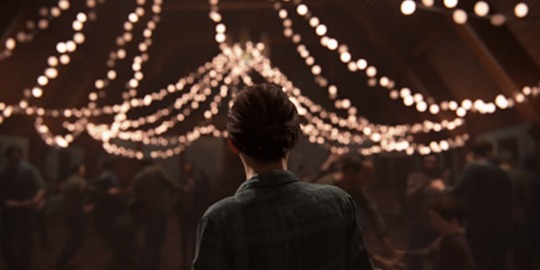
The Last of Us series has sparked a ton of conversation, especially around casting choices—and I get why. A lot of people were upset, particularly about Bella Ramsey as Ellie. At first, I didn’t understand the backlash. Bella’s a talented actress, they look the age Ellie starts out at (14), and they’re a lesbian, like Ellie. To me, a lot of the early criticism felt rooted in weird entitlement, especially from people who seemed more upset about not being able to sexualize Ellie—who is, let’s not forget, a teenage girl and a lesbian. That kind of outrage said more about the audience than the casting.
I followed an account that broke down the show and the games in perfect detail, and most of what they said about the casting resonated with me. I genuinely tried to stay open-minded and supportive, especially knowing that Neil—the creator of the game—is directly involved in the show. That gave me faith in the creative direction.
But now, as we head into Part II, and obviously Bella is still Ellie, I’m finding it harder to stay on board with that choice. Especially knowing now that Cailee Spaeny was a runner-up. She’s a phenomenal actress and looks much more like the Ellie we see in the second game. The transformation Ellie goes through—from 14 to 16, then to 19—is huge, both emotionally and physically. And Bella, even now, still looks around 14. That visible evolution is a major part of Ellie’s arc, and not seeing it reflected on screen feels like a missed opportunity.
And to be clear—this is not about wanting someone “more attractive” in the role. That kind of critique is rooted in the same shallow thinking that fueled a lot of the incel rage when Bella was first cast. What I’m talking about is seeing the growth and weight of Ellie’s journey reflected not just in the performance, but in the physicality of the character. Seeing someone who both captured Ellie’s spirit and visually aged with the character would’ve added a layer of immersion and emotional payoff that I think the show is going to miss out on.
What’s interesting is that I fully supported the bold casting choices with Sarah and Maria. Casting them differently from the game actually strengthened their presence. Sarah’s death hit even harder, and Maria’s character felt even more grounded and nuanced. Those were changes that added depth, diversity and expanded the world in meaningful ways.
But Ellie is different. She’s the emotional core of the story. We’re not just watching her for a few episodes—her journey is the backbone of the entire narrative. That makes casting her a completely different kind of responsibility. There’s a level of consistency, believability, and resonance required to carry that kind of role, especially as the stakes and emotional intensity rise in Part II.
The same goes for Abby. I understand why they might approach her casting differently—especially considering the intense, and frankly disgusting, hate the original actress received after the game’s release. That kind of response was unacceptable, and I completely get the desire to protect the character and whoever portrays her from that kind of vitriol. It’s a sensitive decision, and they’re likely being very thoughtful about how they handle it. So, I wasn’t surprised that they casted her the complete opposite as the original character.
And yes—I can already hear the pushback: “Just play the game if you want the original,” “Bella is Ellie,” “She’s 19 there’s not much difference in looks from 14?”(which yes there is a difference). But the point isn’t that the show needs to be a carbon copy of the game. I’m not here to say the show is bad or that I won’t enjoy it. In fact, I’m excited to keep watching—I’ve been enjoying it so far.
But that doesn’t mean I can’t have opinions or voice criticism. It’s possible to love something and still want more from it. That’s what engaging with art looks like. And let’s be real—every show gets criticized. That’s part of what happens when you create something and put it out into the world. It invites conversation, differing perspectives, and reflection. That’s not a bad thing.
I think the answer is layered on why I feel this way about Bella continuing into part 2 knowing Cailee was a runner up. I do believe casting was very intentional and I’m trying to understand what exactly they were looking for. I was looking forward to experiencing that same visual arc on screen because it helps us track her trauma, maturity, and inner shifts. When that arc feels static/flat—when the character doesn't visibly change—it can dull the emotional impact.
There’s also the layer of how this casting reflects broader conversations—about beauty, relatability, subversion, and what we’re allowed to want in a protagonist. When others aggressively defend Bella's casting as a progressive or necessary choice, it can feel like you’re not allowed to have a nuanced opinion without being lumped in with toxic incel discourse. the show, overall, is well done. The cast, the world-building, the emotional beats—they hit. Which actually makes the dissonance with Ellie feel more pronounced. If everything else is so spot-on, that one deviation becomes much more noticeable and harder to ignore. Same thing with Abby! But that’s another topic in itself, there’s a different reason for her casting that’s clear if you’ve played the game/ know the lore of what happened.
I’m sure Bella feels immense pressure with this role and could have many feelings with people saying they shouldn’t have been casted. An I’m sure Cailee feels very awkward/uncomfortable being brought up constantly about how she didn’t get this role. At this point we can just sit back and enjoy the show, give it a chance. Our opinions are just opinions at the end of the day. I’m sure it’ll be another award winning show anyway. I love Naughty Dog’s work at the end of the day.
#tlou hbo#tlou#the last of us#the last of us 2#the last of us part 2#film#horror#this casting is gonna be talked about for the LONGEST time
12 notes
·
View notes
Text
Linkle’s Fazbear Frights & Lore Insights #2: To Be Beautiful
[Read the general disclaimer and important notes for this series of articles here.]
[View the Masterlist of all completed articles here.]
Some To Be Beautiful specific notes:
I will be discussing the graphic novel version of this story to a limited degree, which as per ‘Frights Fiction’, would be a graphic novel in the in-universe canon, based on the book by the same title, just as it is in our world. If you don’t want spoilers, stop here.
I will also be discussing, to an even more limited degree, the Silver Eyes trilogy, but the things I will be talking about are major spoilers, so this is also your spoiler warning for that.
I will be briefly talking about one of the mini-games in the game version of Into the Pit which revolves around To Be Beautiful, and in general, discussions about the book version and my thoughts on it in my previous article are quite likely to come up during one particular part of my lore relevancy section, so if you want to completely avoid Into the Pit spoilers, maybe hold off on this one for now.
Apart from where I feel it relevant, I won’t be doing a deep-dive into the changes between the book and the graphic novel, since they are both fictional media within the FNAF universe, and thus the retcons and changes mostly have no value in the discussion of the lore or canon. If someone else wants to scream about how they got so much wrong because they feel the book was done dirty or something, I absolutely encourage you to go write your own article! But this isn’t about that.
My takes on William as a father, in regards to the games, may ruffle more than a few feathers of people who still insist on holding onto some of the old fanon stuff/do not believe in Frights Fiction. I will be briefly discussing why, but seriously if you don’t like it and won’t go into it with an open mind, please just don’t read it; I’m not really in the mental state to go through a thousand comments trying to convince me of a notion that I simply don’t personally feel has any logical evidence behind it.
Now with that out of the way, let’s get below the cut and get talking! This is your last spoiler warning for all forms of To Be Beautiful, so if you want to turn back, do so now.
Has everyone who wanted to leave yet left? Yeah? Good. Okay, let’s get going, then.
Overall Impressions
The Book:
I know that in my last post regarding Into the Pit, I said that some of the writing style choices made definitely weren’t for me, and that’s still true, but honestly, as I’m listening to this story a third time to make sure I haven’t missed anything I want to cover (and have read several other stories in between doing so), I have to admit I’ve gotten very used to the formatting by now, and it really isn’t as much of a pet peeve as it used to be — which is undoubtedly good, since I have a good many more volumes to go through in order to catch up to date in covering them all.
As for To Be Beautiful’s plot, as much as it pains me to say this, I honestly like this one a little bit better than Into The Pit, and I’m not even completely sure I can put into words why, except perhaps that, while I was very glad Into the Pit did have its surprisingly happy ending with both Oswald and his Dad’s survival, the original book version also felt very anticlimactic in terms of anything actually happening after the initial glimpse of the Yellow Thing’s murders, all the way up until the abrupt point where Oswald’s Dad was immediately pulled out of the pit as soon as Oswald arrived back at Jeff’s Pizza, and the Yellow Thing attacked and was hanged.
With To Be Beautiful, the slow buildup of suspense and horror, to me, is much more compelling and ultimately pays off much better when Sarah’s decisions have finally their tragic and irrevocable consequences. I think that if Into the Pit had had that same kind of buildup or at least a longer and more suspenseful struggle at the end before the payoff, I might have actually preferred that one more, as the backdrop of that one is much more up my usual alley, but it didn’t, and so To Be Beautiful has to rank higher on the list.
I do find it odd that, even with how strong the seemingly implied message is that you shouldn’t waste time trying to appeal to people who will only like you if you meet superficial criteria, Mason Blair is strangely given a complete pass for never noticing Sarah until she was hotter, as the story never gives any indication of him being shallow in any way after that initial bit of shallowness and presents him as a good and wonderful person through and through in all other scenes that we see him (unlike the Beautifuls), but I suppose maybe that isn’t a flaw in the writing so much as a realistic acknowledgement that sometimes people who are good overall can just make bad judgements and be a bit petty — I just wanted to mention it nonetheless.
That observation aside, the characters seem to suit the roles they are meant to fulfill well enough; they’re definitely far from my favorite characters in the FNAF series as a whole, but they’re serviceable enough, and I’m sure there are many people in the world who can empathize with Sarah’s struggles with loving or even liking her body.
The Graphic Novel:
Well, first of all, I will say right out the gate that between this and the book, I definitely by far prefer the original book; for as much credit as I tried to give this adaption of the story whilst reading it, I really couldn’t see more than a single upside to viewing this version of the story instead of the book, and that single upside — the ability to see a possible glimpse at what the characters looked like — did not in any way make up for all that was lost in translation enough to warrant viewing it as a viable alternative, or even all that much worth seeing as a supplemental piece to the book, since it contradicts it so much and lacks such an incredible amount of the punch that its source material had.
To name just a few of the changes I caught onto while reading it:
The characterization of Abby, Sarah’s best friend, is slightly different here, as while during the conversation of what Abby used to do to her Barbies when she and Sarah used to play with them felt slightly more like a testament to Abby’s unique fashion sense and tastes in the book, in the graphic novel, Sarah outright states that Abby tortured her Barbies instead of describing the unconventional ways she styled them that didn’t adhere to normal beauty standards. Maybe it’s just me, but that felt like a swing and a miss, when we consider the overall implied message of the story.
Several events were skipped, like Sarah’s ice cream date with Mason, completely re-ordered or just completely altered, like Eleanor waking up immediately by accident when Sarah first takes her home and looks at her, Sarah not tipping her hand that she knew who Mason Blair was when he introduced himself to her, or just being honest with the Beautifuls about what her Mom does and getting disapproving looks.
Perhaps the worst change of all, though, in my opinion, was the change at the very end of the story where, as Sarah is falling apart into a pile of junk, instead of just the narration of her regretful thought, she laments openly that “Abby was right”, and Eleanor turns to her and agrees, “Abby was right about a lot of things”; to me, this unanimous commentary happening between both characters is far too on-the-nose about the ultimate moral of the story, and that lack of subtlety in a story that is already quite clear enough about its message without needing to have both its main characters say it aloud is actually rather detrimental to its overall integrity and enjoyability.
A good story should not have to slap you in the face with its message completely verbatim in order to be able to get that message across; the story should not feel like it stops and makes every character on-screen break the fourth wall to stare you in the face and tell you directly and heavy-handedly what you are supposed to take away from it, and that is what this version of the ending feels like: an open bout of preaching — and, whether they agree with the message wholeheartedly or not, almost no one particularly likes being bluntly preached to by a piece of fiction.
And, on top of all of that, the fact of the matter is that the one upside this medium had wasn’t even really taken advantage of in the way that it should have been:
Despite all the muss and fuss about how ugly and obnoxious of a green Sarah’s hair was when she dyed it, it doesn’t even really look that way except for in the panel(s) at the hair salon — mostly looking a very pale and hardly noticeable slightly greenish yellow in the majority of panels after her escapade.
Sarah’s chest, for all her complaints of it being completely flat, doesn’t really come across so in the artwork of her before her transformation into being more shapely, and instead just makes it look like she wanted it bigger than it already was rather than wanting it just noticeable at all.
The colors and designs of many things, too, seem quite different than how they are described in the novel, with the most noticeable example being that the necklace Eleanor gives Sarah is now gold instead of silver, and that, for whatever strange reason, Eleanor’s eyes don’t seem to be green at all and rather mostly look a plain empty grey until the fifth day, instead of starting out as such as they did in the book.
All in all, although the artwork itself is certainly serviceable and cute enough, there are just a lot of strange choices I don’t really appreciate being made here, and losing Sarah’s inner monologue, when the book is practically written from her point of view (albeit in third person), is such a detriment in combination with all of these things that it really wasn’t worth the trade-off.
Lore Relevancy
Well, having long since read the entire book, I quite expect this to be the longest entry I have in this particular volume of Fazbear Frights, so let’s not waste any time mincing words and just jump straight into it, shall we?
The Lies and Half-truths
As always, before we can get into what the book is trying to say, we should start by trying to rule out what it definitely or at least almost certainly isn’t; now, unlike Into the Pit, which was so closely tied to the actual main game series’ canon that we could easily rule out what could or couldn’t be true, To Be Beautiful, unfortunately, does not have any overt one-to-one tie to any canon mainline game continuity events, so this process is naturally going to be a little bit harder and take a lot more guesswork, but still, I do feel that we can make at least a few fairly educated assessments.
Firstly, unlike with Into the Pit, the game version of which gives me pause to consider that Oswald and his Dad might to some extent actually be based on real people that exist within the FNAF universe, even if what happened to them was entirely or mostly made-up — what with the Freddy Mask implying Oswald’s Dad might be “Freddy Bully”, one of Michael’s childhood friends — I am fairly confident, at least at the time of writing this, that Sarah and everyone within her story do not actually exist beyond potentially being a metaphor and/or stand-in for someone else already well-established within the main games’ canon (more on this later).
My reasoning for this is mostly that, well, not only is it unlikely and way overcomplicating things to say that every single character in every Fazbear Frights story must have a separate counterpart in the real world of FNAF, even when they don’t seem to have anything particularly hinting at it, but also…I simply don’t believe that Eleanor truly exists, either, and I know that may be a hot take for some but, hey, there it is.
At the time of writing this — and granted, that could change at some point in the future, since I know she’s going to return several times — I believe that Eleanor is nothing more than a) a stand-in for Circus Baby/Scrap Baby/post-death Elizabeth in general, b) a convenient method by which to further explore the concept of the Power of Wills and Wishes™️ (there is a better name for this in the future, but this is just my placeholder name for it until we get to talking about Fetch), and c) the main antagonist this in-universe fictional series focuses on instead of William/Springtrap (+ variants).
Now, did the method by which Eleanor kills Sarah actually claim someone’s life somewhere in the mainline canon? Does her seeming “magic” actually exist in some form? …Well, sort of, yes; it’s a half-truth, really, with enough details changed to distance itself from the actual happenings while still being able to use some of the most horrific and mystifying parts about them — exactly as you’d expect from a company trying to discredit and make light of real-world events.
But, seeing as those very things tie so heavily into the things I want to discuss regarding what I think the book is trying to say, we’ll get to the nitty-gritty of that later in the next section.
For now, I think we’ve covered everything that can be covered here, so let’s move on.
The Truths and the Likely-Truths
So…from now on, though obviously this section will continue to be where I discuss all things that I think were borrowed in-universe from the real life events of the main canon and/or which could have some relevance there, I will be more properly splitting this up into two sub-sections: The things that I know are true — which are themes and topics that I feel, without doubt, are definitely and most obviously what the story was created to establish and/or bring up relating to the lore, from an out-of-universe perspective — and then the things that I think are true, which are what I personally believe the book could be trying to establish and probably believe with a fairly high level of confidence, but which may not be as obvious at a first glance and do have more leeway for other interpretations.
It should be noted, however — and this is probably something I will retroactively add to the “Disclaimer and Important Notes” page, as I feel it’s quite important to all of the books — that, as Scott has confirmed in a decently recent interview with Dawko that he just writes down the basic plot of his stories and all the important points he wants to cover and then lets the other author flesh it out more fully, we have no way of knowing outside of the main plot exactly what details were his ideas and which aren’t; therefore, there’s a good chance that a few or even multiple of the things I bring up are just massive coincidence and have no meaning whatsoever in reality. Nevertheless, I do think there’s value in discussing it, but that fact is also why I will often try to provide far more than just one detail to back up most of my more elaborate interpretations and ideas — because we can’t be sure that any one single tiny detail within the books has value, unless of course it’s something Scott has specifically said is important.
Now! With that in mind, let’s take a look at what we can glean from this tale.
The things I KNOW are True
So, approaching this from the angle that, according to Frights Fiction, every Fazbear Frights story must contain some measure of truth hidden within the lies — some event Fazbear Entertainment is attempting to discredit (or further discredit, if it’s something that’s come up before) and monetize — what do I believe are the things To Be Beautiful is definitely riffing off of?
Well, there are four things here I am absolutely sure of:
1: Eleanor is absolutely derived from and supposed to be the Fazbear Frights version of Circus Baby — but more specifically and very importantly, she is Circus Baby after killing and being possessed by Elizabeth.
How do I know this? Well, there are a number of indicators throughout the book which tell us this:
It is stated very clearly in the book that Eleanor has green eyes — the color we know to be Elizabeth’s eye color, which Baby absorbed after killing and being possessed by her, according to Sister Location — not Circus Baby’s original blue.
In general, appearance wise, Eleanor looks very much like the version of Baby we see in The Silver Eyes trilogy, and said Baby was also possessed by Elizabeth and had the same duality in thoughts and nature that Circus Baby did during the main events of Sister Location, rather than being just an AI.
Her name is Eleanor — a name that is not only strikingly more human than Circus Baby, but also begins with the same two letters as Elizabeth.
She is stated in the books to have “a young girl’s voice”; now, what precisely this means, I suppose, is up for interpretation, but usually, if you refer to someone as a “young girl”, it means they are a child. In other words, she sounds younger than she looks; she sounds like a child. If I had to guess, she most probably sounds like Elizabeth — like Ennard sounds in the secret ending on Night Five, after Baby’s AI has been removed and all that remains of Baby is Elizabeth. Now, we could say that she has Circus Baby’s voice, as that could also be considered one of a young girl, but I feel the intentional draw to the fact that her voice sounds like a young girl, when Eleanor is described to be more of a proper woman, has to be an intentional dissonance, and using it just to say “oh, she sounds like Circus Baby” seems a bit pointless and redundant when it is already so clear that she is a stand-in for Circus Baby and practically no one is going to try to dispute this. In my eyes, this was done to draw attention to the fact that she is more than just an A.I. She is, just like in The Silver Eyes, both a girl and an AI who wants to obtain a more perfect and human-like body to inhabit. Something real.
The reason why I feel that this distinction is important is several-fold, and we’ll get to some of the reasons later, but for now let’s focus on the most important one, which is:
2: The events that happen in To Be Beautiful because of Eleanor are largely (with only a few caveats) meant to mirror and appear drawn from Sister Location.
Feeling skeptical? Here’s some evidence to back it up:
Throughout a vast majority of the story, ever since their initial meeting, Eleanor is largely portrayed as a kind and caring individual who longs to be good and only wants to help Sarah and keep her safe; this is a point that is brought up many, many times throughout the book — sometimes from Sarah, and sometimes even from Eleanor, herself. (To give one choice line from the book among the many examples: “Somehow, Eleanor being there made Sarah feel safe, as if Eleanor were standing guard.”) This is also true in Sister Location, as Circus Baby takes the role of protector and guide for Michael throughout many nights, keeping him safe and ensuring that nothing can hurt him, to the point where Michael (in the true, regular ending) steadily grows to trust her nearly completely and put his life in her hands, as Sarah does the same with Eleanor.
However, just like in Sister Location for Michael regarding Circus Baby, there are brief moments here and there as time progresses where Sarah gets the slightest hint of something just being “off” about the situation, or even times when Eleanor does something outright creepy, like leaning over and staring at Sarah while she sleeps, but she gives an innocent explanation for it, and Sarah, while upset, still seems to shrug it off in the end and forgive, excusing it by some means and telling herself it’s nothing to worry about (AKA just like when Circus Baby kidnaps Michael after Funtime Foxy attacks him, and stuffs him inside a Springlock Suit, claiming she did it to save him, but at the same time demanding he be quiet until the workers leave the room and wait until morning to be rescued), shortly before she inevitably seals her own fate the next day.
Eleanor really only awakens at night (“mostly nocturnal”, as the book puts it) in most cases, putting an emphasis on Sarah’s visits with her always happening at these times, much like with the night segments in Sister Location being the time that Michael interacts with Baby, and it also being the usual time that the animatronics go into free-roaming mode, and seem to start actively “coming to life” in their supernatural way in the mainline games’ canon, in general.
Sarah and Eleanor ended up meeting when Sarah found her in an old scrap yard and took pity on her condition, deciding to save her and fix her up. Michael met Baby because he had gone to Circus Baby’s Entertainment and Rental specifically to find Elizabeth and fix her, saving and freeing her from the AI that allegedly controlled her and made her do bad things, and “putting her back together.”
Eleanor’s ‘helping’ of Sarah — or rather, slowly working towards taking her entire body and getting Sarah to willingly, though albeit unknowingly, help her do it — takes place over the course of four nights, with the fifth day being the time that the transformation is finally complete; this much probably doesn’t even need saying, but this is a direct parallel to the four nights of Baby helping Michael along the way and ensuring his body would be preserved until he finally came around again on the fifth, when Baby and her fellow animatronics’ preparations were finally complete.
Both Eleanor’s and Circus Baby’s ultimate goal in helping the person they’ve met and keeping them safe for a period of time was for the explicit purpose of stealing their body and identity to use as a disguise and escape where they were being kept, so they could freely roam the world and go where they pleased.
There is actually a lot of clear symbolism and parallels for Ennard inhabiting and at times even controlling Michael’s body post-scoop, especially during the scene where Sarah loses her necklace and begins to lose her seemingly soft and human outside appearance to transform into a literal mass of tangled parts that she was underneath, detailing how people around her slowly went from expressing joy or amusement to absolute horror and fear, describing her struggling to walk down the street to her house and considering what people must think seeing her, describing the odd feeling and sound when the necklace first fell off, the clanking and clunking inside her, the slow horrific realization of what had happened, how she struggled to move and her body no longer was under her control, and lastly, how, “She was falling apart. Collapsing into a hideous trash heap. She didn’t resemble a human of any kind.��� (Quite similarly to how Michael was falling apart in spite of the remnant in his body trying to repair him and barely resembled a human by the time Ennard finally left him.)
A little detail, maybe, but as Sarah is searching for Eleanor, she eventually begins to lose control over her ability to speak well, and calls out to her as “Ena”…which is quite similar in sound to Ennard.
These are definitely much smaller things by comparison, but I also feel that both Sarah notably staring into the mirror a lot and the mention of her eating spaghetti dinner at one point in the story are also meant to be small little symbols and metaphors for Sister Location, as Michael notably is seen staring into his mirror at the end of Sister Location, and Sarah consuming spaghetti — whose noodles are like Ennard’s many long tangled wires he is comprised of, and whose traditionally red marinara sauce resembles blood — could be seen as a metaphor for Ennard entering into Michael through his stomach after he is scooped.
Not only that, but there are also a few things in the story that only make sense if you think about them from the perspective of it being a fictional story in-universe that is meant to be borrowing a lot of events from and using symbolism for Sister Location; for example, and perhaps most notably, an ‘issue’ which GiBi’s Horror Homestead brought up in his video analysis of To Be Beautiful: the fact that instead of having Eleanor directly wear Sarah’s old body parts, she instead transforms her appearance using some sort of technology (more on this in a moment), and Sarah winds up finding the body parts just uselessly lying in bags which fall onto the floor.
It may seem counterintuitive, at first, to have Eleanor not wear the body parts when Ennard quite literally wore Michael’s body as a skinsuit, but I actually feel that this was very intentional; having Eleanor not do this not only allowed for the body parts — arms, legs, noses, and torsos — to be splayed out on the floor in front of Sarah when the sickening realization hits her, reminiscent of all the body parts of the animatronics in the Scooping Room when Michael arrives there, but it also leaves room for the book to specifically mention her entrails and organs slopping out onto the floor as well — giving the image of what would have happened to Michael when the scooper finally got him.
We could also say that Eleanor singing was meant to be reminiscent of Ballora, though I’m not quite as certain of that much, just a thought I wanted to put forward as, otherwise, I admit, I’m unclear on the purpose of it existing — unless, of course, it has some sort of hypnotizing and/or calming effect that basically worked as the anesthetic before Sarah’s surgery, and we’re for some reason supposed to draw absurd parallels between the Puppet being soothed by the music box and this in order to come to that conclusion, but I highly doubt that for a multitude of reasons.
3: Sarah’s necklace and Eleanor’s matching button are, without doubt, meant to be another play on and reminder of illusion disc technology, making this the second time within this book that it’s brought up.
Now, why Sarah’s body fails when her necklace falls off, even though there is no such mechanic involved in illusion discs, is another matter entirely, and while yes, we could easily say that perhaps the necklace was also connected to her new body in some way and kept the parts “running” (acting like a key to an engine), I also honestly really don’t think that it matters one way or another — not if we believe in Frights Fiction, at least.
Occam’s Razor dictates that the simplest answer is usually the most correct one, and saying that things in the books don’t entirely follow or fit the logic of FNAF’s known main canon because they’re sensationalized fiction and that the shock and horror elements of the story (and the ability to use, alter, and discredit various real world events) are always going to come before any real world logic is definitely the simplest answer here.
Sure, we can come up with complex potential explanations like this on why something is the way it is in these stories when it doesn’t make sense, but why waste that time and effort when we know that they’re fictional to begin with, and doing so might lead to missing the actual in-universe reason why the in-universe creators of Fazbear Frights would want to include certain story elements?
4: And lastly, once again, we circle back to the (at least as much as I’ve read thus far) ever-ongoing theme of the Power of Wills and Wishes™️ — the constant and seemingly very emphasized implication that within the FNAF universe, the mind/spirit is a very powerful thing that can — to at least some degree — control, cause, and/or contribute to the shape of reality and what happens within it.
Now, as I believe I said earlier in this post, I do want to hold off on discussing this on a grander scale until I reach the article where I talk about Fetch, but I will say that this theme is even stronger and more front and center in To Be Beautiful than it was in Into the Pit, with this time not only Sarah longing to be the conventional standard of beautiful and then ultimately getting her wish, but also getting to do so through Eleanor, who explicitly talks about and promises wish-granting.
Again, just something to bear in mind for the future for now, but it absolutely needed mentioning.
—
So, we have a whole list of things that I invariably believe are key parts of the book from an in-universe perspective, but what out of all of this, if anything, do I think that, out-of-universe, was undeniably something Scott would have wanted to communicate with this book?
Well, maybe this is a bit of a boring answer, but to be honest with you, unlike with Into the Pit, where I would have at least said that I think getting the year of the MCI — 1985 — out there was definitely a goal in the book, and that the game version also added a most likely game-canon design for Henry and William and a heavily implied connection between Oswald’s Dad and Freddy Bully, I don’t think that there’s actually any one thing that To Be Beautiful exists specifically to fully, uniquely, and unquestionably establish — at least not that isn’t mentioned elsewhere in other stories to some degree as well.
Rather, I think that To Be Beautiful — both in terms of the things that I think are utterly undeniable, and the things in the next section that I just believe in very strongly and think are backed quite well by various evidence, but aren’t as easily confirmed — just exists to further expand and place further emphasis upon certain points that have already been, and will continue to be, brought up in other Fazbear Frights books.
And in the case of the things that I feel are utterly undeniable, those points that I think emphasis is being placed on are illusion disc technology, and the very intriguing concept that is genuine willpower within the FNAF universe.
“But why the illusion discs?” I can hear some of you asking even now, “I know you said the other thing comes up again, and you have a theory on that to share later, but what’s so important about these?”
Well, like I said in my Into the Pit article, I think that Scott wants to remind people that technology like this is a thing in the FNAF universes, and that we shouldn’t rule it out of existing in the main canon, too — and not just because of FNAF 4, either; we’ve actually seen something akin to illusion disc technology not just hinted at, but actually shown to us in the main universe already, within Ruin, when we’re not using the Vanny mask. There are many things that Cassie can see and feel right in front of her so realistically that she is utterly convinced she can’t pass through until she wears the mask to take the illusion away, or removes it by some other source, like finding and removing ‘anomalies’ on the camera in a certain order (AKA using a hidden passcode to deactivate the illusion).
I’m not sure just yet how important this technology is going to become, but I do wholeheartedly believe that even if you are still utterly intent on just believing that FNAF 4 was a bunch of nightmares and nothing more, illusion discs are nevertheless clearly an integral part of the series either way, and a relevant thing that is intentionally being discussed and going to continue to be important to understanding how certain things in the mainline FNAF universe work.
The things I FEEL are True
…Well, putting all of that absolute certainty and undeniable truth behind us, let’s now wade a bit deeper into the pool of analysis, well-backed theories, and plausible personal interpretations, and finally ask the burning question:
What do I think To Be Beautiful could be trying to say about the main lore and/or its characters, on a deeper level?
Well, to start with, one thing is for sure: it’s certainly carrying on this entire book’s clear but unstated secondary theme of its main characters feeling unlovable, unwanted, utterly invisible in any possible positive context, and like life is meaningless in its current state.
But…why is it like that? It’s not as if this is the running theme which is mentioned on the back of the volume itself — with said theme being identified as the fulfillment of wishes and their unfortunate consequences — and yet, it is still undeniably there.
Oswald feels like his Dad doesn’t really care about him, feels invisible to him, and is generally unhappy and bored with the way his monotonous, unpleasant life is in their dying town. Sarah, as we’ll further discuss soon, hates her own body and feels ugly, undesirable, and utterly invisible because of it, thinking that there’s no happiness to be found in life unless she fundamentally changes herself to be more in line with what’s considered conventionally pretty. And lastly, Millie — well, Millie’s plight we’ll get around to later, when we discuss Count the Ways, but trust me when I say that she is absolutely not the exception to this rule, and if anything, is actually even more extreme than the others in a lot of ways.
I know some people might say that it probably just lined up that way because the characters being unhappy was the necessary motivator for them to even have wishes in the first place, but that isn’t necessarily true; yes, they would need to be unhappy in some way with their current life, but that discontent didn’t have to stem from those precise, very specific troubles.
As a matter of fact, Oswald’s wish itself — the one that was “granted” to him through his discovery of the ballpit — had absolutely nothing in particular to do with his struggle of feeling ignored and not cared about; rather, it stemmed mostly just from the fact that he was feeling bored, and while yes, that boredom was technically because of these issues, he could very easily have just been bored without meeting any of the criteria here, so it seems very intentional that he was nevertheless written so that he did meet them — just as it does with every other main character in the book.
The fact that they all met every single one of these points has to mean something, it’s just a matter of what…and, honestly, if you’ve read my previous article, then I think you probably already know where I’m going with this.
But, for now, let’s reel it back in and just focus on Sarah’s story and who I think she and her struggles represent individually, since I think it’s easier to build a case up for something like this if you first take it one step at a time.
I’m sure you’re well aware where I stand on it, but I’ll go ahead and say it plainly anyway: I think that the character of Sarah is a stand-in for Michael, potentially in more ways than just as far as it relates to fulfilling his role in the story’s intentional bastardization of Sister Location.
Yes, I realize that there are probably plenty of people who are going to disagree with me on this, and I can understand why; at a cursory glance, Sarah and Michael don’t really seem very alike beyond what happened to them, and, if anything, I’m sure Elizabeth is probably the first canon character to come to mind when people see a story involving a girl and Circus Baby-like robot — especially one she looks up to and views as extraordinarily beautiful and perfect.
Combine that with the fact that a great many people borrow from the explicitly alternate universe Silver Eyes trilogy in their headcanons for how William was to her as a father (as well as other, equally dubious sources of information), and I’m sure that a fair number would be quite convinced that the Afton girl just meets every criteria on the board necessary to be an obvious parallel to Sarah and all of her troubles and concerns.
…She’s really not, though — not in hardly any sense of the word.
Let’s review the smaller bits of evidence that could be used to support this theory, and see how they hold up to scrutiny:
1: “Sarah is explicitly mentioned to have an older brother in college who is majoring in computer science and might know about [the concept of something like Eleanor] — a clear reference to Elizabeth having an older brother, Michael.” …Not…really. Sure, Sarah and Elizabeth both have older brothers, and with Sarah being 14 and college having the potential to accept students well into their 20s or even older, you could really stretch it to say that they have a similar age gap, but there’s honestly no proof of this whatsoever; talking in terms of statistics and probabilities, the gap they have is much more likely to be closer to what Elizabeth would’ve had with Garret than what she had with Michael.
As for the brother’s profession, this…actually has no connection to Michael whatsoever; yes, he’s familiar with the animatronics, but that’s because his father makes them for a living, and later on — long after Elizabeth’s death, I might add — he works around and perpetually deals with them as a night security guard at Freddy’s, too.
A lot of people have brothers. A lot of people in this franchise have people who in some way know something about technology or animatronics; this is not a smoking gun in any way, shape, or form. The details just don’t match up enough to make for a compelling piece of evidence. They don’t even mention a name.
2: “The story makes mention of frozen yogurt/ice cream a few times, and has Sarah eat it; this is meant to be a reference to Circus Baby, and the fact that a vanilla ice cream cone was what she used to lure Elizabeth to her death. That makes Sarah Elizabeth.” This is an even bigger reach than the mention of Sarah having a brother.
Yes, ice cream/frozen yogurt is mentioned in the book a few times, very passingly, but the purpose of its mention is less about the treat itself and more a means by which to discuss the fact that the Beautifuls seem to be able to eat whatever they want without gaining an ounce, and Sarah feels like she can’t (as well as potential symbolism for the fact that the Beautifuls are cold and self-indulgent). At no point is Sarah mentioning how much she loves ice cream — and she does talk at decent length about foods she is actually partial to, like pizza — or even picking a flavor that would have a hint of significance towards that tragic canon event, explicitly choosing swirl over the option for vanilla. At no point is the ice cream relevant to the plot, or in any form connected to her death at the end of the book, which it absolutely should be if this was truly meant to be a parallel between those events.
The graphic novel does feel like it puts a little bit more emphasis on the inclusion of the food, but this is ironically only because it does a poor job at explaining the reason it was brought up in its source material in the first place, and it entirely skips over Sarah having a date at an ice cream shop, too — oddly making it stand out even more, simply because it feels like an almost pointless inclusion, whereas in the book it makes perfect sense. It’s not a deliberate choice, it’s just another meaningless point of contention that says nothing other than that the graphic novel is really bad at conveying, even with the help of visuals, what the book easily conveys with just words alone.
3: “Sarah wants to have blonde hair; Elizabeth is (strawberry) blonde.” Yes, correct…but an emphasis should be placed on wants; Sarah is not blonde, nor does she become blonde even when all her wishes are otherwise granted. Sarah is a brunette. If Scott wanted to make Sarah a parallel to Elizabeth, having her share her hair color — or at least succeed in obtaining her hair color later, when her wishes were granted — would have been an easy way to help nudge readers in the direction of viewing her as a metaphor for Elizabeth despite a great scarcity of other solid evidence, but he deliberately chose instead to give her the brown hair and blue eyes of Elizabeth’s brother Michael, instead of the near instantly recognizable (strawberry) blonde and green eyes of the one some allege that he meant to portray.
Yes, in the To Be Beautiful-inspired mini-game of the Into the Pit video game adaption, Eleanor does make Sarah blonde, but this was clearly done because if it wasn’t, it would be unrecognizable in an 8-bit artstyle that Eleanor had changed her head much at all. I don’t particularly like the change exactly because I feel it muddies the waters in this way and has the potential for causing confusion, but I do understand why it was done, and it wasn’t because Scott wanted to retcon how Sarah looked; it was because it was the only simple way to convey the change in that part of her appearance — the same as changing her clothes was one of the easiest ways to convey a lot of the change in her body.
4: “Sarah likes soft pink, as evidenced by her nails and lipstick post-transformation; Elizabeth’s room in FNAF 4 was decorated all in pink.” …Well, for one thing, we don’t know for sure that that room belonged to Elizabeth; I certainly agree that it is Elizabeth’s room, I 100% believe that that is the intended interpretation, but it should be said that it’s not actually been confirmed, and there are people out there who choose to believe it’s Michael’s.
For reasons that should be obvious if you know my semi-controversial stance on FNAF 4, I pretty strongly disagree with the interpretation that that room is Michael’s, unless we’re assuming a change of houses (and decor tastes) happened by the time the night sections of FNAF 4 rolled around, but it is an interpretation that exists, and so it does bear mentioning.
Even if it is Elizabeth’s room, though — and again, I agree that it is — a girl liking pink isn’t really some groundbreaking thing, given that at this current point in time, that is the well-known stereotype (and many girls do, in fact, like pink, though it has little to do with gender). Saying, “this girl likes pink, so she must be this other girl who likes pink” is just….not really the best argument I’ve seen, if we’re being honest — especially when one of the main plot points of the story is that Sarah wants to adhere to the conventional beauty standards for her gender.
—
Well, even if we don’t have any of that, we at least still have the fact that Elizabeth clearly felt pretty much everything Sarah did about herself, right? In the Silver Eyes trilogy, Elizabeth was constantly neglected by her Dad in favor of his inventions — with that universe’s equivalent of Circus Baby being his main focus at the time when she was alive — longing to be loved and wanted like Baby was, to be perfect like Baby was, and even after dying and possessing Baby, neither she nor Baby were ever happy or content with themselves because he immediately moved on to just trying to use her to get something better, leaving her to feel like she wasn’t enough and grow jealous of the current object of his interest. That’s a perfect fit for the secondary theme I keep mentioning in this volume, and not a bad comparison to Sarah by any means, isn’t it?
I mean, yeah, it’s not too far off the mark, but…we’re not talking about The Silver Eyes’ Elizabeth here; there would be no point in Sarah being a parallel for an alternate universe version of Elizabeth, just to tell us what we already know about her — and despite fairly popular opinion, the Elizabeth from the main games’ canon, whom this would be about if it was about any Elizabeth, isn’t canonically like the one in the Silver Eyes. Neither is William, in regards to the way he largely treats his kids.
Look, I know that people can have their different interpretations of characters wherever the blanks aren’t filled in, and that’s perfectly fine, but there comes a point where you have to be able to look at canon and distinguish whether what you choose to believe about a character is a headcanon (something that doesn’t conflict with official canon, but also doesn’t necessarily have anything backing it), or an alternate universe interpretation (which is something that conflicts with canonical information in a way that renders it impossible to reconcile with official canon, no matter how cool or fun the idea may be).
It’s perfectly fine if some of you like the idea of a William Afton who is abusive and/or neglectful of all of his kids, and I 100% encourage you to play around with that in your creations, if that’s what makes you happy, but canonically, in terms of the mainline games, it needs to be recognized that as far as any 100% confirmable canon is concerned, that is not what William is; William did not neglect or abuse Elizabeth. William did not neglect or abuse Garret. There is nothing confirmable in main canon which suggests this, and everything that suggests otherwise.
If William did not care about Garret or Elizabeth, he would not be on a mission to “put them back together”, to the point of temporarily enlisting the only child whom he does canonically resent to help him do it.
If William did not care about Garret, he would not have sat at his child’s bedside and begged him to wake up. If William did not care about Elizabeth, he would not have tried to protect her from Baby. The entire point of mainline FNAF — and what makes it so compelling — is that William is shown to just have originally been a father who lost himself when he lost his child and went progressively more and more mad in his grief as his refusal to let go just kept causing him to lose more, until he had truly become a monster (in more than one sense of the word) practically beyond all recognition. It is the contrast between him, Henry, and Michael in how they deal with their grief that makes them all such good characters.
There is no point in confirmable canon in which Elizabeth says or implies that her father mistreated her prior to her death, and she even goes so far as to say in the end of Pizzeria Simulator that she believes that the entire pizzeria and Michael taking the job was all a gift for them (his children) from their father, which I can’t imagine her saying if she thought he didn’t care about her or them. By all accounts, she speaks very lovingly of him.
So no, as far as we know, the actual main canon Elizabeth does not fit the bill for the running secondary theme of this volume, which means that she does not really fit Sarah.
And as for the Silver Eyes’ interpretation of Elizabeth, I do feel it’s very important to just draw attention to one thing: in that alternate universe, William did not have multiple children; there was not a Garret or a Michael through whose fates we could mark his complex descent into madness through grief. This was intentional; there was no Garret in William’s life because in the Silver Eyes, if William had a Garret to mourn and to obsess over returning to life at all costs, he would not have been the antithesis to Henry, who instead took his role with his grief over his late daughter, Charlie. If William had had an Elizabeth he loved, he would not have been the contrast to the loving father that Henry was, and Elizabeth/Baby would not have had a reason to be jealous of Charlie, who had a father who loved her so dearly, and that was very clearly what they were going for.
As a result, the Silver Eyes Elizabeth was not just Elizabeth — she was a unique-to-that-universe creation who fulfilled a role that was a mix between her mainline canon counterpart and the mainline canon Michael — a little girl born of William Afton to die tragically to Baby, but also a child for William to neglect and then act cruel/cold/disdainful towards and make suffer in the name of his endeavors.
Trying to compare anyone in the Silver Eyes in a straightforward way to their main canon namesakes and expecting everything (or even most things) to transfer over is a fruitless endeavor, because no one there is entirely themselves; they’re what the narrative needs them to be in order to work the way it wants. That’s why it’s an alternate universe.
And finally, as we’ve discussed in the previous section, Elizabeth already has a main character counterpart in Eleanor, when it comes to To Be Beautiful; Eleanor very clearly represents Circus Baby after she’s been possessed by Elizabeth, and the overall plot is meant to mirror the events of Sister Location, so why would she need to also be represented by the character who happens to be the stand-in for Michael in every other instance?
It’s much more sensible to assume that Elizabeth is represented by the main character who parallels — well, Elizabeth, and that Michael is represented by the main character who is an obvious stand-in for him.
Besides, Michael has so much more in common with Sarah, to begin with. Think about it:
1: We already know that in terms of the main plot and how it relates to Sister Location, Sarah is meant to be filling Michael’s space, so it would hardly be a leap of logic to say that it would make the most sense if the person she is meant to parallel in other ways is also Michael, rather than some random other character whom we aren’t already thinking about.
2: Sarah and Michael both share the same mousy brown hair and blue eyes, making for a compelling argument to an intentional physical resemblance despite the difference in gender.
3: Furthermore, going by both the descriptions in the book and the artwork of the graphic novel, apart from characteristics brought on by age, Sarah bares a strong, almost uncanny likeness to her Mom — perfectly paralleling how Michael and his father, William, are canonically near identical in appearance, as well.
4: Given that there is a certain passage in the story, during the point where Sarah is having her first ‘interview’ with the Beautifuls, where it is explicitly stated, “Sarah tried not to bristle at the word ‘Dad’.”, I think it is safe to say that both she and Michael have issues and/or an overall adversary — or at least strained — relationship with their fathers, as well. We know from the mainline canon that Michael definitely does, for as much as there might have been a part of him that once wanted to win his love and attention when he was young.
5: Throughout the book, Sarah has a best friend named Abby, whom she has been so close to for most of her life that she basically grew up with her; Abby can occasionally be used as a nickname for ‘Elizabeth’, and in the alternate universe FNAF movie, Michael’s sister — who is very clearly meant to be Elizabeth — is called Abby, as well.
I don’t think that Abby is necessarily meant to be Elizabeth in the story, by any means, for reasons that should already be clear, but I do think that this is supposed to be yet another attempt at making parts of Sarah’s life mirror Michael’s in a way.
6: In one part of the tale, Sarah remarks how Eleanor is definitely “more alive than the stuffed Freddy Fazbear she’d had on her bed since she was six”, and again makes reference to said Freddy plush later on, when she picks it up to hug it, while telling Eleanor about her day.
If you happen to subscribe to the same belief that I do that the night sections of FNAF 4 take place in Michael’s bedroom, and that Michael is the one being terrorized by animatronics fitted with illusion discs by his father, then you’d know that Michael very notably has a stuffed Freddy Fazbear on his bed that this could be a reference to, as could the vague suggestion that Sarah’s stuffed Freddy hadn’t “come to life”, as appeared to happen in a sense to young Michael during this time.
7. Not exactly a smoking gun by any means, but Sarah and Abby both very openly love pizza in this, even if Sarah stopped eating it for quite a while out of a desire to avoid carbs, and Sarah even seems to be something of a connoisseur in the way she narrates the fact that the pizza at the cafeteria isn’t that bad for what it was, making an implication she’s had better, more fresh pizza.
Michael is also quite familiar with pizza, given that it’s his family’s business, as would his sister Elizabeth be, and in the Security Logbook, one of the perks of the job of working at Freddy’s that Michael mentions is “employees get free pizza”, implying that he does quite enjoy it — even enough that it could be considered a perk of an otherwise extremely dangerous and largely unpleasant, generally low-paying job.
8: Despite knowing full well how they can be, Sarah seems to nevertheless idolize and greatly want to be a part of The Beautifuls, who are ultimately just a glorified group of spoiled, wealthy bullies. This is, truthfully, not very different at all from the fact that Michael used to hang out with what appeared to be a group of bullies when he was a young teen, also around Sarah’s stated age.
9: A lot of Sarah’s specific complaints about herself and her life have a lot of potential subtle symbolism relating to Foxy, and the various versions of the character that have been made over the years — and I don’t think I have to explain how important Foxy symbolism generally is, when we’re talking about Michael.
Here’s just a few of the notable examples I’ve picked up on:
Sarah’s obsessions with the faults of her physical appearance are, and I quote, a “bulbous nose”, “prominent ears,” and the fact that “all her parts seem stuck onto her body at random” — over which she then compares herself to “Mrs. Mix-n-match”. Both the bulbous nose and prominent ears are some of the very defining features of Foxy in nearly every iteration, and, of course, although I know Mrs. Mix-n-Match was meant to be a parallel to our world’s Mrs. Potato Head, I can’t help but feel that the way Sarah describes herself and even the name of the toy itself strongly bring to mind the image of Mangle, too.
Although this game came out a year later, I also find it important to note that Roxy — an obviously related character and later a replacement for Foxy during Security Breach’s era — shares many of Sarah’s self-worth and self-image issues, which can often lead her to act like something of a bully to compensate. She also mentions that “nobody likes a loser”, and Sarah in this book plainly states that she doesn’t like to sit at the “loser table” and refuses to do so anymore. This may not be an intentional parallel on the book’s part, as Security Breach obviously did not much exist at that time (if at all) even in the development stage, but it is certainly possible that it could be the other way around, and Roxy could be designed the way she is exactly because of Sarah/Michael, and the fact that she is technically an iteration of Foxy. Just food for thought, I guess.
—
Above all, though, as I began to explore in my previous article, Michael and Sarah’s very biggest common-ground that they share is that secondary underlying theme that pervades this entire book and all three of its full stories — that same feeling of being unlovable, unwanted, invisible when it comes to anything good, and feeling that life in its current state is empty and meaningless.
And if there’s still any doubt of that — still some lingering question of if that could really be an accurate reading of Michael — let us put that to rest immediately, because out of all the iterations of Michael that exist thus far, there is no iteration in which the canon of that universe does not at least show it to be perfectly fitting to his personality — if not blatantly showing and stating it.
In the alternate universe FNAF movie, while avoiding as many spoilers as possible, Michael very clearly carries the weight of guilt over his past mistakes, feels unwanted and invisible to the person he cares about most — not to mention undeserving of being in that person’s life, and later, even shows signs of not particularly caring what happens to him anymore and that life isn’t worth living if he can’t change how it is.
In the mainline canon, through both the games and the Security Logbook, we can see that Michael is deeply regretful of what he did to Garret and, after doing all he could to help his sister who technically died because of that action, as well, states, himself, that the only thing left for him is to continue to live on long enough to right all the harm that he inadvertently caused through a domino effect resulting out of Garret’s death, and find and stop his father. It is very clear, especially through both the Security Logbook and heavily suggested in Pizzeria Simulator, that he feels life beyond this is meaningless and longs to die once it’s all over.
And for the final nail in the coffin of every clear and undeniable Michael interpretation strongly lending to all of the aforementioned themes applying to and being true of Michael in the mainline canon of the games, there is even also a story that comes later in Fazbear Frights — called Lonely Freddy — which is much more undeniably directly about Michael as a person, in which his very obvious stand-in has almost this exact mindset (though that will have to wait, as I don’t want to give out spoilers for future books and tales here).
…But what can we really learn about Michael from To Be Beautiful? Even if what I say here is true, then what could this tale possibly have to contribute that the rest of this volume and that aforementioned later book don’t? If anything, wouldn’t this just be echoing that same general theme and sentiment?
…Well, yes, it would — but that doesn’t mean that examining the specific ways that theme manifests in this story and Sarah’s unique attributes can’t contribute anything new to the conversation. I absolutely think it can.
So, without further ado — as I think this article is getting incredibly long already — here are some things that I personally find to be quite interesting and potentially very revealing when applied to Michael’s character, and why:
1: First of all, to start this off strong with my most robust dissection of Michael's character, there's the parallel between the bullies he used to hang out with as a teen and Sarah's Beautifuls.
In To Be Beautiful, Sarah very clearly has an issue with idolizing bullies and bullying behavior, using her own self-hatred and body image issues to justify the behavior of those she deemed better than herself in some way. It's a sad but interesting thought process to examine — the way that she felt that those who possessed what she herself wanted had the right to look down on her and others simply for not having it, and that she should be honored to even be in their presence for a moment, if they happened to entertain her.
She kept pictures of models on her wall, but not as inspiration in any positive sense of the word; rather, she ended up allowing it to be yet another way to make her feel worse about herself, and even imagined these "goddesses of beauty" mocking her and telling her she had no hope of ever being as pretty as they were.
In Sarah's mind, the supreme, inherent beauty of people like this — especially the Beautifuls — magically shielded them from all of life's pain and embarrassment, and to be accepted by them meant to be covered by that same forcefield, and given status, meaning, worth.
They had high status not because they were rich or had influential parents who could afford to give them anything they wanted and remove any obstacles placed in their way, but because they were beautiful — or at least, that was how she viewed it.
And she wanted that more than anything else. She wanted that, and she wanted to feel valued, and if the Beautifuls — who judged practically everyone but the ‘best’ — valued her and let her run with them, then she had the undeniable proof and reassurance she desperately sought and needed, even once she was already ‘beautiful’, that she had ‘true’ worth.
Applying this philosophy to Michael has an…interesting effect and implication.
While we’ll get into discussion of whether or not there’s anything potentially to be said about Michael and how he feels about his own appearance later, I think it’s very safe to say that, regardless of the answer, that’s obviously not what motivated him when it came to him joining the bully group he was a part of in his teens.
Still, it doesn’t have to be about beauty to tie back to Sarah and her philosophy; if we look at it logically, then like with Sarah, Michael’s reason for looking up to and joining the bullies must have been based off of three things: his own lack of self-worth and a need for that to be validated, the ability to gain status that helped him feel above life’s pain and embarrassment, and them having something he doesn’t, but wishes he had.
The second reason is very simple to work out and requires no pondering at all, as we know for a fact that obviously, being a bully in any capacity does grant you freedom from a lot of life’s inconveniences, as many people will be intimidated enough by you that you gain a certain level of status and free pass to do whatever you want without consequence. Despite Sarah’s (and hence, Michael’s) initial beliefs, it obviously does not truly protect you from all pain or humiliation, no, but it does grant you a significant edge, even if through rather unfortunate means.
As for the first reason, that is also very much tied to the third, so to answer one is to inevitably answer the other, but if not beauty, what was Michael’s greatest insecurity and desire?
Did he want to be wealthy, as the Beautifuls were? Obviously, the answer is no; looking at what little we can observe of Michael’s bully cohorts in his teens and what we can gather of some of them in their present lives, they didn’t particularly appear to be wealthy, and more than likely, given how successful Fredbear’s Family Diner was, Michael’s family would’ve been the richest out of all of them, even if they did appear to choose to live fairly humbly.
The only possible choice, then, is — as I posited in my previous article, and as is backed up by a later story — Michael’s greatest insecurity was in feeling that he was invisible to and largely unloved by his father and/or family in general, compared to his siblings, and, whether or not he originally particularly liked the power the bullies had and flaunted (something of which we cannot easily say one way or another at this point in time), he nevertheless looked up to them for how unaffected they were in life and potentially how their parents spoiled and loved them, and he simultaneously satisfied his loneliness and further fed the beast by choosing to be around them so that he could feel wanted and accepted by at least someone, feel power over at least something when he felt powerless elsewhere, and (as posited previously) act out more and more in an attempt to get the acknowledgement from his father or family that he craved so desperately.
And yet, this also raises a question; if, like Sarah, Michael perhaps believed that the bullies had the right to do what they wanted because they’d earned it through what they had (even if, in their case, it was mostly just power over their lives and the support of the parents), why didn’t he feel the same way about — as we know happened, both according to UCN and the later Lonely Freddy story I keep speaking of — Garret pranking him or otherwise (usually unintentionally) making his life harder? Wouldn’t he feel like he deserved it?
Actually, no, because Sarah was equally a hypocrite about it, when it came to those closer to her, for, despite expressing several times in both narration and dialogue that she believed Abby was beautiful and just didn’t flaunt it (and thus, should have gotten the same level of excusing as the Beautifuls did ), the moment that she felt judged by Abby, Sarah became angry and lashed out at her, because “friends were supposed to be the people who didn’t judge you”. — even though the Beautifuls were, in fact, allowed to judge her and set a standard for her even after they were supposedly friends.
I suppose, in their minds, it’s fine when it’s people who are consistently judgy or cruel to others from the moment you’ve met them, but not fine when it’s someone you grew up with and who is usually supposed to have your back.
2: And now, for probably the most burning question, does Sarah’s emphasis on body image issues have any potential to carry over to Michael, based on what we know of the mainline canon?
Well, going into this, I was fairly certain the resounding answer was just going to be ‘no’, but…after thinking it over and reviewing what we know is canon, I actually think there might be something to it, in a more mild sense.
I obviously don’t think that Michael feels he’s ugly; with the game version of Into the Pit giving us a new and unique, likely canon photograph of William and Henry, and with Sister Location blatantly confirming that Michael looks almost just like his father, I think it’s pretty safe to safe that Michael Afton is likely very conventionally attractive by most standards.
Now, that’s not to say it’s impossible that Michael could think he isn’t, regardless — it very clearly is, since Sarah hates her own appearance and thinks she’s ugly despite her looking just like her Mom, who she clearly thinks is pretty — but given canon, I think it makes more sense to say that if Michael does hate his appearance, it’s less because he isn’t attractive, and more because he looks just like his serial killer, child murdering father.
It would not surprise me in the least if, like Sarah, the mirror we see Michael staring into in Sister Location is indeed his worst enemy, because every time he looks into it, he’s reminded of his Dad, and what he himself did that caused all of this bloodshed in the first place.
It may have even sent him into an existential crisis now and again, as both he and his dad are technically both murderers in their own right. Did it perhaps make him spend hours wondering if, like their physical appearances, they really weren’t as different as he would want to believe?
And if there was a point in time pre- or during Sister Location when he wished to distance himself from that, then I’m sure that just like Sarah, there was eventually a moment of regret for that wish, when he finally looked into the mirror some time after being scooped and could barely recognize the mangled and failing (even if attempting to mend through remnant in spite of Ennard’s intrusion) body in front of him.
There’s clearly no way to know at this point in time, but I do find the implication rather interesting.
3: Going back to the Beautifuls and the bully symbolism for a moment, I do think there is a certain point of interest in some of the symbolism surrounding them and Sarah’s desire to join them.
The way that Abby compares the Beautifuls to a type of animal (penguins) because they are not varied or unique enough in appearance to truly be distinguishable from one another and the fact that Sarah had to get an entirely new face — more or less putting on a non-removable mask — to be acceptable among them, brings to mind, for me, the bullies that Michael associated with and joined around her age, and the concept of both having to wear a both figurative and semi-literal mask to be a part of them, and the comparison to animals in their lack of recognizable features definitely brings to mind the way that those bullies all wore masks of the Fazbear animatronic animal gang.
That could just be me, though.
4: I do think the fact that Sarah deciding to try to improve her life circumstances by buying the hair dye and just ending up more literally green (with envy) in the process has symbolism for something about Michael that is later revealed in Lonely Freddy, but as that would require spoilers for that story in order to explain it, I’ll just list this here for now as something to remember, and we’ll get back to it in that post.
5: Although, I don’t believe Abby is actually meant to be a stand-in for Elizabeth in any meaningful or lasting capacity beyond adding another similarity between Sarah and Michael in who they have a sibling-like dynamic with, there is at least one or two bits in the story that may have some relevance to either Elizabeth or Garret’s relationship with Michael.
In the book, it’s explained that Abby and Sarah grew up together and used to have a very close, sibling-like dynamic where they played together, but that Sarah eventually changed as she grew older and that she more or less had taken the attitude that she had “outgrown” Abby’s world and was now too focused on “fixing” her situation and obsessing over the Beautifuls (despite them being bullies) to hang out with her as she once did — feeling that Abby just didn’t understand her plight because she isn’t mature enough to get it.
For reasons that will become clear in Lonely Freddy, I’m not completely convinced this can apply to Garret, so I’m going to say that it’s Elizabeth this is mirroring, as not only is the character’s name a nickname for Elizabeth, but the dialogue from Scrap Baby in Pizzeria Simulator seems to hint that she and Michael may have had a slightly closer and more innocently playful relationship, but it’s open to interpretation.
Either way, the point is still the same: if applicable to Michael, this information would imply that once Michael began feeling invisible, the distance between him and his sibling(s) grew greatly, as he isolated himself from them more and more, feeling that they didn’t understand or care about the situation he was in and the fact they contributed to it. (Which is, intriguingly, information that UCN seems to partially back, at least in regards to Garret — minus, as far as I can recall, the implication that they were ever extremely close.)
Not really a big revelation, but still worth bringing up, I think.
6: In general, I think that Sarah getting to feel better about herself each of the four days of the transformation and getting closer to her ideal self while (unintentionally, in her case) helping Eleanor out could easily be very symbolic of the fact that helping Elizabeth — in the form of Circus Baby — was clearly Michael’s very first major act of self-redemption, and most likely did help him to feel at least a little less of the self-hatred he would’ve still felt over his other sibling’s tragic death, and gradually brought him one step closer to what he believed at the time would be making up for his mistakes.
7: While not really big or deeply significant enough to warrant their own separate little points in this list, there are just a few little lines from the book that I’d like to highlight as particularly capturing my attention when thinking about the subject of how Sarah relates to Michael:
“She might as well get used to being alone. She was always going to be alone.” Just more potential symbolism for how Michael felt in his day to day life growing up (and potentially even after, when it became clear that his father had only chosen him to help Baby because he knew he would agree). Nothing mind-blowing — the line just stood out to me.
“She felt sad, then she felt scared, and then she felt nothing at all.” Probably one of the saddest lines in the book, and even sadder when you realize that this is likely how Michael felt in the moment of being scooped, before his body was taken over. Sadness over being betrayed by his own sister and even his father, fear over what was clearly about to happen, and then nothing, once the scooper had done its job, until he eventually regained some form of consciousness to find his body being used.
There are a few other smaller things we could potentially examine in this way, but given there’s no major evidence towards those at this present moment other than that they’re true of Sarah, and Sarah is a stand-in for Michael, I think it’s better to leave it here for now.
Instead, as one last small topic that I don’t put half as much heavy stock in, but would still like to highlight anyway, for those of you in search of the elusive Mrs. Afton’s name (it almost certainly isn’t Clara, since the Security Logbook confirms that Michael in particular is the one who relates to Clara and her plight, and makes no mention of it being his Mom’s name), there may be something worth examining here — at least if you believe that Ballora could have been made to represent Mrs. Afton.
If you’d like to hear a more in-depth explanation of this, you can (and should!) check out this little video here by another smaller FNAF creator, but the basics are that the name Eleanor has ties back to the name “Lora”, which Ballora’s name could very easily be a combination of the word “Ballerina” and the name “Lora”. Meaning that it is possible that Mrs. Afton’s name is actually Eleanor, and because this story’s version of Circus Baby is more like an adult woman, she is using her mother’s name instead of Elizabeth, as a cover name.
…And with that, I believe we are actually, finally done here with this analysis of To Be Beautiful; it certainly ended up much, much longer than I expected it to be, despite my having already expected that it would be one of the longest I would write, but I hope that it was worth it to read.
Thank you for your time, and I look forward to seeing you in the next one, when we’ll talk about Count the Ways!
#linklethehistorian#fnaf#five nights at freddy's#fazbear frights#To be beautiful#fnaf to be beautiful#Frights fiction#thoughts#my thoughts#meta#writing#my wriitng#analysis#theory#my original content#michael afton#mike schmidt#william afton#elizabeth afton#garret schmidt#crying child#the crying child#fnaf crying child#dave afton#evan afton#abby schmidt#fnaf sarah#Fnaf eleanor#circus baby#mrs afton
6 notes
·
View notes
Text
everyone is fighting wars and shit and then bran is on some mystical journey and chatting with a man in a tree LOL
joke’s aside, i like bran’s story a lot. it’s super connected to the lore of the GOT universe and that makes it interesting, plus, i care about him as a character (gotta love the starks). all that being said, i think where it falls short is that it can feel SO disconnected from what everyone else is doing. i mean ofc he’s connected (three eyed raven and all that), but his journey feels very independent to sansa or arya or jon’s journey. he encounters comparatively fewer characters in the story, so we kind of lose that really cool sense of “everything is connected” for a while.
his personal journey is interesting for sure and learning about the magic present in the north through him is a good way to introduce the history of the godswood and magic and stuff, but there’s a distinctive lack of the “game of thrones”, if that makes sense. in fact, i’d argue that he’s the only stark who isn’t obviously playing it for the majority of the show (this isn’t to say that it isn’t revealed in the later seasons that he IS), which disconnects him almost entirely from the main narrative.
bran makes his journey north, becomes a greenseer, and manipulates the past to preserve himself (and his family), but his story feels largely disconnected from the main arc until he discovers the truth about jon snow’s parentage (among a few other things).
all this being said, i’m only at the end of season 4 of my rewatch, but this is just what i’m noticing about it the second time around after many years. and i DO remember liking the payoff of realizing bran has had a hand in his own fate (and the fates of those around him) the entire time, so i’m not knocking that (and maybe i’ll change my mind when i see it again). i can appreciate the build of suspense as he makes his journey north and then the satisfaction of finally understanding the specifics of what has happened.
anyway, all this to say that i think what i feel is missing in bran’s story, at least through the middle, is the sense of interconnectivity the character’s actions tend to have. the whole series has this “butterfly effect” sense to it through practical means, but bran’s actions throughout the beginning of the story and on his journey seem to happen largely within a vacuum (when compared to the other characters). it isn’t until there is an ACTUAL butterfly effect that we begin to feel just how interconnected bran is to the rest of the story, which has great payoff but can kind make you furrow your brow when we see his group trudging through the snow again towards the middle of the series (to me, even the bolton’s going after him felt super disconnected for some reason lol).
anyway those are my two cents on this very very old subject even though no one asked. take it with a grain of salt though, i’ve forgotten a LOT of the main series since i haven’t watched the show all the way through since the finale aired on cable haha
#honestly.. none of this commentary applies as much to bran POST meeting the three eyed raven#bc that’s a whole different thing and i gotta rewatch it to have a real opinion#it’s hard to describe#but that’s the best way i can#it takes a VERY long time for bran’s story to feel like it has weight within the universe#and the payoff is nice when it FINALLY does#but that doesn’t happen until WAY later in the series#and it can make bran feel like he’s just sorta doing his own thing for a really long time#which.. tbf.. he kind of is and kind of isn’t LOL#anyway i’m not even gonna touch the actual finale bc i have my issues with it#and i don’t have enough marbles to do it LOL#got spoilers#game of thrones spoilers#don’t hate me if this was stupid i like yapping
4 notes
·
View notes
Note
This. This is why Kiran Fire Emblem has taken over my brain.
So some setup: as mentioned previously some time or another, I enjoy creatively tinkering with Fire Emblem Heroes’ writing. It’s a fun exercise getting to work with characters and plot beats I wouldn’t personally make. I think I’ve gotten significantly better at it too, in much the same way my art around this game has. I understand it more, I suppose.
As a result, this wonderful happy accident happened. I finally found the running theme of FEH’s characters (and thus its wider narrative as a whole).
They are all lonely.
The bad type of lonely. The dangerous kind. The one that can kill if you are not careful. And they are all infected with it, in one way or another. Alfonse and Veronica are our most blatant examples; their self isolating behaviors being obvious. Veronica spits on extended olive branches on principle based on who offers them and Alfonse was so traumatized by the last time he opened up that he now champions self isolation as being the most logical option. They are then confronted by Lif and Thasir, the natural conclusion to where that behavior will lead them. The personification of the loneliness that kills. Defeat them, or everything that matters will die.
It doesn’t quite get so blatant spelled out past that moment, but the idea never quite goes away. It’s the vice grip Hel has Eir under, what lifetimes of neglect threatens to do to Seiðr, what was passed down so many times in their family that it become truly genetic in Bruno and Letizia, and what our protagonists fight so hard to save Reginn from in the face of losing everything. And, oh, just the entirety of book 4. Super the thesis of book 4.
The only two characters not quite part of this dynamic is Kiran, who isn’t allowed to be a character in-game (pain), and Anna, who intelligence systems glosses over in the same way they did Sharena for a long time (more pain). Both of them have the capacity to expand this theme even further. It’s some of my favorite parts to explore when both drawing and writing for this game.
This overall discussion is what I believe to be the crux of Kiran’s loneliness that kills. The natural consequence of being isekaied is an extremely bad bout of culture shock. Not in a cutesy way either, like Kiran not understanding the phrasing of something or comedically missing the tone of a conversation without having the inherent context as everyone else. While that may be true, Kiran can take actions to fix that. No, it’s the reverse that’s the problem. Since Kiran is the foreigner here, there’s not always an effort to try to understand them in that way. And even if there is, no one has any real metric to fully understand. They are from a world so inconceivably alien to the people of Askr that their explanations can only go so far.
This leaves them isolated in a way they don’t have the words for and is not easy to fix. They just have to deal with this empty feeling. To get up and move on because there’s more important things to be worried about. Eventually, it all gets rather tiring to keep dealing with. They no longer bother to clarify what they mean when someone gets confused. Decide to remove it from their speech to avoid the issue all together. And while they’re there, some other stuff can go too. Fears, doubts, crippling homesickness, the empty feeling— no one needs to know that. Swallow it. All of it. Let the bile roll in their gut. It’s nauseating at first but over time— no. In the face of death? It barely requires forethought. And no one notices. Not until some goddess of nightmares finally rips the mask off and reveals just how good they got at pretending to be someone, anyone, else.
And man, that’s sad. It’s all sad, really! I try hard to not change any major plot beat in FEH, but Book 4’s climax would be the only major exception. This needs to have payoff. Everyone, even Freya, misjudges just how large Kiran’s loneliness has grown. How close it is to killing them. They are trapped in a downward spiral and rapidly approaching an absolute rock bottom. Not even Freya’s little fantasies can do anything at this point. But what does is Sharena and how she deals with her loneliness. She is the whole antithesis of the narrative full of loners. Unlike every other character, her loneliness drives her to inadvertently save people. To reach out and grab on with everything she has, in the most genuine unabashedly caring way. It is loud, it is unfiltered, it’s touchy, it’s annoying, it’s wonderful, and it doesn’t even work half the time but it doesn’t need to because when it does IT SAVES PEOPLE. Sharena saves people because she doesn’t want anyone to be alone.
AUGHHH THIS GAME. Kiran and Sharena Fire Emblem your friendship means so much to me. All of these characters need therapy so badly. Some trauma bonded found family vibes is just going to have to cut it for now.
What do u think Kiran is
How do u think the order sees kiran
*slowly sits up in my chair*
I think Kiran is a very normal person. This is someone you and I have met before. Be that from the other side of grocery store cashier, waiting in the same elevator, or walking by on a crosswalk. Kiran is a civilian from our world trying to roll with the punches of being warped somewhere completely alien. And you can see it in how they conduct themselves.
I always have a lot of fun writing Kiran’s dialogue because their casual modern speech almost feels like a dialect in comparison to the more formal fantasy tone everyone else speaks with. An “ain’t” will never exit Alfonse’s mouth, you know? And there’s a difference in “Do you have gold?” vs “You got gold?” To me, this gives Kiran an air of unfamiliarity to anyone they interact with. Let’s use Grima as an example, because it doesn’t sound like this grammatical change would make much of difference until Kiran has the audacity to hit Grima with a bro mid sentence. But that’s just how they talk. And as sweet and friendly as they are, there’s always moments like that to remind that no one has the cultural context to fully understand Kiran. Except for the audience, who can realize that Kiran let the customer service voice drop to talk to Grima like he’s an actual person.
And that’s just about how they talk! This view is only emphasized by every other thing about them! They’re a lovable goof, which is normal chill person behavior in the audience’s eyes but feels REALLY ODD to the characters of FE’s medieval fantasy war setting. There is this air of unknown about them that the more socially perceptive will pick up on and will try to come to a conclusion about. Example, I imagine Soren would interpret a lot of this as a dangerous and deeply annoying lack of intelligence from someone he has the displeasure of sharing a tactics table with. Or looping back to the Grima example, he would totally think Kiran has greedy ulterior motives behind that pleasant facade. It takes a lot of work for those types to realize that the discrepancy present isn’t really any of those things. But I also wouldn’t be too surprised if Kiran doesn’t try to directly prove any of those assumptions wrong unless they have to.
Why? Well now it’s time for the implications! Oh how we love the implications.
Because the Summoner is a different story. No one has any fucking clue what that is.
I can tell you what Kiran has pieced together so far. Summoning people from across time and space is apparently not easy. It’s not some school of magical study that some mage could pull off with enough time and research. Trust, Eitri tried. It’s a lot of complex moving parts. For example, the contracts. The contracts Kiran automatically binds their summoned to don’t even compare to the ones Veronica used in book 1. They are far more intense and infinitely harder to break. The only way out of them is if Kiran wills it so. Not even death is an option, because Kiran can come in for the revive. If they had to guess, it’s an older, more completed version of the art. Something lost to time. But no matter the case, Kiran has the ability to take full control of whoever they manage to summon. From a lowly farmer to the divine. And their power only grows.
In a similar vein, if there was any character to canonically see the hud, I think it would be Kiran. It’s genuinely part of their power set. I have previously described Kiran as the party mage until Veronica shows up to be the actual mage, but it would be way more accurate to call them a mystic/seer. They see the map, everyone’s stats, and is doing a fast amount of math to give the combat forecast. Then, upon processing all this information their enemies couldn’t dream of having at their disposal, Kiran can telepathically communicate any change in plans to anyone under contract. Kiran is not inherently some great tactician the moment they touch ground in Askr; they simply can do things no one else can. They’re learning the actual tactics part on the fly. This makes them simultaneously the largest ace up the Order’s sleeve and potentially its biggest liability. If they fall, it could cause a whole system cascade. By that same token, some of the biggest threats the Order has faced are the ones who do their research and rightfully target Kiran.
Now. Thinking critically about all that. That’s downright terrifying. A ridiculous amount of power has been dropped callously into Kiran’s lap and they have to work extremely hard to be moral with it. It’s terrifyingly easy not to be. It would actively take less effort to ‘take the reins’ as it were. But in order to be able to sleep at night ever again, they go the extra mile to not invalidate the will of their summoned. To take over like that. To make a colony of worker bees out of people. Because oh dear god they just summoned a child and the fact that they could easily force them to fight and die for them, only to be revived and do it all over again, is HAUNTING. No. No the Order has an in house orphanage now. This kid is getting adopted and cared for god damnit or Kiran might just pop a blood vessel. And sure that child is going to be a child and there will never be a world where they get along with everyone else, but that’s just going to need be a problem they address when they get there and not an excuse to use Hubris; the power set. Now replace the word child with everyone they ever summoned and you have the wider philosophy they apply to the entire Order.
They’re hyper aware of the power imbalance. They hate it with every bone in their body. They work really hard to correct it in whatever way they can.
So Kiran might not jump on the opportunity to correct those who think lesser of them. It’s… oddly comforting to know someone is keeping a critical eye on them. Holding them accountable. Especially since so much of the order just thinks of them as this quirky yet well meaning host. And, really, what can they even do about that? They have gone over the contract with every hero they summon and despite that they still choose to stay. So, what, do they try to inspire more mistrust? The problem with that they would have to actually do acts that intentionally inspire mistrust. And even if that was successful they can’t just waste the extra man power because every other month there’s some new divine asshole who wants them all dead. And if they fail that means they have to start their life from square one and god they can’t do that again so—
Just breathe Kiran.
It’s fine. You’re fine. Just breathe.
You have work to do.
#Bro the fight to stay comprehensible with this one was REAL#These characters are the reason I am so damn close to just showing off some of my writing around this game.#Creative writing I mean. Not just my mini essays going off about it lmao#This all lives rent free in my head all the time and I need to show it to people before I explode.#Anyway. Hi. How are you? I am no longer possessed by the creative visions#I still get hit with em on the daily but the Kiran Fire Emblem brain rot has been satisfied for a while#Probably. Not really. But you get it.#Oh that reminds me! You think Kiran spikes their tea with stamina potions to try to recreate the effects of coffee?#They haven’t slept in like 4 days#Someone stop them#feh#fire emblem heroes#kiran#feh kiran#fire emblem#feh Ted talk#feh sharena#fe sharena#fe kiran#feh summoner#fe summoner
97 notes
·
View notes
Text
TWD 11x16 “Acts of God” Review
Anyone who reads my blog knows I have very strong feelings about Leah’s arc, and even though I accepted a long time ago I wouldn’t be getting my way, seeing it finally confirmed onscreen puts me in a salty mood. Now, because fandom seems to create this dichotomy between positivity and negativity, I want to make it very clear that I am well within my right to voice my frustrations without changing my overall outlook on what’s to come for Daryl and Carol. The way I see it, this episode is just another example of Angela Kang making a fast grab of the lowest hanging fruit, but I still trust her to make Caryl canon in the final block of the series because of the small albeit important beats between them thus far and of course the knowledge that 11C is the final stretch before they ride off to their highly-anticipated spinoff.
Of all the controversial characters on the show, Leah sticks out because of the giant pipe wrench she throws in our understanding of Daryl’s character. We all had to scramble to reconstruct him after “Find Me” aired, and though I maintain he still only has one woman in his heart evidenced by the physical and emotional parallels between Leah and Carol in both the past and present, there are some dents. The biggest one for me is Daryl’s capacity for intimacy. Now don’t get me wrong, I appreciate the hell out of the visual subtlety. I did not need a magnifying glass on whatever Daryl and Leah got up to in the bedroom, but what I did need was some kind of acknowledgement that it would’ve been a struggle for him. That way, we honor all of the effort over the last ten seasons to distinguish him from the typical virile hero while also juxtaposing the awkwardness with the far more mature relationship between Daryl and Carol. Having glossed over it, Kang unfortunately eradicates a major quality that always made Daryl special to me, and with it the opportunity to see how he grows out of it.
Some say the damage was done once Leah was introduced and the only solution was to erase her from the narrative as quickly as possible so we could erase her from our memories. I completely disagree with that approach. Storytelling 101 dictates that if you’re going to send the audience into an uproar, then the payoff better be damn worth it. And it could’ve been. Considering she came into the story as Daryl’s love interest, considering *that’s* what got the majority of his fans riled up, Leah had the potential to be pivotal for Daryl’s love life going forward. After proving she’s hopelessly broken, she could’ve been the catalyst for Daryl finally confessing his feelings for the woman who isn’t. That opportunity was missed in 11A, and you know what? That’s forgivable. Chalk it up to it being too early to pull that trigger (no pun intended).
But see, storytelling 101 also dictates that if you’re going to expand a widely-hated character’s arc beyond its natural ending point, then that too has to be damn worth it. If the protagonists and the audience for that matter aren’t going to get anything more or different out of it, then why not just let Maggie and Daryl end her in “No Other Way?” Why not just use trained assassin Toby Carlson as a plot device for Lance to gain power over the communities, which would have felt far more organic than him conveniently tracking Leah down?
Instead of adhering to the emotional tension between Daryl and Leah, and Carol by way of her starring role in Daryl’s life, we fall victim to the contrived plot set up in 11A, where Maggie seeks revenge on the Reapers and Leah by mere association, thus establishing grounds for Leah to seek her revenge on Maggie. The mirroring between them doesn’t run any deeper than that. Yet, we have to sit through this cat and mouse game between them, repetitive of “No Other Way” to the point of Maggie shooting Leah again, until they end up back at Leah’s cabin – a place that means absolutely nothing to Maggie.
Maggie herself has become somewhat of a polarizing character, the reasons for which I’m not about to get into here. Like her or not, it’s impossible to deny her character is the centerpiece of season 11 with a far more substantial story than the show’s top two billed actors, though of course Daryl still gets a huge amount of screentime. Sadly it’s not a good story in my opinion, particularly her subplot with Negan which has basically been one long stalemate up until the scene in this episode where she admits she’s starting to trust him because he saved Hershel at the apartment complex. I feel like I have to suspend some disbelief to make that make sense emotionally, but the point is, the favoritism is there.
Let’s get one thing straight. It isn’t lost on me that Maggie’s “promotion” was probably a hard-won battle for Lauren Cohan. I don’t resent her for standing up for herself and wanting more for the character she’s put years into fleshing out. What’s inexcusable is Kang and co thinking that accommodating her (or rather trying and failing to do so) means minimizing another character, namely Carol, who has been a *consistent* part of the story since season 1, who played the most integral role in the show’s top-rated episodes like “The Grove” and “No Sanctuary,” and therefore has fully earned her spot as the leading lady.
Melissa McBride can do a lot with very little because she is just that talented, but to Carol fans, it is still disheartening that the woman who can single-handedly save everybody’s asses in five minutes has become the woman who wrangles horses, fetches wine, and basically just plays sidekick to whoever she’s with while any exciting action or crucial emotional beats all take place offscreen. For example, taking out a room full of walkers with Mercer in order to save Daryl and Rosita literally happens behind closed doors. The guilt from trapping Connie in the cave, the guilt that plagued her (and us) for nearly twenty episodes was resolved in the subtext of her quick little exchange with Connie in “For Blood” and her observation of Daryl’s and Connie’s reunion. The acknowledgement that her best friend has had to come head to head with an ex-girlfriend he blamed himself for losing is…well, non-existent despite the demands of emotional realism.
The argument could be made that Carol herself wants to stick to the sidelines after the trouble she caused during the whisperer war, and that’s fair to a certain degree. There does come a point though when it reads like TPTB are merely punishing her for poor audience reception to her arc last season, and that is absolutely not fair. Especially considering a large portion of that audience carries misogynistic and ageist viewpoints. If anything Carol should be getting *more* screentime to show how she is recovering from her lowest point, to remind us why we love her and why we should empathize with her.
Daryl has been there for Carol through all of her biggest challenges, if not during the time they occur then after the fact, and Carol always reciprocates, so why that pattern is suddenly being broken with Leah, I can’t quite put my finger on. What I can say is Daryl makes his allegiance crystal clear from beginning to end this episode with no room for second guessing. He, Aaron, and Gabriel know the Commonwealth, or at least those operating under Lance, are the enemy. They initiate a gun fight with the soldiers and then after finding Leah’s camp and her discarded bracelet, split up to track her down. Emotionally, Daryl’s rescue plays out the way it easily could have and to some level did at the end of the Reaper arc. Seeing his friend Maggie wrestling with Leah who’s about to drive a knife into her chest forces him to accept that through no fault of his own, Leah simply cannot be saved. Earlier in the episode, Maggie tells Hershel that everything she does is so they have choices and I think that applies to Daryl’s predicament with Leah. Shooting her in the head isn’t a difficult choice, perhaps not a choice at all, but it frees him to choose the future that he wants, which we know will be with Carol eventually.
“Choices” as a running theme is juxtaposed with “acts of god” symbolized by the locusts to show how each of the characters are taking control of their own lives. Daryl does so by fighting against the Commonwealth and Leah, both of which represent things that at one point or another controlled him. So it stands to reason that with this new consciousness of having power over himself, we will see him actively pursue what he really wants. Intrinsically, that means we should not be seeing anymore “hints” towards a certain other pairing. Though it was hard to tell at the time, I’m now convinced the look Daryl gives Connie in “New Haunts” is functioning alone as the “bait” before the inevitable “switch” that Daryl is finally primed to deliver. With Carol convinced that he has feelings for Connie after witnessing their reunion and that look, she’s justified in bringing it up again, but this time, Daryl will have to shut it down in the spirit of not accepting any alternative courses in his life that others try to push on him.
For the record, I do find the removal of Connie’s agency in her own relationship status somewhat problematic, but I’m glad she’s taking charge elsewhere. Helping her friends expose Pamela Milton’s corruption is a bold move that I imagine will have severe consequences, most likely leading to eventual arrests. Connie writes the article, but a lot of other characters are doing their part including Kelly, Eugene, Ezekiel, Magna, and Max who steals the files from Pamela’s office.
How much of a role Pamela actually plays in the mass disappearances is still murky, though for the most part it seems like her biggest crime is continuing to hold elitist values. While Pamela rejects a scholarship fund in favor of financially supporting Founders Day, Lance is going behind her back to seize control of the communities and when Leah fails him, ends up capturing all of the Oceanside residents. We see him constantly flipping his coin, establishing himself as the decider of fate, like a god or force of nature. The ugly graze on his face from Daryl’s bullet emphasizes the monster that now lives on the outside. He can no longer mask how dangerous he is and since the show dropped the ball with Leah and Carol, I hope Carol at least gets the honor of taking him out.
I don’t think I’m only speaking for myself when I say season 11 has been quite disappointing so far. Minimal Caryl/Carol definitely spells disaster in my book. As far as Leah goes, I tried to give the show the benefit of the doubt and though I do still find value in the implicit connections to Carol, I think I’m ready to just forget about her now. While I hoped for a bigger takeaway overall, I personally don’t feel like I’m going into the hiatus with nothing. Daryl’s and Carol’s suffering relationship has been woven into the fabric of their story. We’re shown how much they’re struggling to fix things with each other, but more importantly, we’re shown how much they miss each other and how badly they *want* to fix things. They’ve been set up to finally do that in 11C and I am very excited to see that play out.
People are asking me why I still trust Kang and the answer is simple. I can see the bigger picture. The ending in store doesn’t work unless we build up to it first. Maggie and some of the smaller characters have had time to shine this season, but it seems like a lot has been resolved for them. Eugene is in a stable relationship with Max, Ezekiel is cured of his cancer, even the Maggie and Negan tension seems to have shifted, leading me to believe Caryl will be the final block’s top priority. There’s plenty of filming evidence to back that up even if we can’t say for sure what their story will entail. I’m going to do in-depth character arc breakdowns to better articulate where I think Daryl and Carol are headed next, but for now friends, I must rest. It’s been a grueling eight weeks, and to be honest I’m relieved to get a break from all the drama. At least all the buzz and late nights will be worth it when we get to 11C. I feel it in my bones. Have faith. Or don’t. That’s your prerogative.

11x09 “No Other Way” Review
11x10 “New Haunts��� Review
11x11 “Rogue Element” Review
11x12 “The Lucky Ones” Review
11x13 “Warlords” Review
11x14 “The Rotten Core” Review
11x15 “Trust” Review
#caryl#caryl positivity#caryl is endgame#twd#twd spoilers#twd season 11#twd speculation#twd review#twd acts of god
60 notes
·
View notes
Text
TAYLOR READS 2022: BE THE SERPENT BY SEANAN MCGUIRE
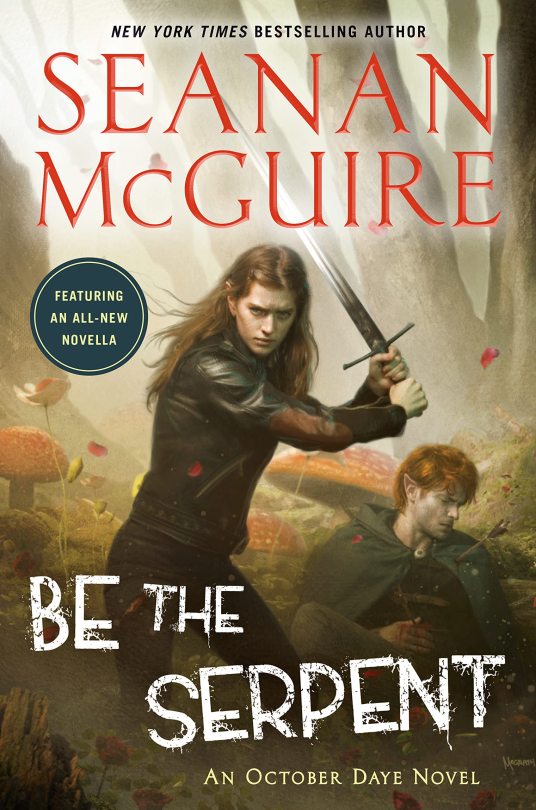
Title: Be The Serpent (October Daye #16)
Author: Seanan McGuire
Genre/Tags: Fantasy, Urban Fantasy, First-Person, Female Protagonist
Rating: 10/10
Date Began: 09/23/2022
Date Finished: 10/25/2022
Things are going great for October “Toby” Daye; she’s just gotten married to the love of her life, and the future looks positive. But her entire world changes when Jessica Brown, daughter of her best friend Stacy, is brutally murdered. As Toby puts the pieces together, she is betrayed by someone she thought she could trust— and an ancient enemy returns to terrorize Faerie.
“Hello, October,” she said, and her voice was hers and not hers at the same time, the echoing, terrible voice of a goddess, and oh, I was so completely screwed.
For live reading notes, check the reblogs (warning for heavy spoilers).
Content warnings and review (spoiler-free and spoiler versions) under the cut.
Content Warnings: Depicted — Eye trauma/gore (it’s the chapter header art), death, filicide, child death, violence, gore, mind control, drug use (kinda), drug addiction, warfare (kinda), kidnapping. Mentioned — Torture, child abuse, genocide, human sacrifice, domestic abuse.
**SPOILER FREE REVIEW**
Oh, October Daye, a series near and dear to my heart. Obviously it has some appeal for me, considering I’ve made it to book 16. It’s a Faerie-based urban fantasy series (though less urban in recent years) with memorable twists, great character development, and a concerted effort toward broad LGBT representation. That being said, it is hard for me to wholeheartedly recommend this series to others; it’s long, and while some entries are incredible, others… aren’t. The previous book, When Sorrows Come, is the worst in the series due to egregious filler and bizarre editorial issues. By contrast, Be The Serpent is fantastic, featuring a satisfying, emotional payoff built up from the very first book.
October Daye focuses heavily on the long game. While I’m sure some characters and plots are invented whole-cloth, it’s clear many story beats and developments have been planned from inception. A core component of the series revolves around hidden identities. Almost every major character (and there are a lot of them) is either secretly someone else or has something to hide. In a series full of crazy setups and payoffs, Be The Serpent contains the most shocking one yet; no small feat. According to the opening acknowledgments, this was planned a good fifteen books ago. From most authors, I’d be skeptical of such a claim, but I completely believe it here; so many weird details suddenly make sense.
If you’re not familiar with October Daye but have some interest in the series, I recommend reading to at least An Artificial Night (#3, the first major turning point) and seeing if you wish to continue from there. As I said, the series is a little hit or miss, but the hits are fantastic. My personal favorite entries are An Artificial Night (#3), The Winter Long (#8), The Brightest Fell (#11), and now this bombshell, Be The Serpent (#16).
**SPOILER REVIEW**
Jesus fucking Christ, STACY was Titania? Quite literally the last character I’d ever expect. But by God does it explain the weird shit going on with her bloodline and children. It looks like a lot of people suspected this, but I genuinely had no idea. I didn’t expect the casual “Stacy’s kids are kind of weird, huh” detail to explode in such a gut-wrenching way. Yeah, when the pre-release blurb mentioned the betrayal of a long-time ally, my sister and I immediately thought of the two most suspicious characters (Marcia and Stacy) but my brain never made the Titania connection. So like… half-guessed the twist, I guess? Even if Stacy was our second choice?
Anyway, this entry is highly reminiscent of The Winter Long, which is nothing but a compliment. I’ll have to ruminate on whether this beats that book and/or The Brightest Fell in terms of personal enjoyment. I had many complaints about When Sorrows Come and distinctly remember saying the series NEEDS a Winter Long-type shakeup. Well god damn did Be The Serpent deliver. I’m so pumped for where the series is going; I hope the days of filler plots and forgettable villains are behind us now.
Be The Serpent pulls no punches. Its inciting incident is the brutal murder of Jessica Brown, a recurring child character. There’s an overwhelming sense of unease as her mother Stacy becomes more and more suspicious. The reveal that Stacy is (unwittingly) Titania, who’s trapped in an eternal loop of cursed reincarnation and child murder, is… quite something. “Stacy” even MEANS “resurrection”, an infuriating bit of foreshadowing. Titania has been built up as a major antagonist throughout the series, and there’s a stark contrast between her and Stacy, a stalwart ally since book one. I think one thing McGuire did especially well in this novel is portray the transition between the two characters; the sense of wrongness when “Stacy” says something off-color just ramps up the tension until it explodes.
I’ve mentioned this a lot already, but this book solidifies my suspicion that Marcia is Maeve. Be The Serpent all but looks the reader in the eye to say that reveal is coming next, and that she’s someone we know. And there’s a ton of evidence both in this book and previous entries that line up with Marcia– her name, Firstborn acting strange around her, her ambiguous history and heritage, her association with water, the whole “can see through reality” line Toby drops and then refuses to elaborate on, the lack of suspicion around her, and so on. She is the only character in the huge cast that makes sense. I kinda hope the next book is the one to drop the reveal, especially after so much specific buildup for it in this entry.
Be The Serpent also ends on a cliffhanger, which I believe is a series first. Even though A Killing Frost drops the Oberon twist at the end, it still wraps up its conflict. Things are ambiguous here though. Toby has been kidnapped and brainwashed? Is she in a dream, a manufactured reality, or has Titania actually bent the world to her own whims? Is the August Toby encounters actually her half-sister, an illusion, or someone else? Is “Father” Simon and “Mother” Amandine? There’s also the unanswered question re: how Simon managed to resist Titania’s mind control toward the end of the book; he is “of her blood”, and his genetically identical twin Sylvester fell under her thrall. Until this point, Simon has been the poster child for “easily mind controlled” – by Titania’s daughter Eira no less– so I’ve got nothing on why that happened. Whatever is next, I’m looking forward to it. While recent entries have been a little hit or miss, the final chapter of Be The Serpent establishes an intriguing premise in the next book, at least.
8 notes
·
View notes
Text
thoughts from watching like episode 4 to the end:
aguni and takeru were definitely 💅
the whole "the beach" section kind of dragged on without any real payoff and in some places felt like an excuse to put all the female characters in bikinis while all the men could just stay in essentially the same outfits
the joy that entered my body when usagi wasn't the only one hinted at being trans (her saying that her dad is the only one who accepts her and being not judged in the mountains, you can rip that from my cold dead little trans hands) with them just explicitly having a trans woman character in kuina
I JUST REALIZED THAT THE NAMES ARE THE ALICE IN WONDERLAND CHARACTERS LIKE FUCKING ASIRU = ALICE AND CHISHIYA = CHESHIRE AND IM A FUCKING IDIOT BC I ONLY REALIZED WHEN I WENT TO LOOK UP CHARACTER NAMES TO MAKE THIS POST
not super big into the almost-rape scene i don't think that was necessary and it made me stop watching instantly to go check doesthedogdie AGAIN bc I had Already checked before watching (I only made that mistake ONCE with homonculus and Never Again so I was super alarmed that I somehow missed it and then forgot that they said that technically there isn't one)
idk if it was me but the constant killing of main side characters kind of made it hard for me to bother as a watcher try to make connections to them bc I knew they'd probably die soon
the build up of asiru figuring out the first game, to there not being any real twist to the majority of the games and him not figuring stuff/patterns out (why emphasize him being a Hardcore Gamer so much then) only for me on the last game to have figured out the plot twist of who the "witch" is at the very beginning bc it was the only thing to make sense was a little grating - imho the life/death game shouldn't have been the intro bc it put too high of expectations for the following games that were just doing what /I/ would have done rather than figuring out the clues
WAS THERE A WAY TO HAVE ALL WON THE WOLF/SHEEP HIDE AND SEEK GAME THEN???! Bc I thought for SURE chota and the lady would survive bc they were the only ones who were "hiding" from the wolf and the twist would have been that karube would have survived if he just hadn't exposed himself at the end
i saw a bunch of people upset that squid game was getting so much attention bc this was better and tbh it's GOOD but i think squid game was more engaging with both it's commentary and ability to make almost every death that wasn't just background characters feel engaging and have an impact
#long post#sorry i got to rambling#this is definitely more just for me than anything else#alice in borderland spoilers#alice in borderland#also i just learned its based on a manga so that's probably the reason for my gripes tbh so sorry if the manga fixes some of these issues
10 notes
·
View notes
Text
SCK/Edser ask (33 & 34 spec)
(asks under the cut)
Anonymous said: Do you know what happened with the second set of writers? I know Ayse left on her own accord but why the sudden shift from that second writing team to these new ones? I don't think they even announced that the writers were changing, the fans found out during the credits one day. If that second set of writers was still here, I'd be fully confident that we're going to get a great payoff with Serkan when he remembers but they're not, so my expectations are rock bottom at this point
Such a bummer! No idea what happened to them. I’m wondering if they signed on for a certain number of episodes and when those were done, they moved on? Only being around for 7 or 8 episodes is not a lot though. One wonder if it was them or the production company wasn’t happy with them? Though the episodes were pretty well written so I’d hope the production company didn’t jettison them. Or just a run of the mill scheduling conflict.
In any case I agree, I’d have so much more confidence in their execution of this story if they were still writing.
With this new team, I honestly thought that episode 32 was decent, but 33 just sort of dashed that away it was so poorly executed.
Anonymous said: Hi - I always value your thoughts on SCK so thanks for taking the time to reply to asks! :)
Something that’s been plaguing me since the amnesia plot began is that nobody seems to have told Serkan about the BIG DETAIL that his father was responsible for the death of Eda’s parents???! Like surely that would provide some crucial context to Serkan and raise several questions e.g how did I manage to stay in a relationship with this woman, we must have had a strong relationship/overcome huge problems/trusted eachother etc. It just baffles me that everyone seems to have forgotten about what used to be a major plot line. How do you think it could play out if Eda or maybe Aydan revealed that back story to amnesia Serkan?
Thanks, I appreciate the kind words! Agreed! This is a headscratcher. When he came back I kind of assumed that he knew that part of the history, at least at a superficial level, just because he sat down with Engin and heard the story from his perspective. I can’t imagine Engin would leave that part out, and it’s pretty integral detail in how Eda’s grandmother, and then Eda, ended up with 45% of the company.
I also would guess that Selin would have told him about it, just because it allows her to paint Eda as potentially someone who was out for revenge from the beginning, someone who targeted him and manipulated him because of it.
So I think he must know, at least something about it about it, what’s frustrating is that it doesn’t seem like something that weighs on him or that he’s curious about. Or perhaps when he first heard about it he compartmentalized it and it didn’t weigh with him because at that time Eda was some evil person out to manipulate him, so he hasn’t paid it much attention, but now that he’s gotten to know her and realizes he has feelings for her, he hasn’t really revisited it? He’s very confused and has a lot going on and he’s thinking about her all the time, while trying not to, so it may have gotten lost in that tug-o-war.
I do hope it comes up and they have a conversation about it. How has he not already asked her, “If my father was to blame for your parent’s death, why would you want to marry me?” Because regardless whether or not he’s in love with her, this is new information to him. And he hasn’t dealt with the emotional fallout of finding out his father did that and hid that, and the affect it would have had on Eda. One would hope that even robot Bolat would feel some compassion toward a woman his father was responsible for orphaning.
Anonymous said: one of the asks you got about serkan not remembering things via their special "objects" had me thinking about one line he says waaay back during their breakup where he says something along the lines of he "doesn't need things for him to remember her" when he gets rid of her things at his house.. i know the writers aren't writing it with that in mind bc i know even most of the fandom doesn't remember it since it's been so long, but i still think it's quite apt for the situation 🥺
YES! it’s in episode 24, when she is over at his house and she notices that none of the things from their time together are there and she says something like that it’s probably for the best because if they’re here you can’t forget. And that’s when he says:
“In my opinion, things are not needed to remember a person.”
I agree that it’s quite appropriate for the current situation. It’s not about the things or the objects, it’s about them.
Anonymous said: i know people feel like we've been going in circles, at to some extent we ARE.. (i mainly think as long as the engagement games keep going it will feel like that) but serkan has made huge progress since he came back in 29.. the serkan in 29 or even 30 would not be reacting like the serkan in 34.. sure he still says things that are frustrating to eda and audience (mainly to rile her up, but also bc he prob doesn't realize it's hurtful) but his progress IS happening even if it doesn't feel like it
Oh, I 100% agree. Serkan has made huge progress, the things he said to Engin this episode would have been unthinkable in any other episode since the amnesia. Serkan going to the flower shop and helping her plant terrariums would also have been unthinkable pre 32. However, I get where the frustration is coming from because he always sort of circles back to a place in his interactions with her where it feels like little to no progress has been made. Though, as I said last week, I do think they show cumulative affect, when they have those big moments where they make progress, he’s further along than he was during the last big moment. But I think him stepping really far back in other interactions is one of the problems of the writing. They need more nuance and they need to let us see more into what’s going on in his brain.
Anonymous said: After everything that has happened I cannot see Eda appreciating a kiss from Serkan while he is still engaged to Selin. So maybe her first reaction after the kiss is to ask if he got his memories back and then something about Selin. When it becomes clear that they are still together then I could see her telling him off. Something like “when you’re engaged you aren’t supposed to be kissing other people and if you want to kiss other people then maybe you should not be engaged.” Or even “when we were engaged if I had found out you kissed someone else, it would have killed me” so you need to figure out what you want & stop hurting people. I could care less about Selin being cheated on because she is the worst but Eda deserves way better than that. Plus it would show Serkan that she really is a good person especially since it is very clear how much she dislikes Selin. She gave back the ring after he got engaged to Selin and unlike Selin, is not willing to accept crumbs given to her by anyone let alone Serkan. Maybe that finally results in Serkan dumping Selin by the end of the episode to chase Eda. Probably grasping at straws right now but I so badly want to be positive about this next episode. 🤷🏻♀️
Yes, I could see something like this, but right now, if I had to bet money, I’d say that kiss is his fantasy, so we won’t actually be dealing with this issue.
We shall see!
Anonymous said: Will episode 34 finally be when Selin leaves? Surely 6 episodes of her is enough? 😭😭😭
It was spoiled for so long that she’d be leaving in 34, but at this point I don’t see how that would fit! She appears to have been at all the location shoots.
What do we need to do to get rid of her? Some ancient good riddance ceremony? A gofundme? I’m in!!! Whatever it takes at this point I’ll do any ritual that will get rid of her.
Anonymous said: I think it's interesting that Ayfer actually hasn't been that anti-Serkan since this amnesia storyline started (maybe its b/c she hasn't had too much time to think about it since she was spending all her time on Alex lol), even though it'd kinda be the perfect time to dig into it since Serkan is now treating Eda differently. But now Ayfer is better than Aydan, Miss "I knew your fiance was alive but didn't tell you." I thought what she told Eda before the restaurant was sweet. She gets 1 point.
Agreed, she gets one point. But just one. We’ll have to see how she does going forward. I kind of assume that she saw Eda’s devastation when Serkan was missing and it sort of snapped her out of her selfishness when it came to her not wanting Eda with Serkan.
#Sen Çal Kapımı#Edser#Sen Cal kapimi#sckask#sck speculation#sck episode discussion#sck 1x33#sck 1x34#asklizac#anonymous
13 notes
·
View notes
Text
Speed
youtube
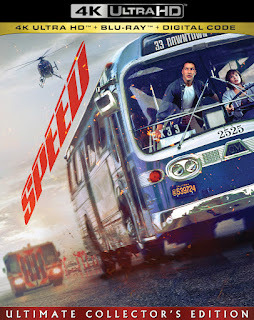
Today’s entry will mark the first official 4K home video release I am writing about. I already own a few other 4K UHDs, and a couple of months ago, I watched my first 4K video at home with 2001’s The Fast and the Furious. However, I already covered that movie’s BluRay release here several years ago, so I will not be dedicating another entry for it, other than to say that the 4K upgrade pops and makes it look like a new release. Today’s entry is for 1994’s Speed (trailer). Before diving into this movie, I noticed one of the tracks from this film’s score repeatedly used throughout sounds awfully like one of the main themes I primarily associated with the Metal Gear Solid franchise. I have no idea if this was pointed out before, and I just overlooked it all these years, or maybe I am grasping at straws. Click or press here to take a listen and decide for yourself. 1994 was a hell of a year for Hollywood movies primarily transpiring from a highway with The Chase, Speed, and the OJ Simpson Bronco chase….oh wait (although I highly recommend the ESPN 30 for 30 on it, simply titled: June 17th 1994). The majority of Speed has a straightforward premise: serial bomber and local madman Howard Payne (Dennis Hopper) planted a bomb on a bus rigged to explode once the bus drops below 55 miles per hour. Police officer Jack Traven (Keanu Reeves) is alerted to this by the bomber himself to exact revenge on Traven after successfully rescuing hostages from an elevator Payne armed at the beginning of the film.
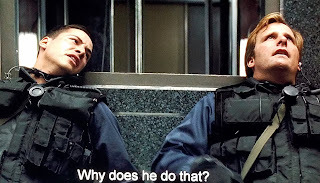
From there, for the middle hour of this nearly two-hour film, the action almost entirely takes place on the bus. Traven makes a grand entrance onto the bus by commandeering a Jaguar and having its owner (Glenn Plummer) take the wheel so Traven could heroically leap onto the bus and save the day. It would not be that easy of a rescue mission as Payne has eyes on the bus, and Traven has to play by his rules and get him his $3 million ransom to disarm the bus. Without question, the middle hour on the bus is the best part of the film. The opening half-hour is an excellent appetizer with the elevator hostage crisis that Traven and his partner, Harry (Jeff Daniels), successfully foil. However, once the action shifts to the bus is when Speed takes off. Shortly after taking control of the bus, one of the passengers freaks and inadvertently shoots the bus driver, and a fellow passenger, Annie (Sandra Bullock), takes over the wheel. Throughout the film, Annie and Traven have wonderful chemistry, and I could not help but root for the duo throughout. Every couple of minutes, there is a new potential conflict to overcome to keep the bus going over 55mph. The film wisely peppers in brief dialog exchanges to let the movie breathe just enough before the next hurdle makes itself present.

The film's standout moment is the major obstacle for the bus to overcome when it encounters a stretch of unavoidable highway under construction and missing a hearty chunk of the road. Traven’s solution is that since that stretch of a road is on an incline, they may clear that gap if they build up enough speed! That epic stunt hits all the right notes, and I got goosebumps all over again re-watching it, and odds are, I bet you did too if you have seen this movie. If you have not, then watch this scene and see for yourself by click or pressing here. A lot of the critical discussion in the aftermath of this movie was if that jump was realistically possible. The best thing I can do is to compare it to another film, Road Trip, which is likely a better indicator of what could happen when attempting such a feat. Once the middle bus portion of the film is over, there are still about 20 minutes left where Traven tracks and chases down Payne in a subway station. The movie felt over once the bus portion had such a satisfying conclusion that it almost feels wrong to keep sticking with the film by this point, but I recommend you do since there is a satisfying payoff in the form of Payne’s demise. I have to share a story now when I first saw this film at around 13 or 14 on VHS. My dad’s VCR had what seemed to me at the time was a revolutionary feature where if I kept pressing the pause button repeatedly, it would slowly, frame-by-frame, play the film in super slow-motion. At that age, I thought this was a fantastic way to get the most out of the biggest stunts in action scenes. My favorite moment exploiting this feature was seeing Traven and Payne wrestle around on the top of a subway train until Payne was not watching his field of vision, and a warning light lead to his sudden beheading. I slow-motion replayed that sequence countless times in my awkward, early teenage years. Suffice it to say, Hopper plays the out-of-his-mind bomber perfectly, going so far as to make sure he receives his appropriate cinematic comeuppance.
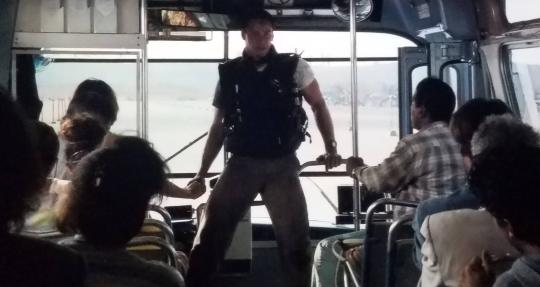

The director ensures the many passengers on the bus maximized their minutes to the point I where it feels like you are right there with them!

Two audio commentaries are the only extra features of the 4K disc in this 4K/BluRay combo pack. One is with the director, Jan de Bont, and the other is with producer Mark Gordon and writer Graham Yost. Props are to whoever decided to subtitle the commentary tracks. I very much appreciate it! I first started to bounce back and forth between the two commentary tracks, but Bont was way too relaxed and had too many pauses to hold my attention, and I finished up with his track within five minutes. However, Yost and Gordon are very much engaged from beginning to end and have fun cracking jokes and sharing memories throughout. Some quick takeaways I got from them were how they wanted to film a major scene outside of a sports arena, dealing with critics poking holes at how unrealistic their stunts were, and how watching the movie felt very different at the time of the commentary recording just two months after 9/11. The BluRay disc contains the remainder of the bonus features. Inside Speed is a four-part feature lasting just under an hour breaking down the visual effects, stunts, and location sequences, but half of it also contains an HBO First Look special hosted by Dennis Hopper that hits all the right kinds of cheesy mid-90s EPK nostalgia that it is worth checking out. Aside from 12 minutes of extended scenes and a Billy Idol music video that seems totally off base with the tempo of the film, there are a couple of Action Sequences mini-features breaking down some of the stunts. I highly recommend watching the one dissecting how they did the bus jump, as it shows raw footage of what really happened when they shot it, and showed footage of some of the specific safety measures they instilled to make that stunt as safe as possible and had some eye-opening interviews with the stunt driver before and after.
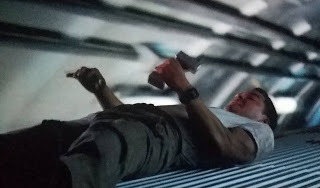
After watching that old VHS copy nearly a dozen times, Speed wound up being one of my favorite action films I got burnt out early on and never bothered upgrading to a DVD or standalone BluRay. Watching it again in 4K all these years later breathed new life into it for me. I am not an expert at breaking down video quality by any means, but watching the 4K disc on my 4KTV gave the impression of this having far more current production values. The editors somehow managed to remove all the old film grain defects for a smooth 4K upgrade. If you have not seen Speed yet, then it has everything you could want out of a mid-90s action movie with explosions, gripping thrills and stunts, dramatic rescues, plenty of zinger one-liners…..and a Billy Idol theme song. Pardon me while I attempt my best Dennis Hopper impression here, “Pop quiz, hotshot, which 1994 blockbuster that takes place primarily on a bus is a perfect candidate for beer and popcorn movie night at home?” Other Random Backlog Movie Blogs 3 12 Angry Men (1957) 12 Rounds 3: Lockdown 21 Jump Street The Accountant Angry Video Game Nerd: The Movie Atari: Game Over The Avengers: Age of Ultron The Avengers: Endgame The Avengers: Infinity War Batman: The Dark Knight Rises Batman: The Killing Joke Batman: Mask of the Phantasm Batman V Superman: Dawn of Justice Bounty Hunters Cabin in the Woods Captain America: Civil War Captain America: The First Avenger Captain America: The Winter Soldier Christmas Eve The Clapper Clash of the Titans (1981) Clint Eastwood 11-pack Special The Condemned 2 Countdown Creed I & II Deck the Halls Detroit Rock City Die Hard Dirty Work Dredd The Eliminators The Equalizer Faster Fast and Furious I-VIII Field of Dreams Fight Club The Fighter For Love of the Game Good Will Hunting Gravity Grunt: The Wrestling Movie Guardians of the Galaxy Guardians of the Galaxy Vol 2 Hell Comes to Frogtown Hercules: Reborn Hitman I Like to Hurt People Indiana Jones 1-4 Inglourious Basterds Ink The Interrogation Interstellar Jay and Silent Bob Reboot Jobs Joy Ride 1-3 Justice League (2017 Whedon Cut) Last Action Hero Major League Mallrats Man of Steel Man on the Moon Man vs Snake Marine 3-6 Merry Friggin Christmas Metallica: Some Kind of Monster Mortal Kombat Mortal Kombat Legends: Scorpions Revenge National Treasure National Treasure: Book of Secrets Nintendo Quest Not for Resale Old Joy Payback (Director’s Cut) Pulp Fiction The Punisher (1989) The Ref The Replacements Reservoir Dogs Rocky I-VIII Running Films Part 1 Running Films Part 2 San Andreas ScoobyDoo Wrestlemania Mystery Scott Pilgrim vs the World The Secret Life of Walter Mitty Shoot em Up Slacker Skyscraper Small Town Santa Steve Jobs Source Code Star Trek I-XIII Sully Take Me Home Tonight TMNT Trauma Center The Tooth Fairy 1 & 2 UHF Veronica Mars Vision Quest The War Wild The Wizard Wonder Woman The Wrestler (2008) X-Men: Apocalypse X-Men: Days of Future Past
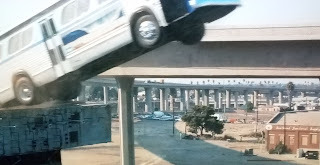
#random movie#speed#keanu reeves#Sandra Bullock#jeff daniels#dennis hopper#glenn plummer#jan de bont
4 notes
·
View notes
Text
LET’S TALK PACING
Let's talk pacing, because it's a nebulous thing that I think deserves to be talked about more. BUT in order to talk about pacing, we need to talk about structure.
Writing a book is a thing. Most people who start out writing one, never finishes. They get stuck halfway, or they get a better idea, or they run out of steam, and even if they do finish it, they take one look at it and realizes it is not what they wanted and despair.
I get that. I really do. Most of the things that people write are short stories. Why? Because they are short, fast, fun little snippets. They might be a fanfiction filling out an established story, or just a scene that got stuck in your head, or even a carefully structured piece meant for publishing. It's still short. It's in the name. So you write it, check the grammar, maybe send it off to a beta, make sure that the language is good, and that you get across what you want to. Then you're done, publish and move on. The majority of time is spent actually writing, and most of the editing is done on the fly.
Why? Because it is short enough that you can keep everything in mind. It's a song, not an album.
This is what many people try to do with books, treating each chapter as a short story. Write, fix, edit, next chapter. Books... doesn't work that way.
One of my favorite illustrations of this is an author I am following on twitter (V.E Schwab, the structure of Vicious is -chef's kiss-) posting a picture of her and her editor trying to fix her latest (at the time) book before the deadline. The picture was of the floor filled with yellow papers detailing what happened in the scenes, and they kept moving around scenes to find the flow of the book. Because with a book, writing 'the end' is not the end, that is just the beginning. Because only when you've got the text down can you start making sense of the flow. Do you need to add scenes? Remove them? Move them around? These are the parts that are impossible to fix on the fly, because you don't know until you've got the end. It's too big. Too complex. It changes too much from what you've originally planned.
This is why I am so adamant about not fixing grammar or bothering having nice writing until the alpha is done. I don't know if the scenes will stay. I don't know if they need to be rewritten. I can't know.
In Rebirth, the scene where you steal the Rat-King was in a different place, and a lot more simple and dry. It was the part playtesters skipped through to get to the good stuff. I had to move it, rewrite it, add a lot of scenes to it just to make it fit better into the narrative and be fun. I have already done one round of changes to Retribution because I knew they were needed (moving chapters around, adjusting the timeline) but I can't look at it until I'm at the end,
If there is ONE advice I have to ANYBODY out there writing a book is to FINISH it before you start to edit it. Don't go back. Don't fix things. DON'T REWRITE THE START. JUST DON'T. Not until it's done. Otherwise it's wasted work. Take notes, but don't write it.
Just finish the damn book first.
It's taken me a lot of courage letting other people see my unfinished work. It's harder than I pretend, because I'm a perfectionist, but I also know that the end result will be the better for it. So I will suck it up. The biggest issue is that I can fix coding errors, but I CANNOT go and fix the pacing. Not yet. It will just sit there and annoy me, and I have to try to ignore it. It's not easy.
And here we come to the BIG problem with pacing.
PACING IN A BLOODY CHOICESCRIPT GAME.
It is a nightmare. In a book you have control. Here, the more choices you give people, the less control you have over the pacing.
Let's take a simple book. A is for Action, I is for Interaction, and R is for Romance.
A - I - A - I - A - R - A is a common pacing. A mix of action/plot and character interaction ending in a romance and a climax. No, not that kind of climax, get your mind out of the gutter.
In Rebirth I had a pacing like this, because the Interactions were separate, Ortega for the hero side and the past, Mortum for the villain side and the future. No complications. Simple. Easy to pace. And then we started to add love interests.
A - I - A - Ia/Ib/Ic/Id - A - Ra/Rb/Rc/Rd - A
Not that much more complicated. More alternative scenes, sure, but still straightforward as games go. Talk to person A or B. A lot of games that locks in your romance does this, choose the same interaction to build romance points, enough and you'll get the payoff at the end.
But some of those scenes were so nice, and would also work if you are friends. And I wanted a platonic playtrough as well. It's just that well, the friendship scenes are already there, and you can care about more than one person so why not be able to romance one and be friends with the other?
A - Ia -Ic - A - Ia - Ic - A - Ra - A
And all of a sudden those action/plot scenes are a lot further apart.
But some of those interaction scenes were cool, and kind of plot related things were revealed so maybe everyone should have those not to miss out on content, right? And that also helps with not having to choose one out of five options and feel shut out from the cool things in there for no good reason. In real life, people have time to do more things, right? Not to mention that you need more interactions to do more groundwork for the romance, which some people want to happen right now, and other people draw it out.
A - I - Ib - Ia - A - Ia - I - Ib - A - Ra - A
By now our plot/action A scenes are getting further and further apart... and all of a sudden someone says, well, there's a lot of talking and not much action in this game? Because we can have one playthrough that is:
A - I - Ib - Ia - Ic - A - Ia - I - Ib - A - Ia - Ra - A
because they talk to/wants to romance everyone, while another playthrough is:
A - I - A - I - A - R - A
because they are playing a depressed loner who would rather skip at least two of those I scenes because that would be in character.
And these are the things I'll have to sit and balance. Because there is no canon playtrough. Because some people will want to talk to everyone, and I have to make the decision if I should let them, and risk them complaining that the game is slow and too talky, but if I don't, they might complain that they get cut off from content for no good reason because realistically in the game they would have time.
And on the other hand I have to decide if I should allow people to skip content because it would be in character, and risk players missing out on content, information and maybe even think it was a short and boring game if they only played it once. I made the Lady Argent mind dive optional in Rebirth, and I think it was the right call. I did not make the Ortega argument in the park optional because I wanted that interaction there, though it was against character for some mc's to meet up.
These are the things I have to juggle, in addition to the pacing.
I am taking a big risk with Retribution, but I've allowed myself the possibility of failure, rather than taking control. I am giving the players/readers more variation/control and choices than I had planned. It's going to be very hard getting a decent pacing at the end, for all the varying playthroughs. But I'm gonna try.
We'll see if I'll manage to pull it off.
229 notes
·
View notes
Text
Psychonauts: Setup and Payoff Done Well (If Not Perfectly)
So about a year ago I posted a long lecture about how Final Fantasy XV and Kingdom Hearts 3 had major problems in the story department when it came to setup and payoff. I basically said that Final Fantasy XV had lots of scenes with payoff that were not set up very well and Kingdom Hearts 3 had some excellent moments that set up story elements but never followed through on them. And while I think some of those issues have been addressed with some of the DLC released for both games (I reserve my right to be a little salty Episodes Aranea, Luna, and Noctis were canceled) I still stand by my statement that these games have big problems with this.
During the past year, I have received a couple of comments regarding my position on this, ranging from “Can you give a good example of setup and payoff?” to “Well, if you’re so smart, why don’t you come up with a better example?” And I thought, well, what kind of game would be a good example of excellent use of setup and payoff? What game or series would I say does the job so much better than any writer has or does, video game or otherwise?
And then, the middle of a repeat playthrough I always do before a game’s sequel comes out, it came to me:
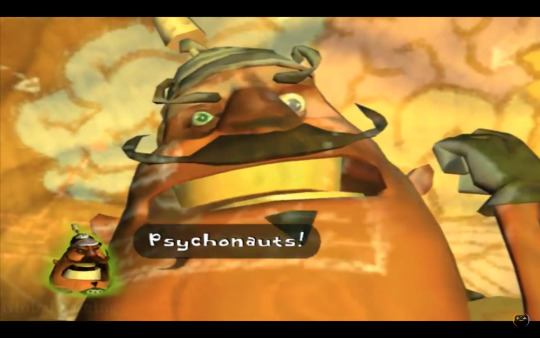
Now Psychonauts has been out since 2005, so a spoiler warning might seem a little silly here, but I think a lot of gamers have been playing it for the first time since the sequel was announced, so just in case: Major spoilers for the original Psychonauts game under the cut.
Whenever someone tries to argue whether or not video games can be considered art, one of the first games that comes to my mind is Psychonauts, and not just because of its amazing aesthetics. It has some of the best storytelling, script writing, level design, music, voice acting, and art direction I have ever seen. This game is possibly one of the best video games I have every played, despite the flaws that it does have (I’m looking at you, Meat Circus), and it is easily on my list of top ten favorite video games. Is it really any surprise that Psychonauts 2 reached its crowd-funding goal of over $3,000,000 in about a month? And yes, I admit that I am one of those backers, just to put out there any bias I know I have.
But this isn’t meant to be a review of Psychonauts.
I replayed Psychonauts a few months ago with the idea of the first game being fresh in my mind when the sequel comes out, which is supposed to be sometime this year of 2020. I was absolutely inundated with examples of effective setup and payoff as I played, so it seemed like the obvious choice to go over how this story-telling technique can be used not only well, but also to the point where it’s almost like there are far too many examples.
Honestly, I could go on and on and on about setup and payoff in Psychonauts’ story, but for our purposes here most of the focus is going to be on just three big things that are really important to the main storyline: Linda the Lungfish, bunnies and meat, and Raz’s dad.
One thing about setup and payoff is that the setup has to actually happen in a way that the audience, in this case the player, can’t miss it. There are several moments in the game that Linda is mentioned, the first time being in the opening cutscene, where Bobby teases Dogen about the monster at the bottom of the lake. You can’t miss the setup when it is thrown in your face that way.
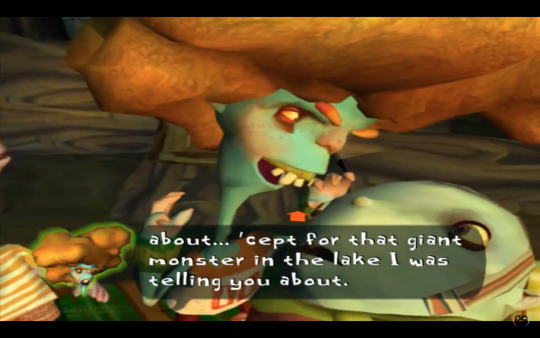
But that’s not the only time we get references to some sort of lake monster. Before going into Basic Braining, the first official level of the game, if Raz talks to Mikhail, the adorable Russian psychic mentions a “giant, hairless bear” in the woods, asking if Raz has seen it and wanting to wrestle with it. Now, it’s not said for certain if Mikhail is talking about Linda or if he’s just referring to the telekinetic bears you meet later on, but it wouldn’t surprise me at all if it’s supposed to be the former.
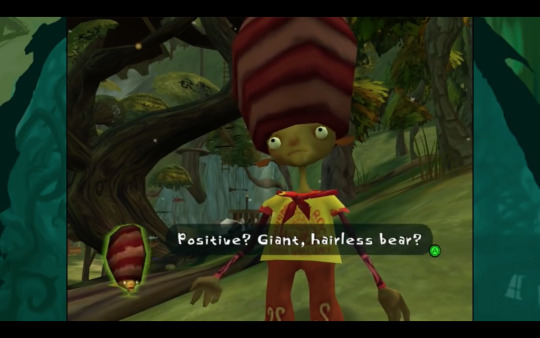
The first time the player heads for the lake, Elton will run up to Raz and mention the “brain-eating fish” that supposedly lives there. Well, now we’ve got both a mention of the lake monster and the fact that it goes after brains. Hmm, sound familiar in retrospect?
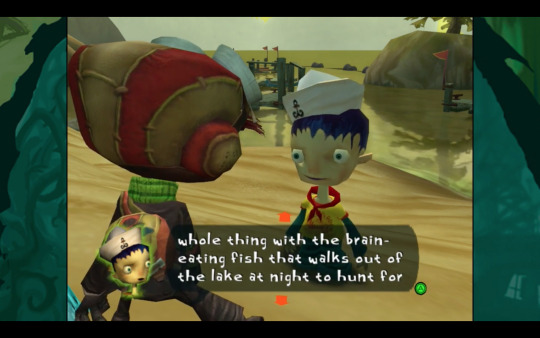
Optionally, Raz can also talk to Elton about the fish being spooked by something in the lake.
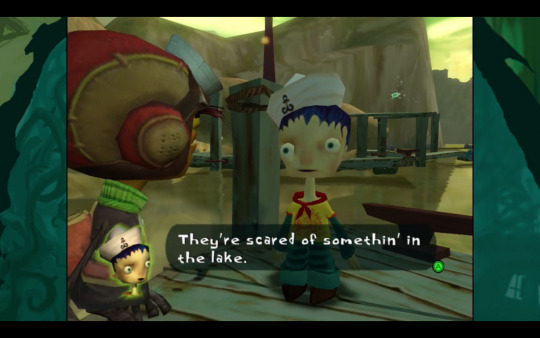
Although only the first lake interaction with Elton is mandatory (whether it’s when you go to see Milla or before then), both of these moments act as reminders of the setup of the lake monster established in the opening cutscene.
And then there’s the scene in the woods between Raz and Lili on the way to Sasha Nein’s Secret Lab. Raz says that something was watching him, a shadowy being that smelled like pond scum.
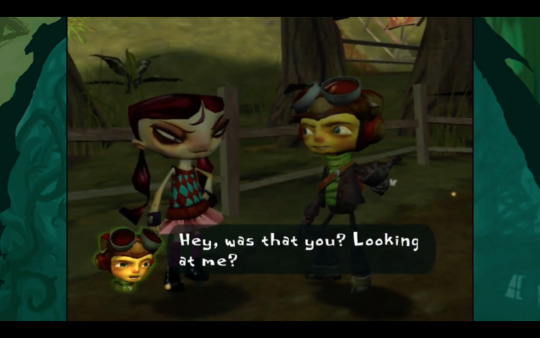
I absolutely love Lili’s face in this scene, by the way.
We kind of get distracted by their interactions and Lili basically trolling Raz, but that’s part of what makes good writing. The scene is foreshadowing something without making it overly overt…not that the game is subtle every time, but the point still stands. This game does a great mix of the obvious and the subtle.
The game also has optional dialogue with Coach Oleander and Raz reporting on a UPE (Unidentified Paranormal Entity), which he suspects is aquatic in nature. And Oleander seems oddly insistent that the lake monster does not exist, that it’s just a camp fable.
Finally we get to the Brain Tumbler Experiment. Needless to say, it’s in this level that a lot of the elements come together. We come across a demon in the form of a big, shadowy figure that spits out a diving helmet. Again, does that sound familiar at all?
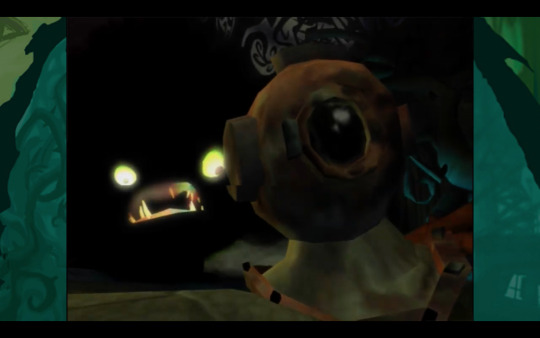
There is a minor mention of the lake monster in the mental vault below the spooky thorn tower (more on that near the end of this post), but other than that there’s a break in the game where the lake monster isn’t mentioned for a while. We don’t get another explicit scene about it until Raz and Lili meet Linda properly at the edge of Lake Oblongata…where Lili gets kidnapped, we go through the boss sequence under the lake, and enter Linda’s brain of Lungfishopolis. And the final payoff occurs with the Hideous Hulking Lungfish transporting us to Thorney Towers and giving Raz her real name, Linda.
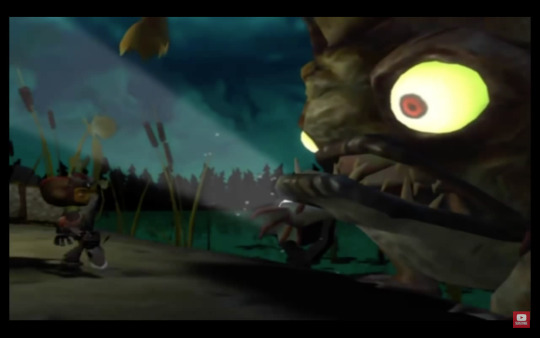
Now would any of that be nearly as rewarding if we had never heard of the Hideous Hulking Lungfish of Lake Oblongata prior to her official appearance? Every single player would just have visible question marks hanging over their heads if Linda just showed up out of nowhere. Deus Ex Lungfish, anyone? But that’s not what the developers did. They spent plenty of time building up to Linda, making her reveal not only make sense but also weaving her into the story so that her reveal is more than satisfying.
There is just one thing I’ve always been curious about, a sort of chicken-and-egg scenario. Did the legend of the lake monster start because genetically-altered Linda showed up and starting attacking campers? Or did the legend already exist and Oleander used it as an excuse to write off any “sightings” of the monster? Any ideas?
Moving on from Linda, we come to the imagery of meat and bunnies.
Without knowing the full ending of the game, most players would think that it’s a bit strange I would stick meat and bunnies together in the same category. Sadly, the connection between these things is a bit on the morose side, and they are actually first introduced at the same time as well.
When I first played Psychonauts, the first time I actively thought about bunnies and meat being related somehow was during the Brain Tumbler Experiment, but that’s actually not the first time the game introduces these. Anyone else notice that Basic Braining has figments of meat cleavers, butcher knives, a pig, a duck, and a fox? I could logic that a meat cleaver and butcher knife fit with the whole army theme, but a pig, duck and fox?
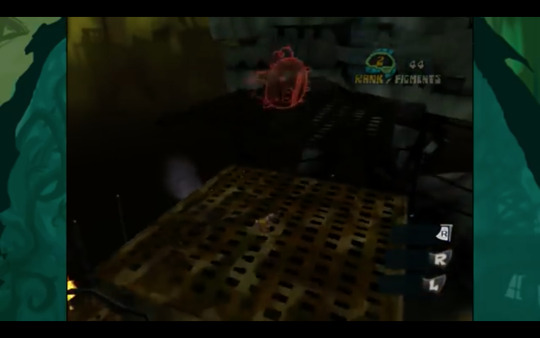
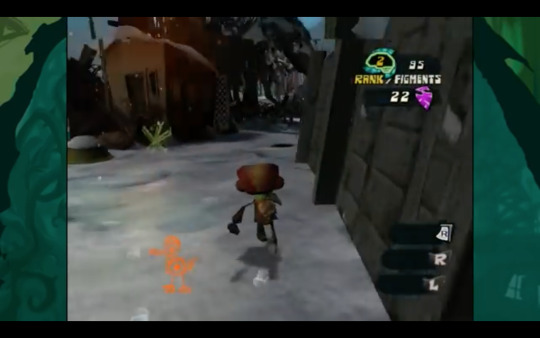
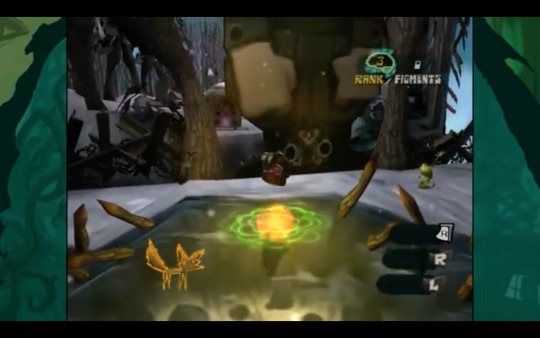
Kind of odd animals would be included in all this, especially animals that are either butchered or hunted. At least that’s what I thought at first.
It is in Oleander’s mind that we first see the “meaty plant” that Lili saves from being squashed by Raz. It’s also here that we see bunnies hopping around the snowfield with the Gatling gun. This early in the game, is this important or just set dressing? I’m ashamed to admit, but I thought it was just weird set dressing when I first played, but it makes more sense as the story goes on.
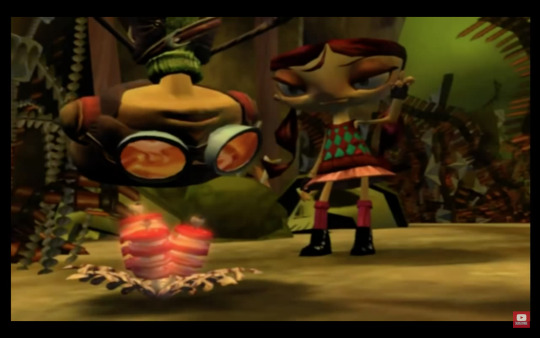
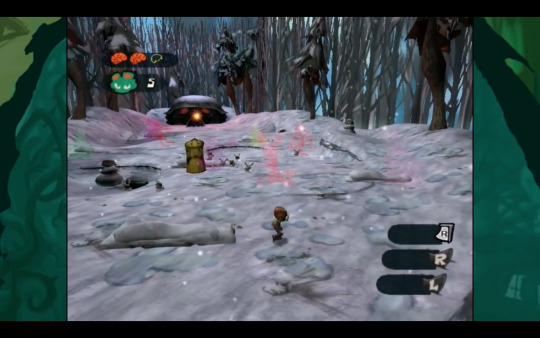
Turns out it’s important all right, since the next time we see both meat and bunnies is in the Brain Tumbler Experiment. “Mr. Bun” seems like a rather random animal to have in Raz’s brain, but then again bunnies showed up in Basic Braining as well. Is there a connection somehow? Sasha tells Raz that an animal may represent a primal fear or memory.
He’s right on the latter, although a player going through the game for the first time might not know why (and I admit, on my first playthrough, I didn’t). And there’s more meat and meaty plants here. Raz doesn’t directly mention these (at least he didn’t during my most recent playthrough, to my recollection) but they are pretty obvious, to say the least.
So that’s two things connecting the Brain Tumbler Experiment and Basic Braining. Is this a normal occurrence? Maybe these things just show up in brains? Lili does mention she had been dreaming of meat plants, after all, both in Basic Braining and in the cutscene before Raz enters Milla’s mind. Maybe it’s a primal need for meat? Don’t tell the vegans I said that. The Vegan Police would be very unhappy with the final level of this game.
After the Brain Tumbler Experiment is finished, we know that the brain interference was coming from Oleander, but it’s not explained why there are meat and bunny references up until that point. There’s actually no mention of either at all in the subsequent levels until the last. Lungfishopolis, The Milkman Conspiracy, Gloria’s Theater, Waterloo World, and Black Velvetopia are devoid of all meat or bunnies, which possibly leads the player to forget about the whole thing for a while (and when I say “the player,” I really mean me).
In fact, we don’t see any sign of either until the final level of the game, Meat Circus. And, oh boy, Meat Circus.
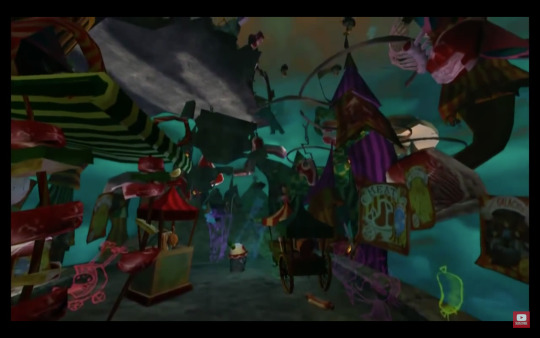
Yeah, it should come as no surprise that I hate this level. I hated it so much that on my first playthrough of this game in 2005, I rage quit and didn’t look at Psychonauts for several days. I eventually went back to it and beat it, but let’s say I was more than a little relieved that they lowered the difficulty for it in subsequent releases.
But I digress.
We reach Meat Circus, the combined consciousness of Raz and Little Oly, and the payoff of all the meat and bunny stuff we’ve seen thus far. We have Frankenstein-esque meat bunnies, platforms made of steaks, rail grinding on bones, trapeze and trampolines of bones and skin, and of course the dark versions of both Raz’s and Oleander’s fathers, who not only are evil but also become a giant two-headed monster. When Sasha said that problems seem larger in your head than in real life, I should have known it would be taken more literally in this game.
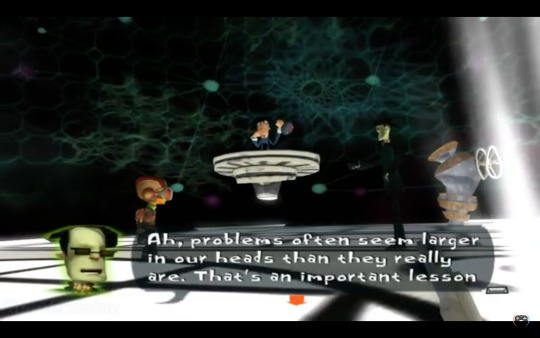
I mean, is it really any shock that Oleander is carrying some trauma after seeing his bunny friend be decapitated by his own father? It’s never said how old Little Oly is, but considering his behavior he is clearly younger than Raz, so this happened when he was in the single digits of age. That’s really not something a little kid should see. That’s just asking for PTSD.
Anyway, back to setup and payoff, which is pretty obvious at this point. We have plenty of mentions of both bunnies and meat throughout the game, leading to the final boss that is both creepy and downright terrifying. Not only does this boss conclude Oleander’s trauma with his father being a butcher and killing his favorite bunny, but it also allows Raz to defeat his inaccurate mental image of his own father. Both of them are able to move forward from that point on. Defeating this monstrosity acts as the ultimate payoff and conclusion for both Raz and Oleander.
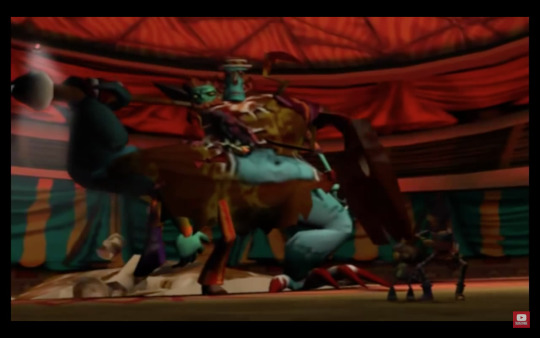
Speaking of Raz’s dad…
Raz’s relationship with his father at the start of the game is strained, to say the least. When Raz goes to learn Levitation from Milla, the very mention of his father showing up to take him home from the camp makes him nervous. Not the best sign here, and his other comments regarding his dad don’t make it much better.
Once Raz reaches cadet ranks ten and twenty, we get cutscenes of Raz talking with Cruller in tutorials for Pyrokinesis and Telekinesis. During Pyrokinesis, Raz first mentions that his father, Augustus, hates psychics and trained Raz in acrobatics to the point where Raz worried his dad was trying to kill him. During Telekinesis, Raz reveals his suspicions that his father is psychic as well. The memory vault we see of Raz running away from home only reinforces Raz’s perspective.
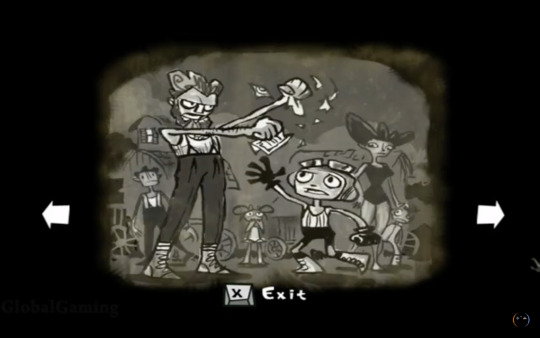
We’re led to believe that Raz’s statements are the truth, which is a logical conclusion since he’s the game’s protagonist, but the end of the game shows otherwise. At first I thought this meant Raz was simply an unreliable narrator, but that turns out to not be the whole story. While Raz is an unreliable narrator in that there are a lot of things he just doesn’t know, it’s not malicious in any way. Raz simply doesn’t know that he father really does care about him. That’s the magic of using the third-person limited point of view.
Up to this point, we’re led to believe that Augustus is a neglectful father at best, but it turns out that Augustus does love his son. He’s just apparently really bad at showing it. The very fact that he is the only one able to break into Raz’s “hard to penetrate skull” shows that there is a deeper relationship between them. And Augustus is clearly distraught that his own son sees him as a monster in his mind. Poor Augustus.
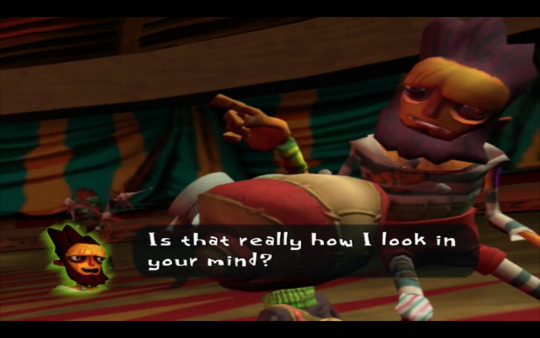
I think that a lot of the interactions between father and son in this game was cut out due to both budget and time constraints, because I feel like there is more to be said with these two than what we get in the final product. (I’m thinking we’re going to get more of that in the sequel, but that is up in the air at this time.) This doesn’t bother me too much though, since we do get effective enough setup and payoff that it doesn’t seem like it comes out of nowhere. They do finally talk to each other and express their concerns, mending their relationship…in the middle of a battle with a two-headed father monster.
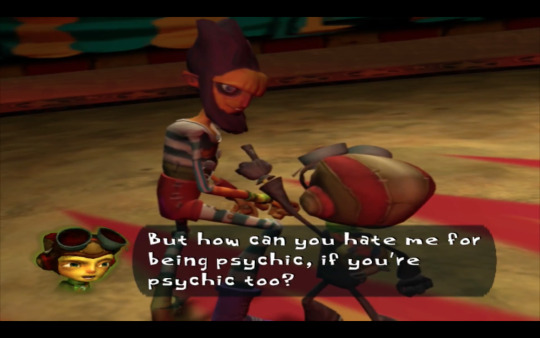
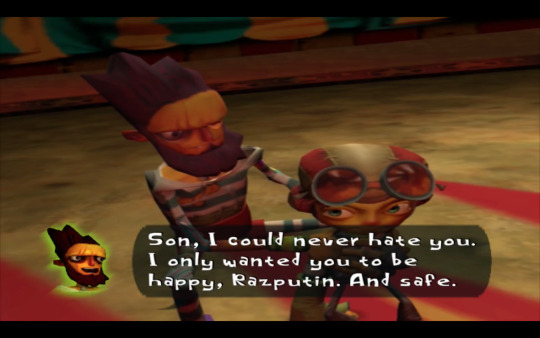
Clearly these two have communication issues. The morale of this story is that it’s important to talk to one each other.
And this is certainly paid off in the end cutscene of the game. When Sasha says they want Raz to come along to rescue Truman Zanotto, Raz doesn’t just run off with them again. He turns around and gives his father puppy-dog eyes, clearly asking for permission to go this time. And Augustus not only gives it, he gives Raz his blessing and encourages him to “show them all.” Contrast this to the backstory of the game, where Augustus flat out forbids Raz from having anything to do with the Psychonauts and Raz running away in secret.
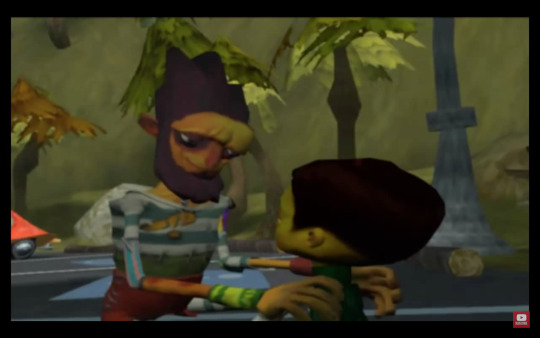
And if that’s not satisfying use of setup and payoff, I don’t know what is.
That’s not to say that all of the setup and payoff in Psychonauts is perfect. To be fair, there are times when the setup can be missed, and therefore the payoff that comes later can be confusing. The most obvious example of this is the nightmare that attacks you in The Milkman Conspiracy. When I first played the game all those years ago, my first thought was, “What in the world? What is this thing and where did it come from?”
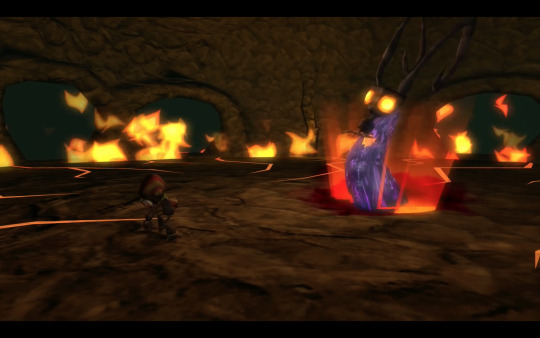
Of course, on subsequent playthroughs, I did find the demon room in Milla’s mind, showing the same nightmares she had caged away. This is the difference between a sane mind and an insane one. Milla has all her demons under control (although notice that they have not gone away) while Boyd’s run amok because he has no way of mentally dealing with them, since his brain is a little bit busy with this, well, milkman conspiracy. The nightmares that attack in Boyd’s brain make more sense after I saw the ones in Milla’s brain. In this case, the payoff wasn’t bad since the nightmare miniboss wasn’t a bad fight, but context in the form of the setup made the payoff better.
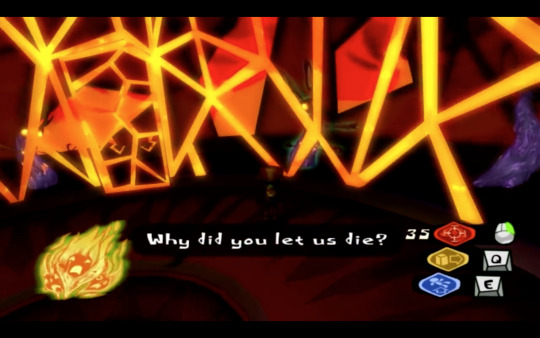
Other times the setup can be missed? The other big one is the resolution of all the campers’ storylines. Unless the player spends time going around camp throughout the game and seeing the interactions the other campers have with each other, the little scene you have with each one once they are re-brained won’t make a lot of sense. The love triangle between J.T., Elka and Nils? J.T. and Chops having conflict about J.T. abandoning his best friend for his new girlfriend? Crystal and Clem attempting suicide to become more powerful? Chloe thinking she’s an alien? Maloof basically becoming a mob leader with Mikhail as his right-hand man? Elton and Milka’s blossoming love? …Just to name a few? Yeah, the context of all that is missed if the player doesn’t bother to talk to the other campers throughout the game, but I attribute that more to the player than the game. The developers accounted for this in the story, so it’s more the player didn’t look for the setup rather than Double Fine just not bothering to include it.
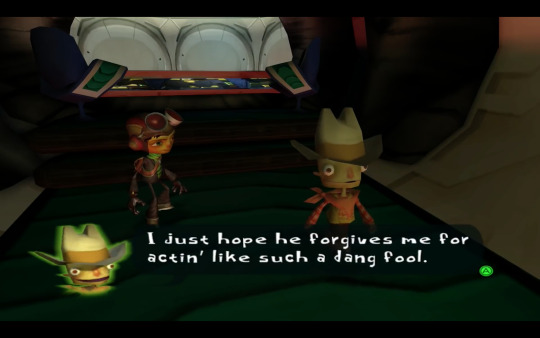
That’s just some examples of setup and payoff that I feel are probably the most important to the main storyline of Psychonauts. They are far from the only examples. Really far from it. Oh boy, could I go on about the scenarios of setup and payoff that happen in this game.
Dogen talking to the squirrels, who tell him that the short man is going to kill everyone, only for them to really be talking about Oleander?
Elton saying that Oleander’s recruiting office in Basic Braining resembles a dentist office, only to find out that one of the main antagonists, Dr. Loboto, is in fact a dentist?

Oleander having a mental vault trapped behind some mental cobwebs? Well, he has something to hide, despite him saying he doesn’t when you first play through Basic Braining. Of course, getting angry at Raz for snooping around a room with a curtain doesn’t give off the idea that Oleander has something to hide. Nope. Not suspicious at all.
Agent Crueller having all the different personalities around the camp, hinting as his unstable mental state?
The Hand of Galochio appearing in the lake as a reference to Raz’s family having a curse to die in water, and said curse just so happens to show up not only as a gameplay element but as a story element during Meat Circus?
Raz being able to read Lili’s thoughts when she doesn’t mean for him to, then for him to do it two more times near the end of the game?
How Lili’s cold stops her from sneezing out her own brain?
Sasha’s hatred of tacky lamps having to do with his past working in a tacky lamp factory? Or the shoeboxes indicating his father was a cobbler? Or the bed as the location of where his mother was horribly ill and died?
Raz needing to climb the “creepy thorn tower” in the Brain Tumbler Experiment, only to later need to climb Thorney Towers Home for the Disturbed?
The mention of the town of Shaky Claim on the giant tree stump at the camp entrance referring to the sunken town that is (somewhat) explored during the boss sequence under the lake?
Raz talking about being back in high school in Black Velvetopia despite being ten years old? Not to mention the stories the dogs tell about Lana/Lampita and Dean/Dingo?
Lastly, do I really need to mention the incredibly weird and seemingly out of place mental vault below the creepy thorn tower? A brain chicken hatches out of an egg, meets a fish in water, goes to a circus, gets placed in a teacup, and blasts people to death? Kind of a summation of Raz coming out of the egg in the Brain Tumbler Experiment, meeting Linda at Lake Oblongata, entering the Meat Circus, and getting placed in a brain tank and defeating two people? Was the mental vault a foreshadowing of the main plot of Psychonauts? I don’t know. What do you think?
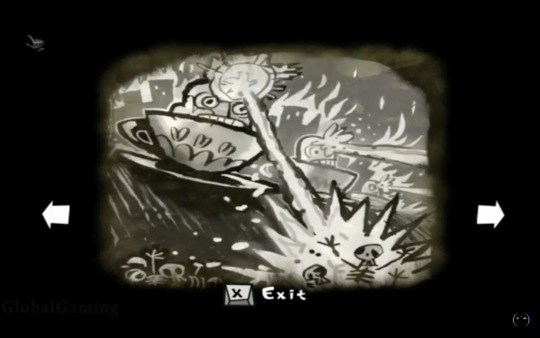
*Takes a deep breath.* See what I mean when I say I could really go on and on about setup and payoff in Psychonauts? There are so many examples that it’s kind of ridiculous. It could be said that there’s too much of this kind of storytelling in the game, but I fail to see how that is a problem. There is such a thing as too much of a good thing, but when it comes to setup and payoff, Psychonauts is not it.
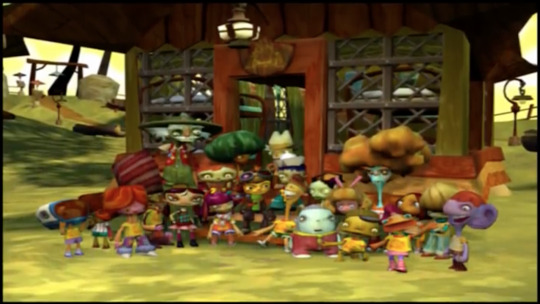
Credits
Screenshots courtesy of the following:
Comic Foil, https://www.youtube.com/channel/UCN-Y6XDe0oWyhgjcGunJqGw
Global Gaming, https://www.youtube.com/watch?v=0pjsxNSwSSA
StoryGamer, https://www.youtube.com/watch?v=ZXZ1vDFp_dw&t=139s
ThatNotSoAznKid, https://www.youtube.com/watch?v=Ford0MGvWIc
153 notes
·
View notes
Text
FEATURE: Why The Early Pokémon Anime Was So Important To Its Audience

The '90s was a big decade for anime. Iconic series like Neon Genesis Evangelion and Cowboy Bebop were born, shows that are still presented as the gold standard of what the medium can achieve. Studio Ghibli continued their string of soon-to-be classics, helping to cement Hayao Miyazaki into a globally-recognized “auteur” status, a title usually reserved for the creators of live-action fare. Meanwhile, Dragon Ball Z, Gundam Wing, and others made their debut on the programming block Toonami, effectively introducing anime to an entire generation of Americans who may have otherwise never been exposed to it.
But what about the importance of Pokémon? That was pretty big, too, right?
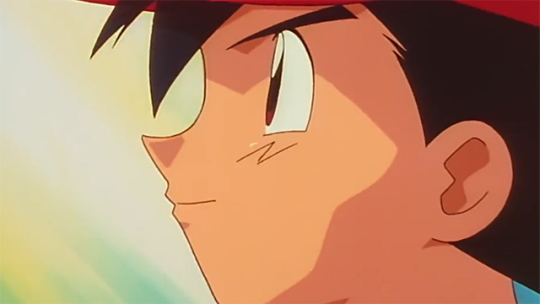
Obviously, the status of the Pokémon anime as it relates to Pokémon as a whole is clear. There has perhaps never been a franchise with more coherent brand synergy, none better at directing traffic so fans of one aspect could be easily guided to another. Aided by an almost supernaturally compelling catchphrase “Gotta catch ‘em all!,” the uncertain development and angst surrounding the first set of titles in the core game series Red and Blue were quickly left in the rearview mirror. Pokémon is seemingly an undefeatable pop culture hydra with the anime serving as one of its many heads.
So how does Pokémon fit in the grand scheme of anime and what it can give to us? Because with all of that in mind, it’s hard not to look at it with a kind of cynicism, viewing it less as a fictional series with all the pros and cons that come with it, and more as an advertisement for itself and other parts of the franchise that has lasted over 20 years. However, I believe the Pokémon anime can be, depending on the specific section, very good at times. And though the explosion of “Pokemania,” as it was dubbed when the franchise landed in the United States, seemed to render it as an extended commercial urging kids to get their parents to buy them a Game Boy as soon as the "PokeRap" finished, I think the early parts of the series are particularly strong.
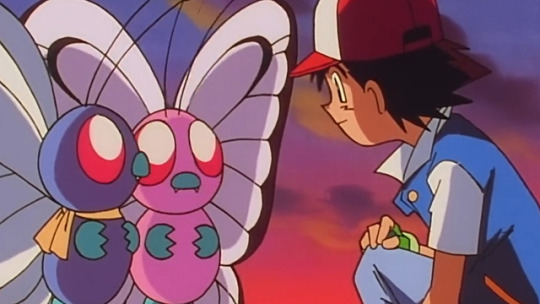
Because while the anime has formed a kind of cyclical pattern in its storytelling, one that allows newcomers to easily latch onto the series whenever they happen to discover it, I think the portions set in Kanto and Johto are extremely cool to examine. The space from the first time Ash Ketchum wakes up too late to grab one of the three “starter” Pokémon from Professor Oak to the time he says goodbye to Misty and Brock at the crossroads following the Silver Conference contains a really touching narrative. One about growing up and learning to rely on others and then, eventually, learning to rely on yourself.
When we first meet Ash, he can barely keep things together. He’s desperate to be a Pokémon Master, but clueless when it comes to most of the techniques involved in actually doing that. He’s stubborn, but his confidence often reveals itself to be brittle bravado, a ten-year-old puffing his chest out only to be deflated when overtaken by an obstacle. His travel partners, Misty and Brock (and Tracey Sketchit for a little while,) obviously adore him, but their greatest shared trait is likely patience. Ash has a lot of learning to do.

This learning is usually slow and painstaking. Critics of the series are often quick to point out that Ash rarely wins his gym battles outright, something that’s a requirement to progress in the games the series is based on. Thus, more important than a solid KO is the lesson learned due to the battle, often something centered around taking care of your Pokémon, yourself, and other people. The “monster of the week” structure usually has Ash learning these lessons again and again, like a child that needs to be politely reprimanded until they fall out of a bad habit.
As the series moves from Kanto to the Johto region, Ash gains legitimate wins with higher frequency, gathering experience while his style remains eager, clumsy, and definitively Ash. His rivalry with Gary Oak — one initially informed by Ash’s seeming inadequacy and Gary’s loud, yet often precise assurance — evens out. At the end of the Indigo League in the Kanto region, Ash finally gets to battle Gary and loses. Then, in the Johto League tournament, Ash defeats Gary and the two make amends thanks to Ash’s defeat of his bully and Gary’s newfound serenity. It’s a nice payoff to their relationship, and Gary’s change of heart reflects the themes of personal growth found in the Original Series.
Meanwhile, Ash’s personal growth often comes with much more heartache. In “Bye Bye Butterfree,” he bids farewell to his first-ever caught monster because it would be happier with its own kind. A few episodes later, in “Pikachu’s Goodbye,” he seems all too ready to let Pikachu live with a pack of the little yellow critters, likely because his experience with Butterfree indicated that it was the right thing to do. Of course, Pikachu comes back to him, because he’s Ash’s ride or die.
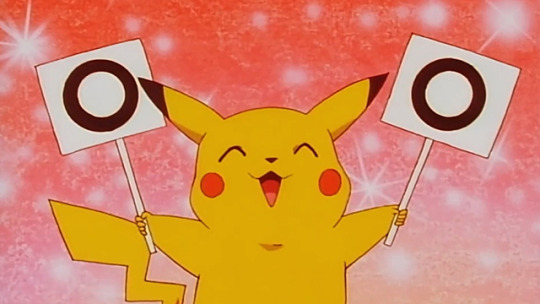
Another relationship Ash learns from is the one with Charizard. Evolved from an abandoned and emotionally distraught Charmander, Charizard is rebellious to the extent that it causes Ash’s Indigo League loss, not because it gets knocked out but because it just doesn’t feel like fighting anymore. What follows is one of the most disheartening scenes in the series, with Ash shouting in anger and sadness at his Charizard to continue while Charizard just doesn’t respect his trainer enough to stand up. Though they eventually gain a sense of mutual reverence, their partnership is marked by this uncertainty.
And finally, the ending, which sees Ash, Misty, and Brock go their separate ways, recalls one of the franchise’s most resonant homages, that of the '80s film Stand By Me. Referenced in the opening moments of the first game, the movie about setting off on your own adventure as a youth and learning where nostalgia ends and the harshness of growing up begins mirrors the ethos of the franchise constantly. At the end of that film, the characters depart one another and the main protagonist muses to himself, “I never had any friends later on like the ones I had when I was twelve. Jesus, does anyone?”
You can get the same feeling from the affirmations of the importance of their friendship Ash, Brock, and Misty make when they head off on their own (though Brock quickly re-joins Ash in the next season of the anime). It’s here that Pokémon displays why it deserves its place among the notable anime of the '90s, not because of its massive marketing push (though that certainly helped its popularity) and not because of how it retold the story of the games (which, as adaptations go, is pretty hit or miss).
.
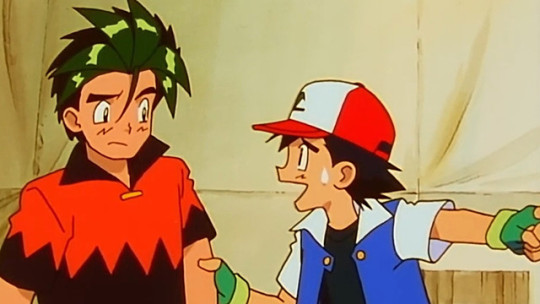
Instead, it’s a story about growing up. By the end of Ash’s time in Johto, it becomes clear that strength was never the objective, that the point of the whole affair was not Ash becoming a "Master." It was about teaching Ash enough so that when the time came for him to go out on his own, he could. And though he finds new companions in the regions to come pretty quickly, the impact of this is not diminished. If you began watching the show when it first appeared in America in 1998, you likely grew up with Ash to an extent, and you likely experienced some major life events during that time, whether it was going to a new school or facing some kind of family change or attempting to achieve some new, grand goal.
Ash and the Pokémon anime’s message was that you could do it. That the trials you’d experienced and the lessons you’d learned and the relationships you’d made had prepared you for it. And that while the future seems scary and unknowable, it isn’t insurmountable. Pokémon teaches you that you’ll be okay. That sounds pretty important to me.

Daniel Dockery is a Senior Staff Writer for Crunchyroll. Follow him on Twitter!
Do you love writing? Do you love anime? If you have an idea for a features story, pitch it to Crunchyroll Features!
By: Daniel Dockery
5 notes
·
View notes
Text
Recycling day: Commentary on “Unique Artifacts”
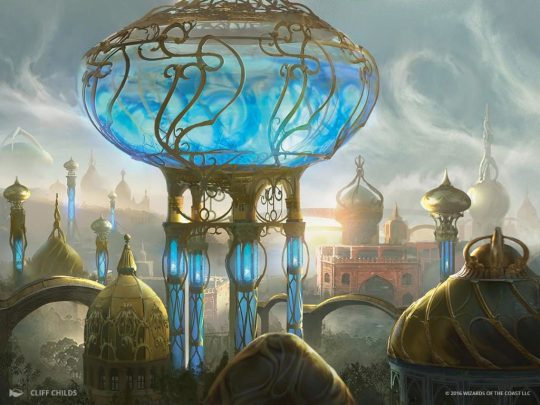
This contest went exactly how I was hoping it would go. A variety of artifacts, a whole slew of unique mechanical ideas, experimentation — what more could I ask for? I’m glad that people liked this one. I’ve been stewing with it for a little bit. I think there were a few wording issues that I’ll get around to, but I’m also a stickler for perfection. Y’all should know how pedantic I am at this point. I’m practically a vedalken.
Anyway. Commentary time!

@ajani — Devra Chai
I really like your callback to Indian inspiration and the nature of Kaladesh. Mechanically, this card’s got some chops. I also like the abstract use of energy here as it relates to food. There are a few easily fixable issues. Firstly, there should be a comma after “sacrificed.” Secondly, as this is a Food, the second ability should be “2, T, Sacrifice Devra Chai: You gain 3 life.” The “You” is super important. Lastly, and most pedantically, as great as the flavor text is, “it’s” should be “its” because English is certainly a language. Small issues aside, good idea overall.
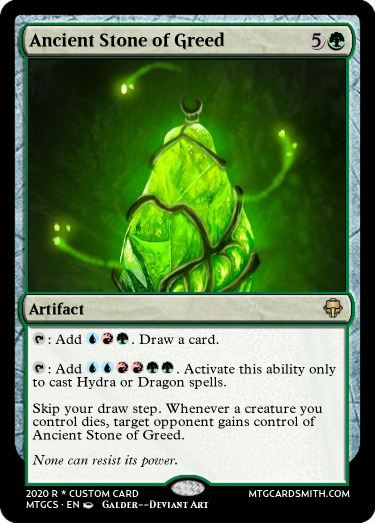
@deafeningsandwichpeach — Ancient Stone of Greed
The power level here is really hard to judge. The draw on the first ability seems really strong. Did you base this on Coveted Jewel? Overall, I feel that this card is a fine idea but a little busted with any artifact untapping. Filigree Sages makes this an infinite draw combo, but it’s not broken wide open. Let’s fix the wording. The second ability should be “Spend this mana only to cast a Hydra or Dragon spell.” This should be four lines, with “Skip your draw step” and the death trigger being on separate lines. I’m 80% sure that “Skip your draw step” also should be the first line on the card, and with that, you can probably take off the flavor text.
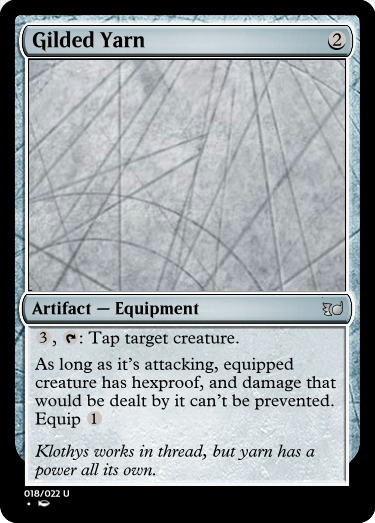
@demimonde-semigoddess — Gilded Yarn
This is an interesting one. Personally, adding an activated ability onto the equipment itself that’s not an equip cost seems a little hard to grok for the average player. Flavorfully, I understand the first ability, but not the attack clause at all. I’m not connecting it to anything specific in mythological tropes. It’s not a bad card mechanically, but I’m a little lost. Did you shift+enter for the equip cost? It looks really close to the other line.
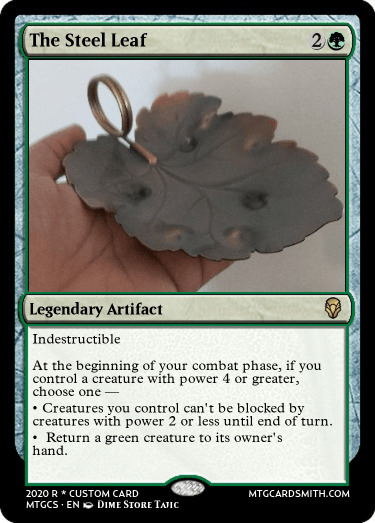
@dimestoretajic — The Steel Leaf
The one and only! I like the callback. From a cursory look, I don’t think there is an actual “steel leaf” on Dominaria, but the sentiment is appreciated. I’m a little iffy on the fact that it doesn’t exactly do anything if you don’t have the trigger, and it doesn’t really help itself to the trigger, but it’s okay to have cards that you need to build around. The last ability is a little awkward because the way it’s worded now you can return green creatures your opponents control to their owner’s hand and it gets around hexproof, which I’m sure wasn’t intentional. “you control” could fix that easily.
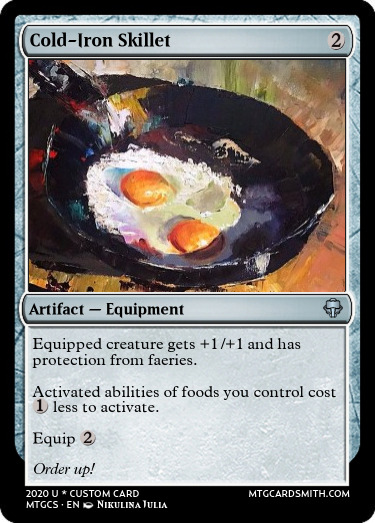
@fractured-infinity — Cold-Iron Skillet
This is a fascinating little equipment. I love the creativity here. Honestly, not a whole lot to say about this one. It’s niche, but flavorful enough. Maybe the second ability should somehow be tied into being equipped to a creature? After all, the skillet’s not gonna do anything by itself, right? Major notes: both “foods” and “faeries” should be capitalized.
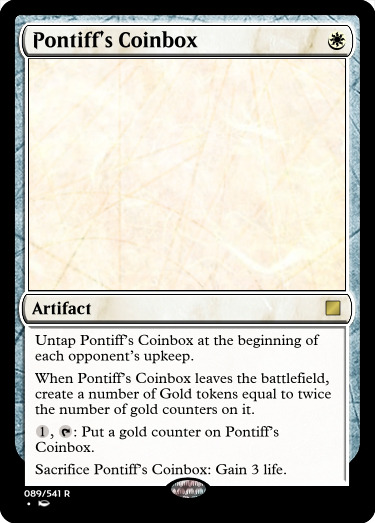
@gollumni — Pontiff’s Coinbox
Now this is unique. I can perfectly imagine the art here, which is majorly cool. I’m not sure why you tied the untapping to each opponent’s upkeep rather than their untap step, which is the way things usually go. And based on the amount of massive counters you can gain fairly early on, “twice the number” might be a little too powerful. The last ability should have “YOU gain 3 life” as well. I’d add a “(1)” to it as well, personally. I’m a little iffy on this kind of white acceleration, but there’s only one way to find out, right?

@greensunzenith — Dust Bunny
It’s a super cute idea, for sure. I kinda like the idea that your opponent keeps having to sweep it away, and that it’ll keep coming back. The difficulty in removing it is a bit of a pain, but that’s the nature of the beast, I suppose. I wouldn’t call the design anything mind-blowing, and frankly, as a one-drop it’s a pain in the butt probably more than it should be, but it’s not bad. Might have to cost 2 or 3 mana, and I would add a little flavor if you can come up with something.
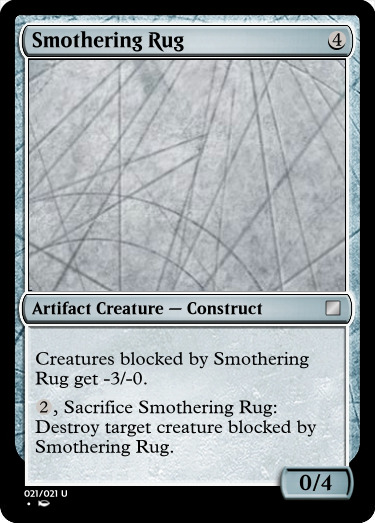
@grornt — Smothering Rug
Well, I didn’t expect a rug for this contest, so kudos there. It changes up combat in a really powerful way, and I’m worried about its power level in a limited format. It’s an anti-trampler, anti-first striker, and man, that makes combat complicated. This is a card that would have to see a significant amount of testing, considering that every deck can play it. Doesn’t blow me away, but it’s good enough. Again, might want to consider flavor text with the amount of rules text that you have here.

@hypexion — Spy Satellite
It’s unfortunate that we had two spy-oriented cards submitted here. Surveillance is a great concept, and I’m glad you used the name in a flavorful way. I don’t know how powerful the surveil is here considering that it’s harder to remove than other creatures which have repeatable surveil. It’s a good card, certainly. I don’t know if the second ability needs UU instead of 1U, but I guess I can see the reasoning. Flavor text is pretty good. Overall, it’s a fine enough card. Save it for a custom cube.

@i-am-the-one-who-wololoes — Press of Magic Knowledge
Ah, batching. I think that you were ambitious in the way that you designed this card, and I’m not sure the payoff is entirely worth it. Seven different creature types is a lot to ask for, and it implies that all these different types would be in a single set. I think that’s entirely too much to ask for. The card itself isn’t...bad? It’s incredibly powerful. The wording might be a little convoluted. Why does it give the ability to the spells, instead of having it just be a trigger? “Whenever you cast an instant or sorcery spell, you may tap an untapped Spellcaster you control. When you do, copy that spell. You may choose new targets for the copy.” A little easier to grok. Name and flavor text could use a little work, too. Doesn’t excite me.
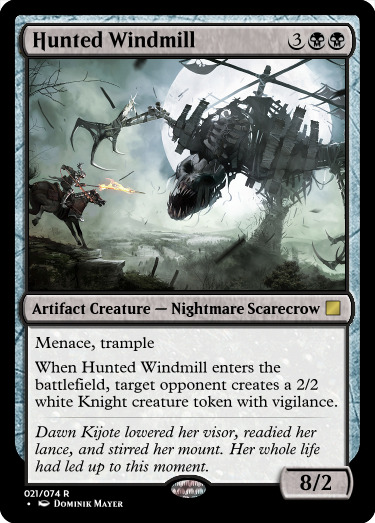
@illharg-the-rave-boar — Hunted Windmill
I’m still thinking about this card. The fact that is has menace and that it gives your opponent a single creature is kind of an “eff you” but in limited, it’s certainly a pain in the butt. The two toughness really makes it feel fragile, but maybe the eight power makes up for it? I think this card could be fine. I think it could even be good. It’s still asking a LOT of questions that only playtesting and the right environment could ask for.
Also tfw “Dawn Kijote.” Take your kudos and go.

@kavinika — Ace of Spades
This card is... Restrictive. Basically, it says that “for the rest of the game, I decide all coin flips,” and that’s not interactive. It’s not exactly fun. If it was a sacrifice effect with a secret kind of ETB, then I guess it would be okay, but unlike Krark’s Thumb, it’s getting rid of a key part of randomness with no time limit, and that’s not great. I liked the philosophy of your submission, but I don’t feel that this card is adherent to MTG principles.
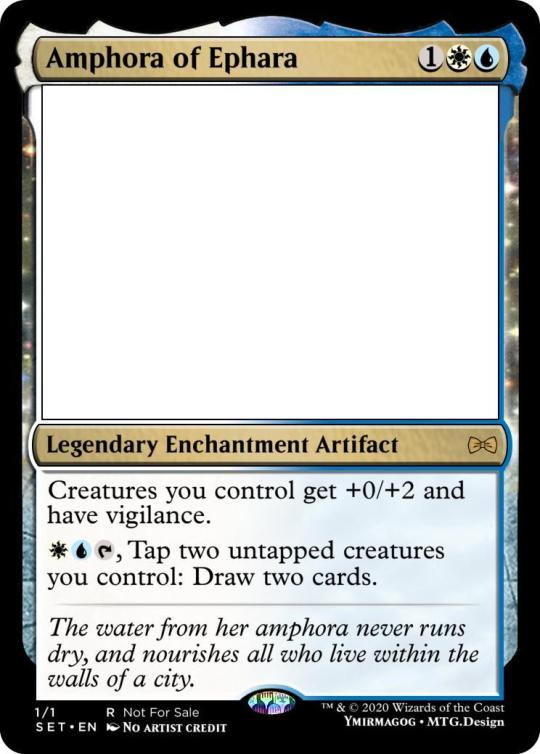
@koth-of-the-hammerpants — Amphora of Ephara
Kudos for making me look up the word “amphora.” Yet another card I can easily visualize! So, in terms of power level. Man. This card is a pain in the butt. In the right deck, it can grind out aggro decks with even the smallest creatures, and I assume there would be enough artifact/enchantment removal to make it not busted, but holy cow this could be a potential pain. And you know what? That’s not necessarily a bad thing. I would call this card annoying, certainly, but not in a “win the game” way. Two things: One, there should be a comma after the blue mana symbol in the activated ability. Two... “a city?” Too vague. Gotta spice it up with worldbuilding and/or specificity, man.

@machine-elf-paladin — Headmaster’s Lectern
Another great choice for a unique artifact here. Love it. It’s a simple design, but it’s perfectly functional, and sometimes that’s all we can ask for. It’s a great uncommon. Doesn’t reinvent the wheel, but it’s a card that works, and that’s just plain fine. Flavor text 7/10. It’s a little hard to grok exactly what that immortalization looks like and where we are in the timeline. You set up a grand artifact, and then add a funny bit, and the two don’t exactly mesh perfectly. Both parts are fine. Again, good enough to worldbuild.
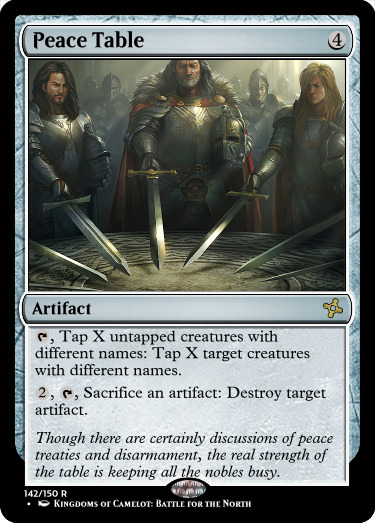
@mistershinyobject — Peace Table
Let’s get the good out of the way: I like how the middle ability gives a “swords to plowshares” kind of feel. That aspect works. That first ability, though, is missing a major wording. As it reads now, you can tap it and tap any number of creatures with different names — that you don’t control. And you can target those same creatures after. So, basically, for four mana your opponent never gets to attack again. I know that wasn’t your intention at all, but that’s the way the submission reads. Minor note: the flavor text should feel funny, but the art and concept is pretty serious, and it’s a little bit of a tonal clash.
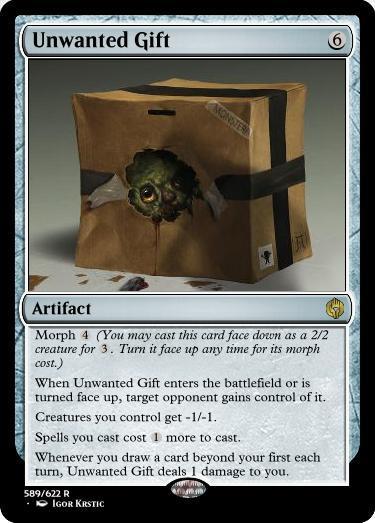
@misterstingyjack — Unwanted Gift
Surprise! It’s horrible. Not the card, though, because I love this card. I can see it going into a set with Morph, and that works perfectly well. It might have to be mythic, because holy shit a reverse Immortal Sun is still awful to deal with. And I take a LOT of issue with that last ability. Just have it punish for every card draw! It’s totally functional without that weird restriction.
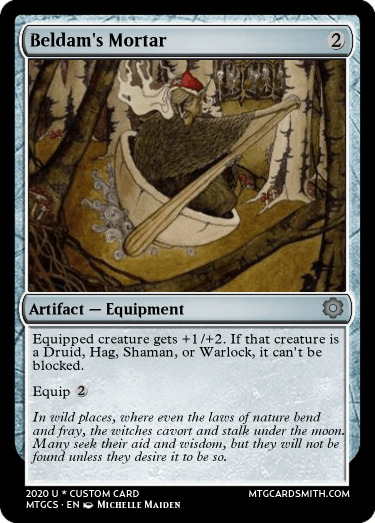
@nine-effing-hells — Beldam’s Mortar
This is my favorite artifact in terms of uniqueness. You added mythological aspects that are little-known but easy to grok, it feels magical, it seems cool, and it’s so unusual that you can’t help but to just plain love it. Now, the card. Using Bladed Bracers as a template, there should be one line for the equip buff, and another that says “As long as equipped creature is a Druid, Hag, Shaman or Warlock, it can’t be blocked.” I might take out either Druid or Shaman from that list, personally? Three might be the limit for batching. The flavor text could also talk a little bit more about the importance of the mortal itself as a means of transportation.
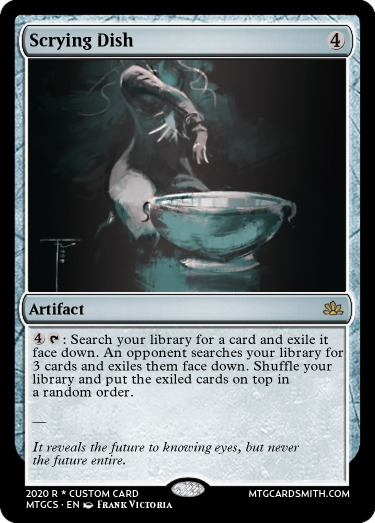
@nvijork — Scrying Dish
I have a soft spot for tutors. They are my absolute favorite cards. I love combo, control, unique synergy, all that crazy stuff. Additionally, I love randomness. So, there are two changes I would make to this card, one mechanical and two syntactically. The syntax one is that “3″ should be “three.” That’s just how Magic works. There should also be a comma after “(4).” Mechanically, I would also add that after you shuffle and put the cards on top, you draw a card. It’s the payoff to the scry, it bumps the power level up, and it justifies the cost. Overall, I really liked this card.
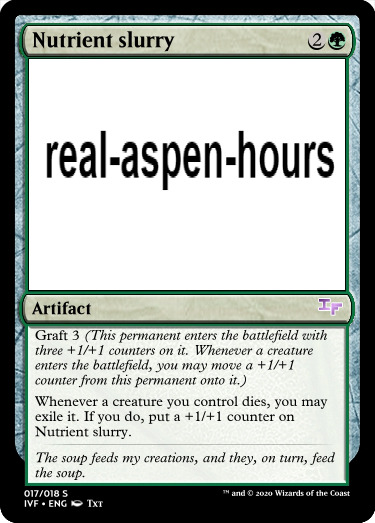
@real-aspen-hours — Nutrient slurry
I guess this card would be an uncommon? You gotta add rarity to text submissions. I think that for next week I’ll add an example post. Anyway, besides the name capitalization, I think that this card actually works really well. It feels green, it’s powerful enough, it’s synergistic with the game, and could see some pretty cool +1/+1 counter interaction. Not bad at all. The flavor text might need to be in quotes, because, well, it’s first-person. The card is pretty great, but the submission needs polish.
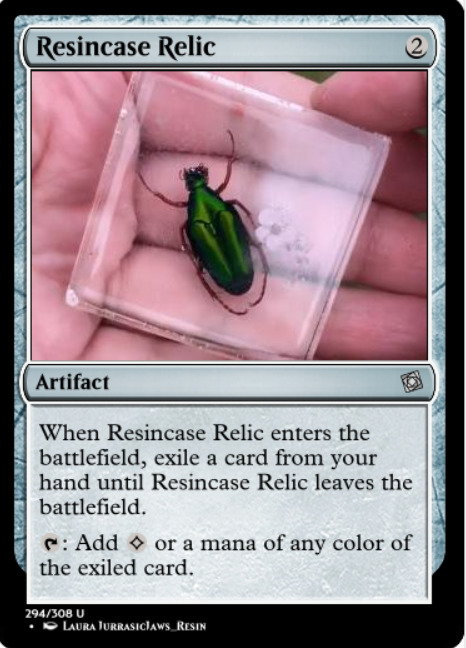
@reaperfromtheabyss — Resincase Relic
I really would have added imprint here. Although, would that imply that the card never comes back? It’s honestly not the worst price to pay. This is a perfectly functional mana rock, a theoretically budget version of Chrome Mox, and I’m okay with that. It should be “one mana” instead of “a mana,” looking at the Thriving lands and Chrome Mox itself. And two lines of flavor text wouldn’t have gone amiss here.
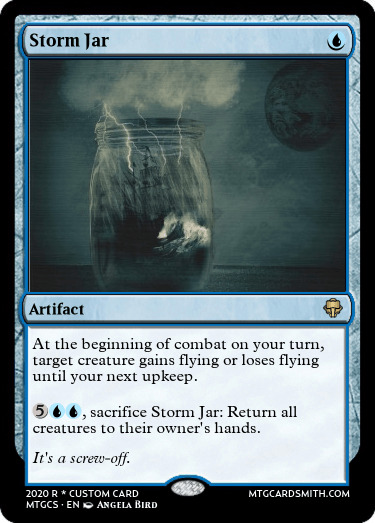
@scavenger98 — Storm Jar
I really want to like this card. For the first ability, I would absolutely make it a may ability — “you may have target creature gain or lose flying until end of turn.” Gotta simplify it. The second ability needs the “s” in “sacrifice” to be capitalized. This is a fun card mechanically, and very potentially powerful in limited! What’s with the flavor text, though? I don’t get it.
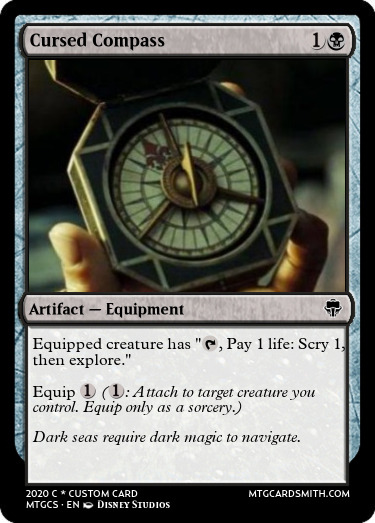
@shandylamb — Cursed Compass
So, major mechanical issue: You, as the player, don’t explore — the equipped creature explores. It would read: Equipped creature has “T, Pay 1 life: Scry 1, then this creature explores.” Easy enough fix, but needs to happen. Additionally, good lord, this should be at least an uncommon. Potential scrying and exploring each turn? Very powerful, moreso than I think you’re giving credit for. A great idea for sure, but NOT common, no sir. I like it, don’t get me wrong. Also, I assume this is from one of the Pirates movies. In the future, please clarify the specific piece of media.
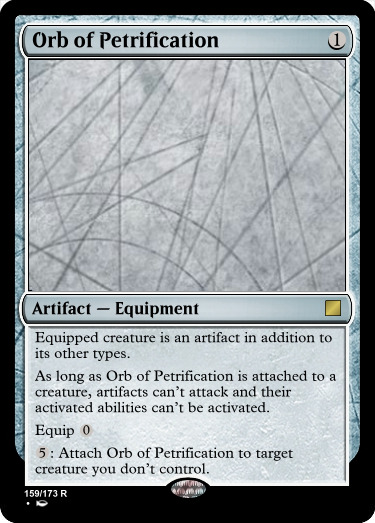
@starch255 — Orb of Petrification
This is a card that I really spent a lot of time thinking about. I still don’t know what to feel about it. It’s evident that you spend a lot of time thinking about this card and putting it together, and I want to give you credit for that first and foremost. The second ability is really weird to me, because it prevents the orb itself from activating its abilities, and it shuts down all artifacts on board? I’m not positive how that works flavorfully. It’s not bad. It’s probably super powerful in commander, not gonna lie. Control magic out the wazoo. I’m still on the fence about this one. Fine in standard, fine in limited, probably part of a frustrating combo in eternal formats. Still gotta congratulate you for the design process.

@teaxch — Semaphore Flag
Another really cool choice for a unique artifact. Functionally fun as a build-around. The card needs some kind of basic flavor text, because man it’s looking blank as heck right now. But older cards do that sometimes. Maybe I’m just a stickler for these sorts of things. Overall: probably fine. Probably not gonna see play except for in that deck made by That Guy that copies a buttload of artifacts.
~
Thank you all for your submissions! New contest tomorrow. Get the creative juices flowing.
#mtg#magic the gathering#custom magic card#contest#entries#commentary#unique artifact#inventor's fair
15 notes
·
View notes